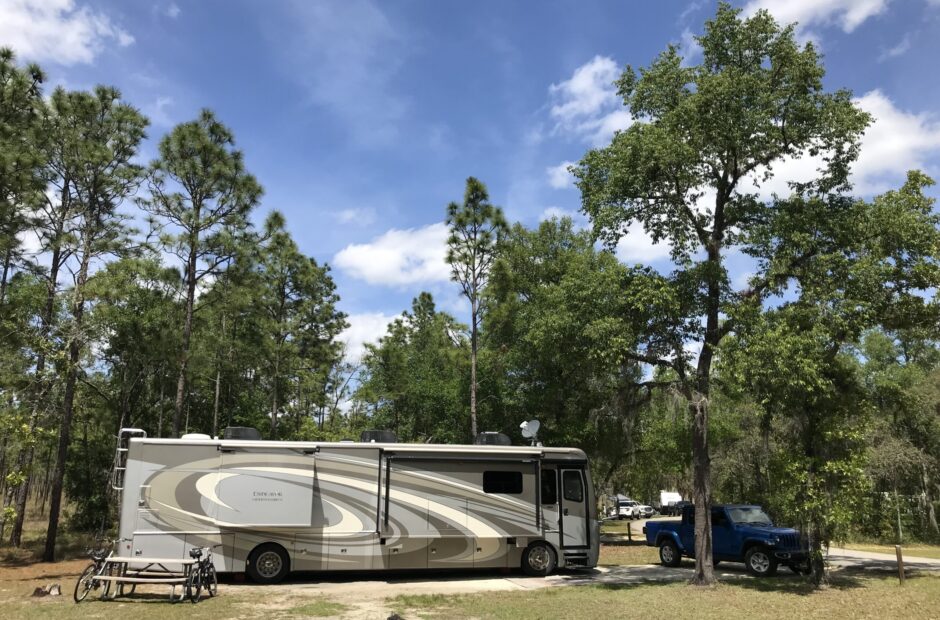St. Bernard State Park, Braithwaite, Louisiana
When Tamar was told, “Your father-in-law is on his way to Timnah to shear his sheep,” she took off her widow’s clothes, covered herself with a veil to disguise herself, and then sat down at the entrance to Enaim, which is on the road to Timnah. For she saw that, though Shelah had now grown up, she had not been given to him as his wife. When Judah saw her, he thought she was a prostitute, for she had covered her face. ~ Genesis 38:13-15 Thus Tamar takes matters into her own hands. And God permits it, despite the fact that it was wrong. What was it about Tamar sitting by the road that would make Judah think she was a prostitute? Well, it seems that, just like the street-walkers of today, prostitutes of Judah’s time (1650-1700 BC) would position themselves alongside the road waiting for men to ‘drive by’ looking for love. That must’ve been some veil she wore – and kept wearing – that Judah never recognized her!

We spent most of Friday indoors. It was cold. It was wet. But we couldn’t stay cooped up all day, especially since we were planning on eating chocolate cake and philly steak sandwiches – on the same day. So the best thing we could think to do, was go out and walk briskly up and down the aisles at Walmart. We didn’t manage the brisk part very well, because Blaine picked up a shopping cart when we walked in. It’s hard to walk briskly with one of those; that is, if you don’t want to plow people over. But we did walk extra aisles just to get in a few steps for the day. Never came anywhere close to counteracting all those calories though.
Saturday, we were out and about, despite that fact that it only hit the low forties, and it was breezy! When we left at 9:45am, it was 37!
We drove to the French Quarter this year (in 2018 we took the ferry from Algiers Point), with our main objective being the Presbytère Museum.

The Presbytere was designed in 1791 to match the Cabildo, alongside St. Louis Cathedral in the French Quarter. It stands today as a beautiful reminder of both Louisiana’s singular past and its vibrant present. The Presbytere, originally called Casa Curial or “Ecclesiastical House,” was built on the site of the residence, or presbytere, of the Capuchin monks. The building was used for commercial purposes until 1834 when it became a courthouse. In 1911, it became part of the Louisiana State Museum. Two exhibitions are on display-“Living with Hurricanes: Katrina and Beyond” tells of rescue, rebuilding and renewal, and “Mardi Gras: It’s Carnival Time in Louisiana” captures the fun and fantasy of the annual celebration. ~ TripAdvisor.com

We tried to visit this place last time we were here, but it was closed. Neither of us can remember why. We also discovered that we could get a discount on the sister museum, The Cabildo (Spanish for ‘town hall’), in a twin building. The Cathedral stands between them. The Cabildo holds Louisiana history.
The Cabildo was built under Spanish rule between 1795 and 1799, following the Great New Orleans Fire of 1788 that completely destroyed the structure that stood on the property. Designed by Gilberto Guillemard, who also designed the neighboring St. Louis Cathedral and the Presbytère, the Cabildo was the site of the Louisiana Purchase transfer in 1803, which finalized the United States’ acquisition of the Louisiana Territory and doubled the size of the fledgling nation.
The Cabildo served as the center of New Orleans government until 1853, when it became the headquarters of the Louisiana State Supreme Court, where the landmark Plessy v. Ferguson decision originated in 1892.
The building was transferred to the Louisiana State Museum in 1908 and has since served to educate the public about Louisiana history.
In 1988 the Cabildo was severely damaged in an inferno and, within five years, the landmark was authentically restored with 600-year-old French timber framing techniques. It was reopened to the public in 1994, featuring a comprehensive exhibit on Louisiana’s early history. ~ from their website
We looked at a lot of NOLA (New Orleans LouisiAna) history today, but I’m not sharing. Why? Because I shared quite a bit of it a few years ago. If you want to learn more, look up our posts from 3/23 – 26/2018.
If you don’t want to go to the trouble, I still took a good number of pictures today. 😊
Fortunately, Blaine had heard that Louisiana (or is it just New Orleans??) requires not only masks to enter restaurants, but also a vaccination card! (I’m choosing not to make a statement about that.) So when we made our first stop at Café Beignet, there was this poor lady standing at the door checking everything. I felt bad for her – it was freezing outside – especially in the shade! I cannot describe how heavenly these things are! Served hot, they’re sorta kinda like funnel cakes, but oh, sooooo much better! Hot squares of deep fried dough; crispy on the outside, but soft in the middle, smothered in powdered sugar.

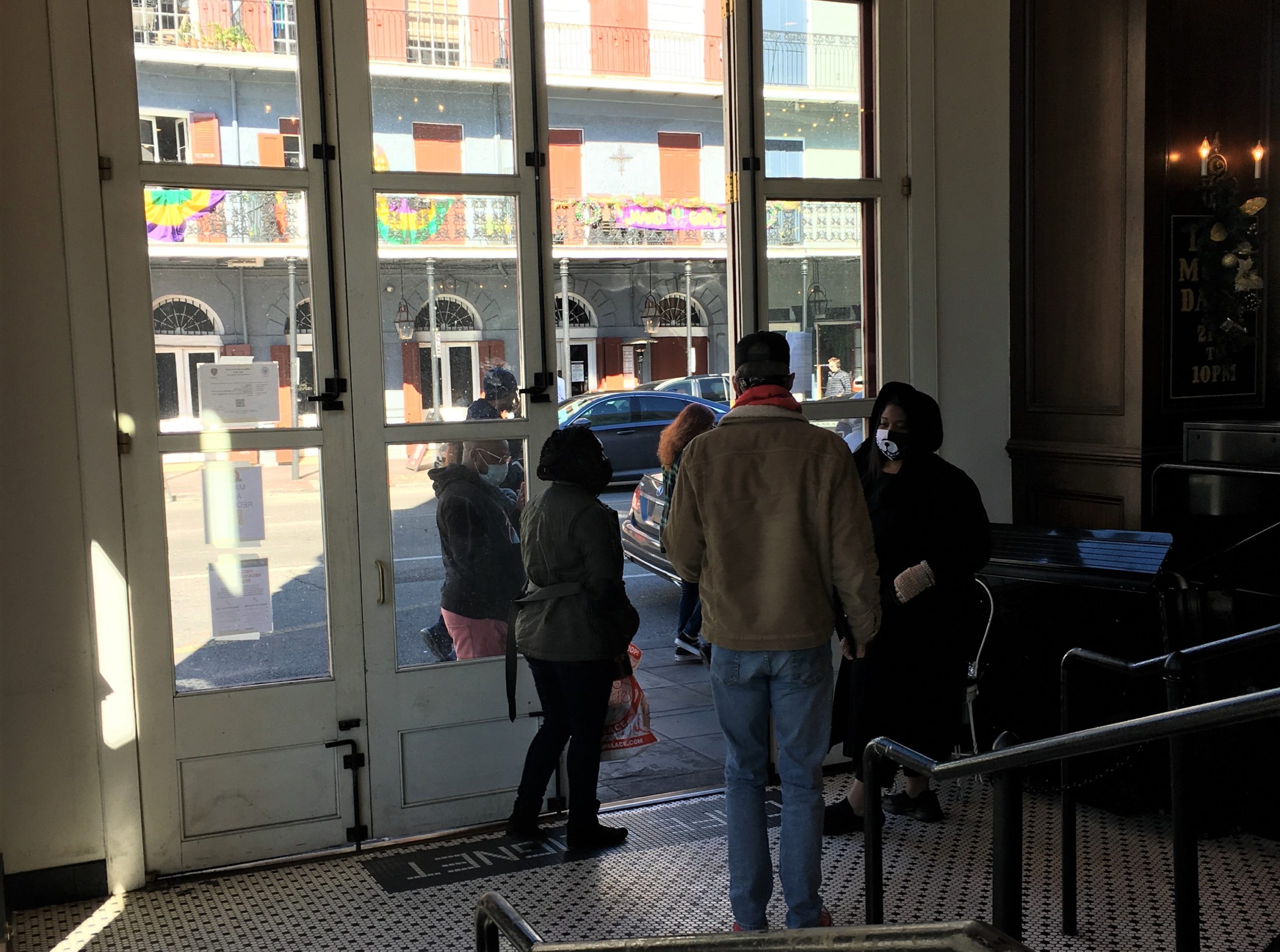

Now that we’ve washed the powdered sugar off our faces and fingers and brushed off our clothes; let’s take a walk up the street to the church and museums.
First stop, the Presbytère, which solely holds information on Mardi Gras and Hurricane Katrina.
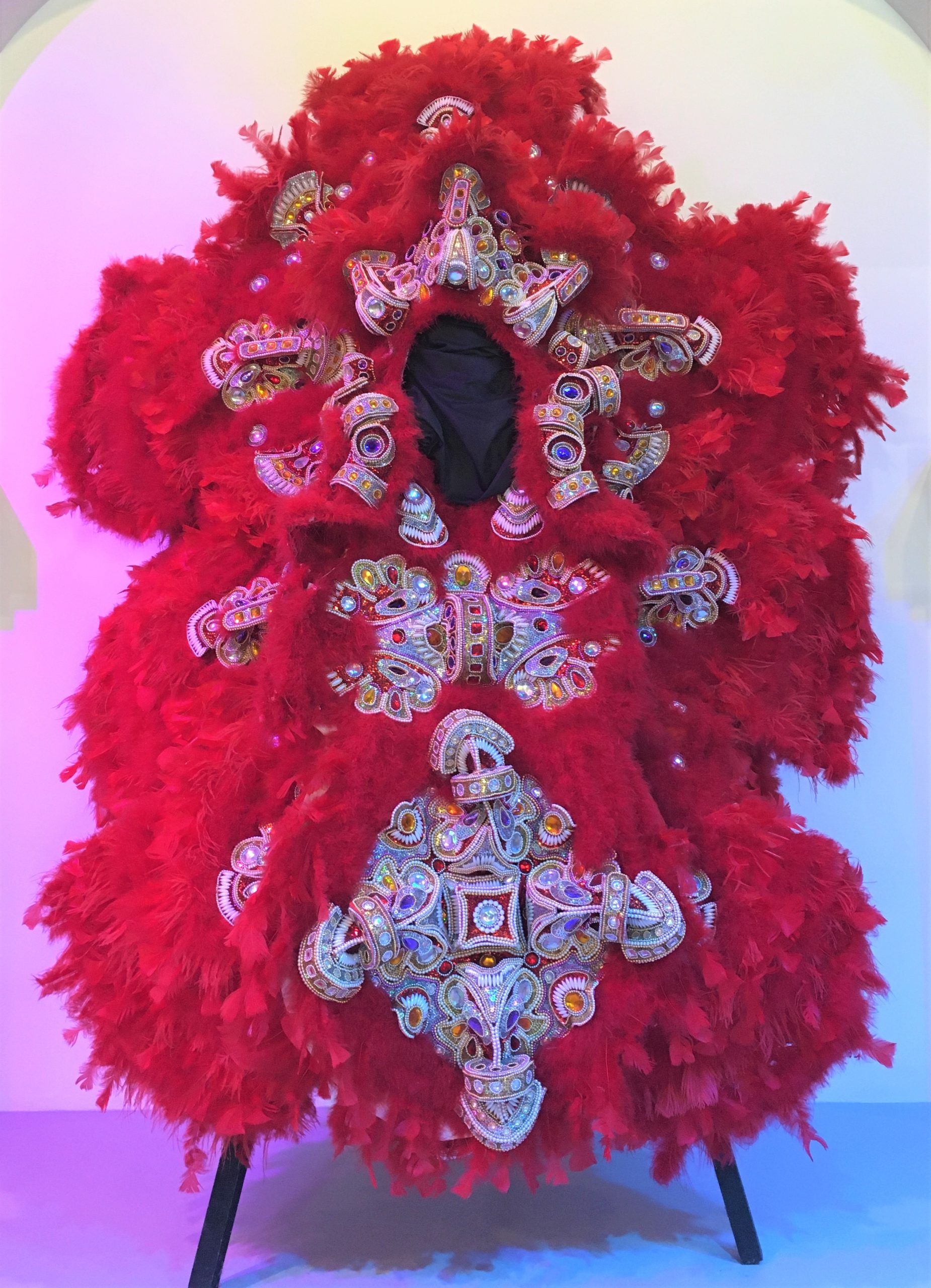
The average costume weighs more than 50#, and some can weigh upwards of 150#!!
They cost an average of $1,000 – $6,000 and are worn only one season.
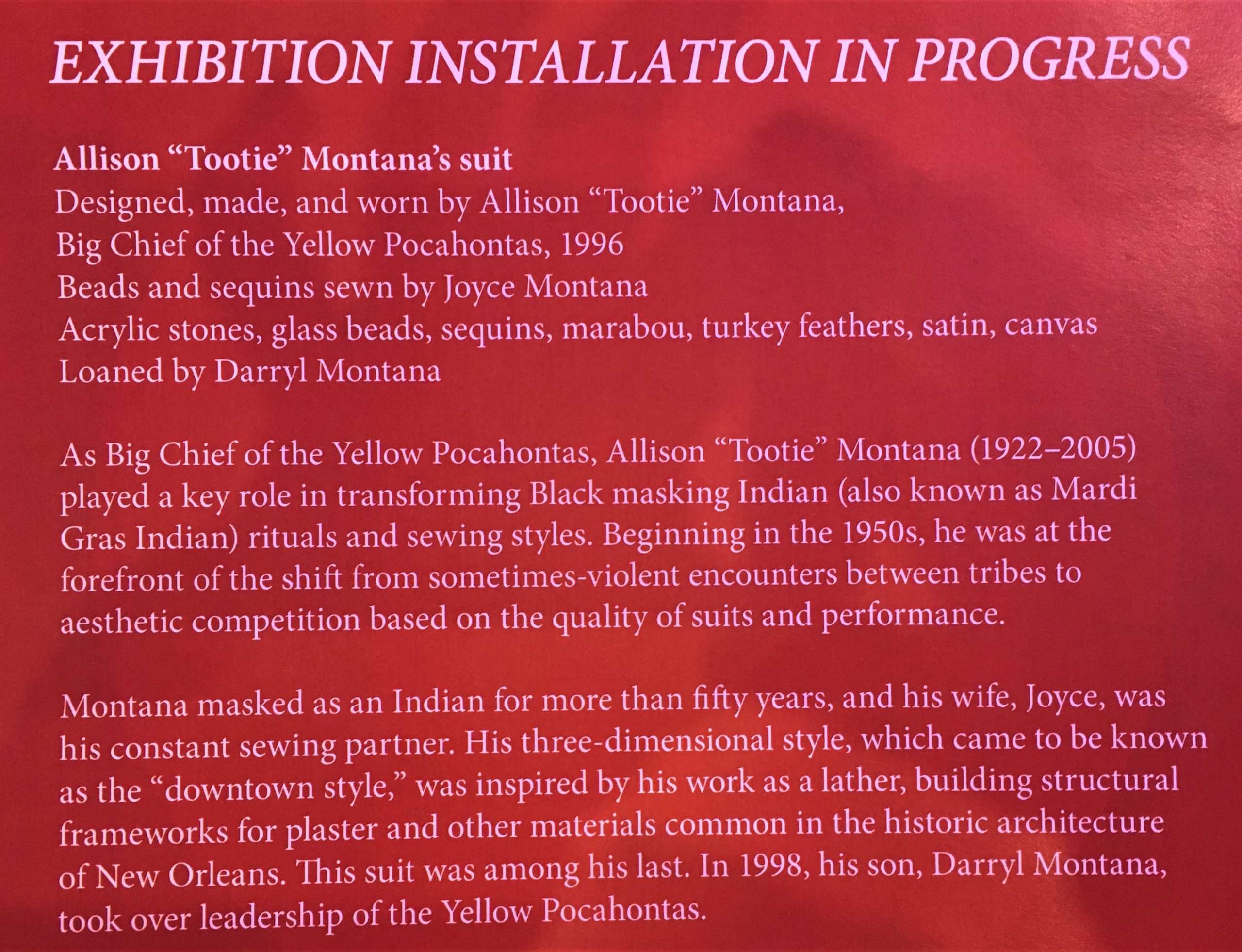
Below are a few ‘nutshell’ facts about Katrina in New Orleans and pictures (aftermath pictures courtesy of washingtonpost.com) on Katrina in the New Orleans area (because I don’t have enough pictures from the museum (she said sarcastically 😊):
August 28th, the mayor orders a mandatory evacuation, and 1.2 million people left town. But tens of thousands couldn’t or wouldn’t leave.
Landfall was August 29th at 8:00am.
There was a 19’ storm surge. In Mississippi, it was 26’!
By the afternoon of August 29th, 20% of the city was underwater.
By August 30th, 80% of the city was underwater.
To me, it seems the reason everyone focuses on the damage in New Orleans, is because of all the additional flooding caused by the levee breeches and the condition the people who stayed behind found themselves in.




It was cut apart and removed in 2006.



This is the Parish we’re currently staying in.
St Bernard was the only parish in the New Orleans region completely flooded.
It ranged from 8-14′ underwater. As a result, the entire Parish had to demolish thousands of homes, but they are now the fastest recovering and growing parish in Louisiana. From 2010 to 2020, it grew 21%, while other surrounding Parishes have grown an average of 11%.
The following is information we gleaned from the museum (aka our own pictures 😊). I will warn you though, it was pretty dark, so the pictures didn’t turn out the best. Hopefully, you’ll still be able to read and see them okay, if you’re interested.

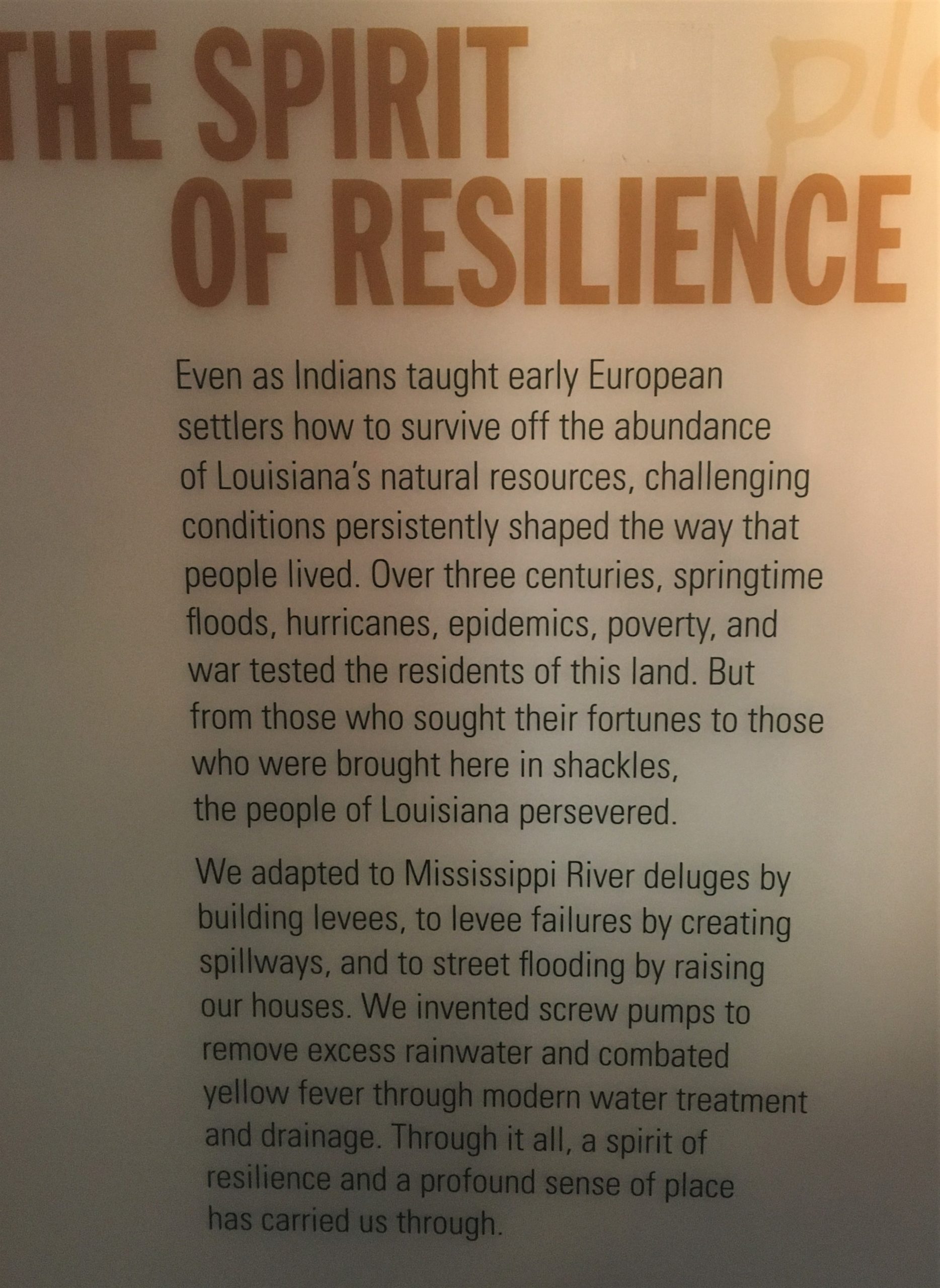
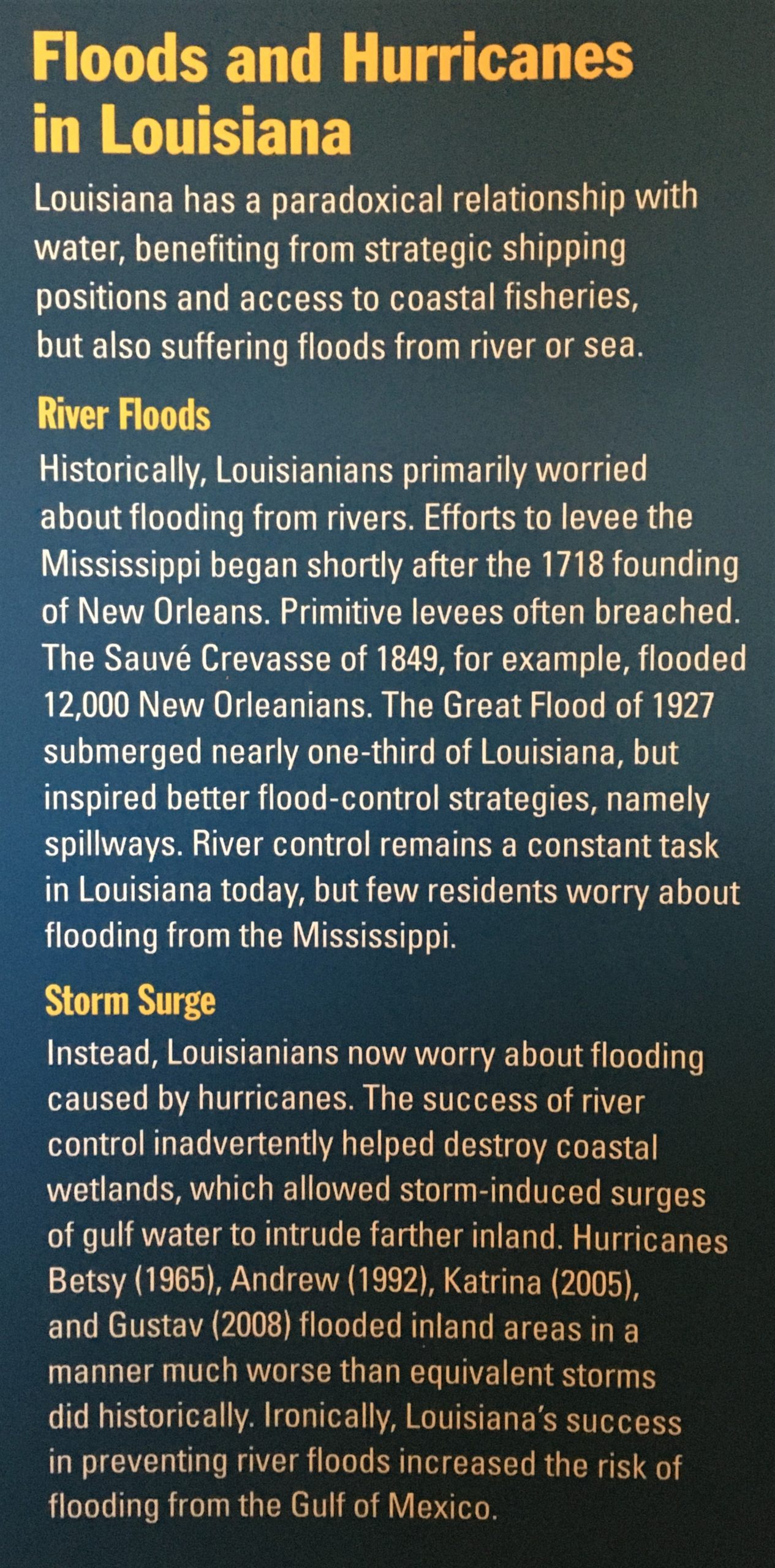
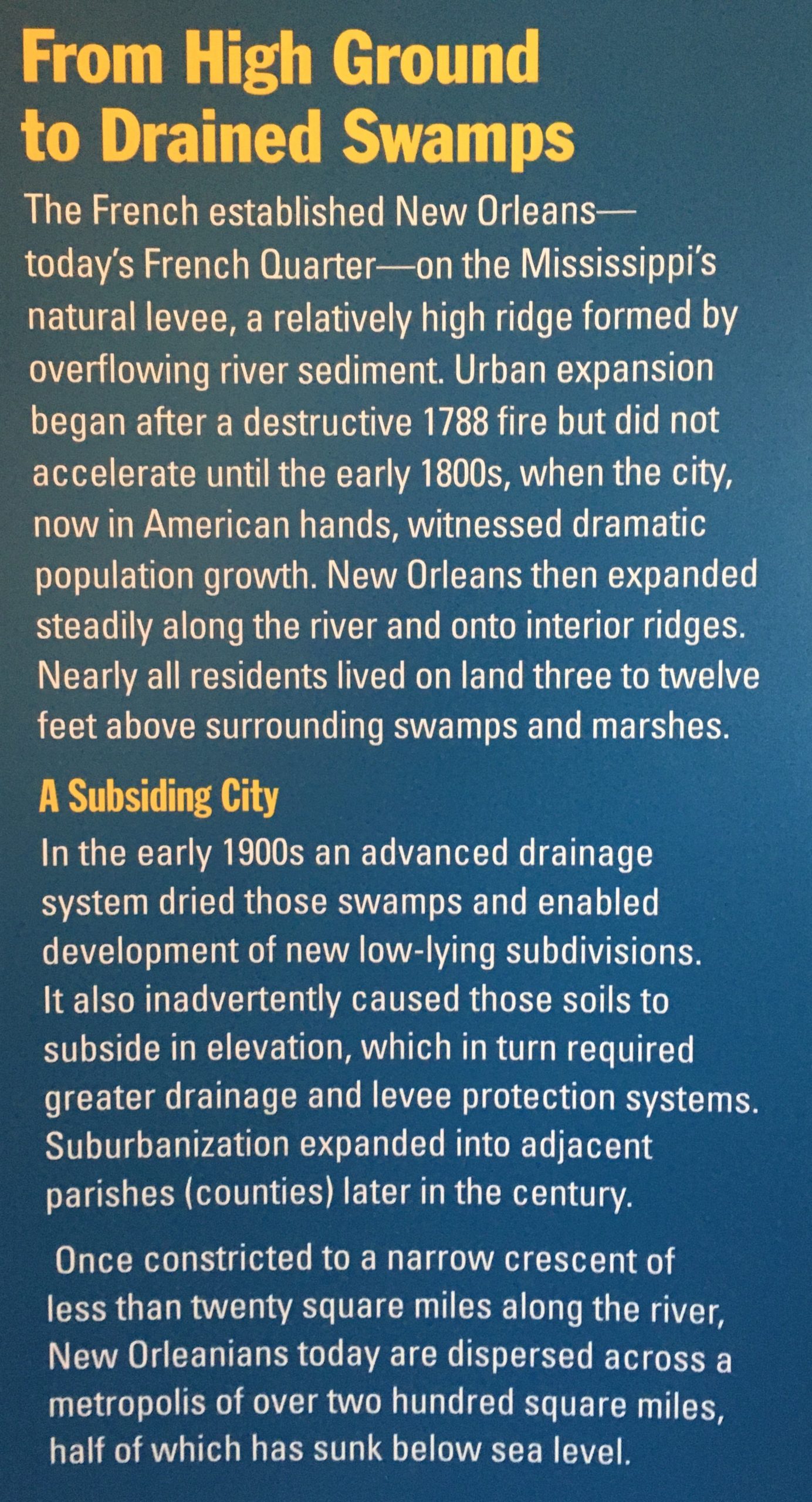

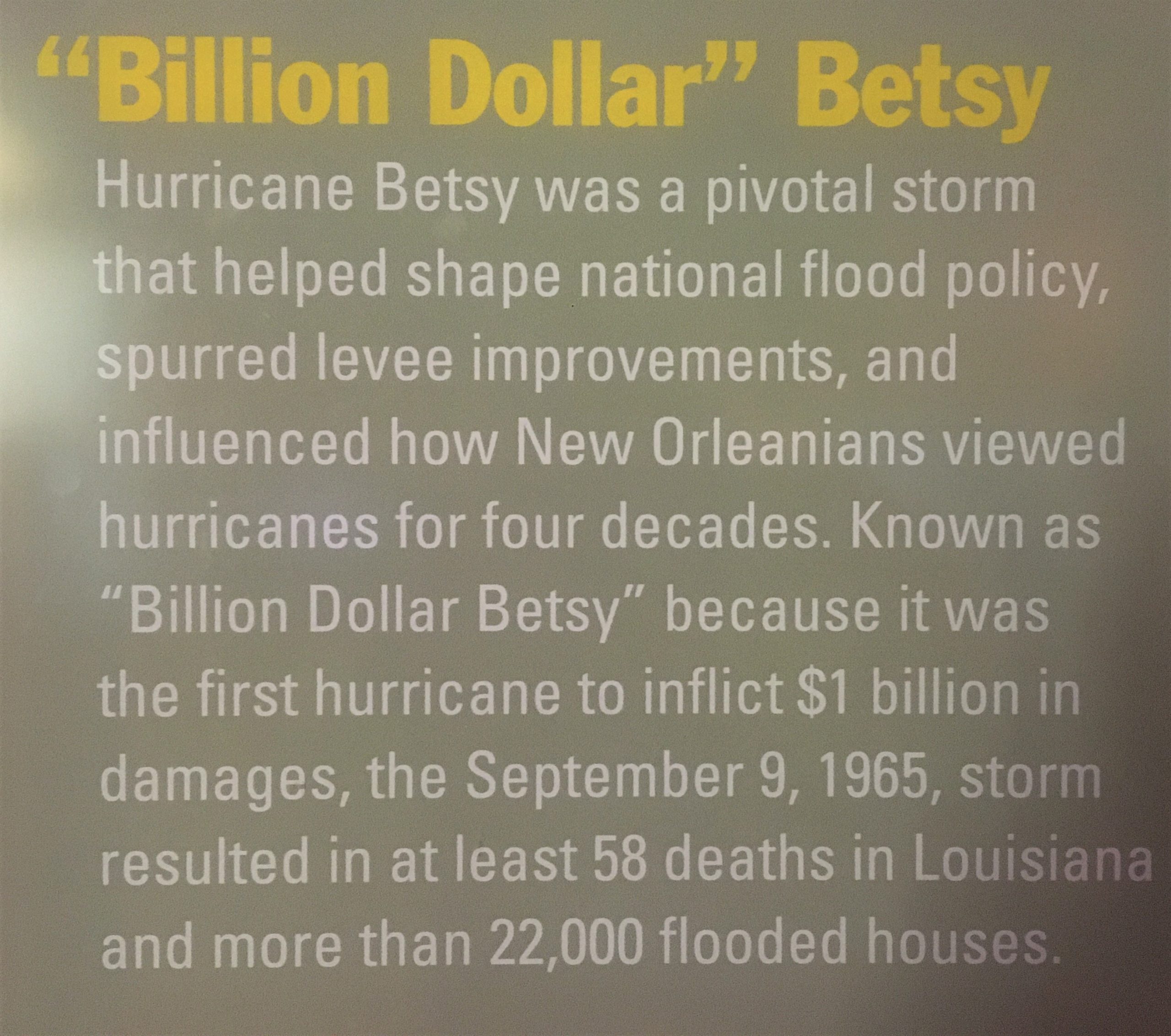

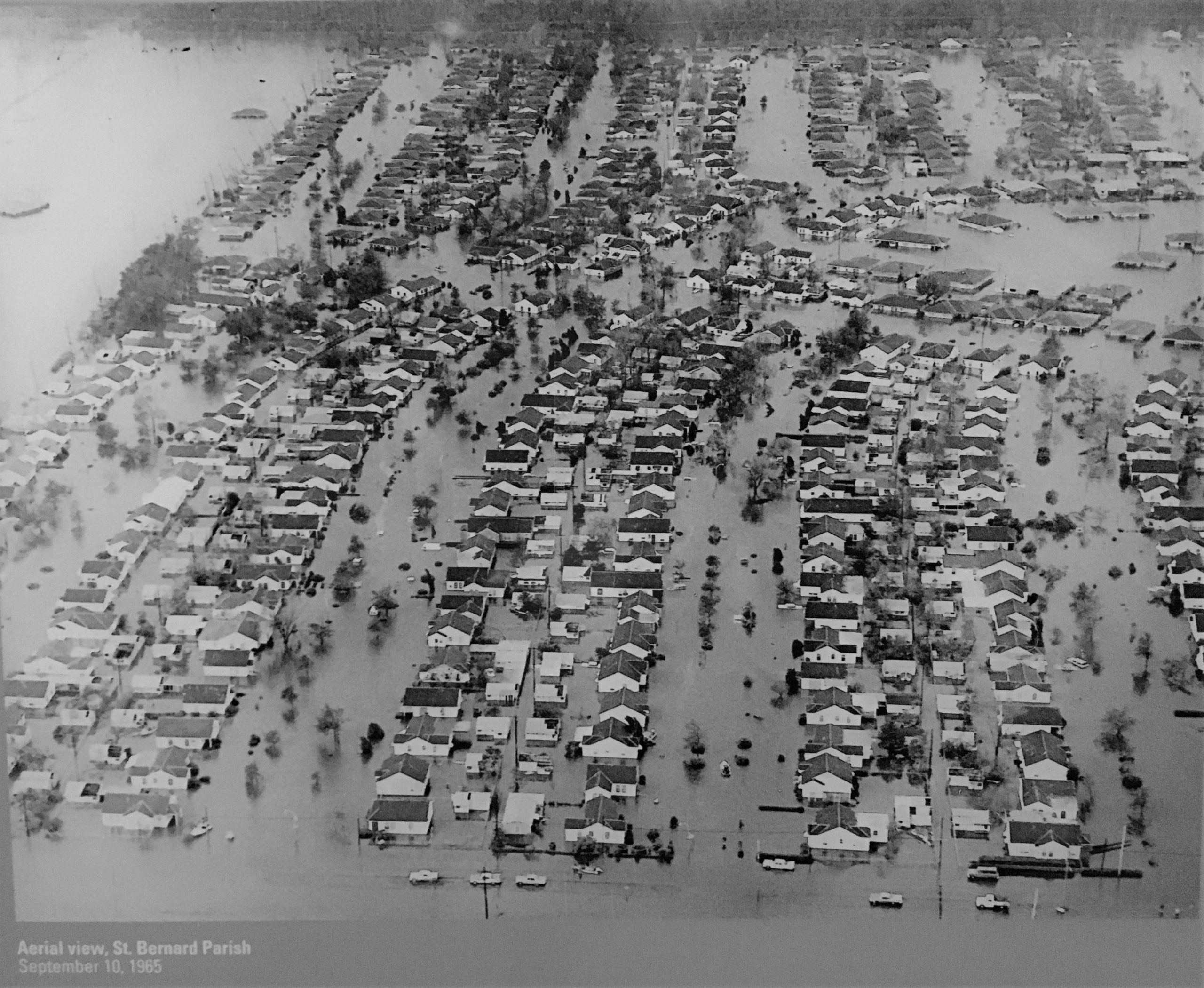
It looks similar to the one after Katrina, but you can tell there’s not as much water here.
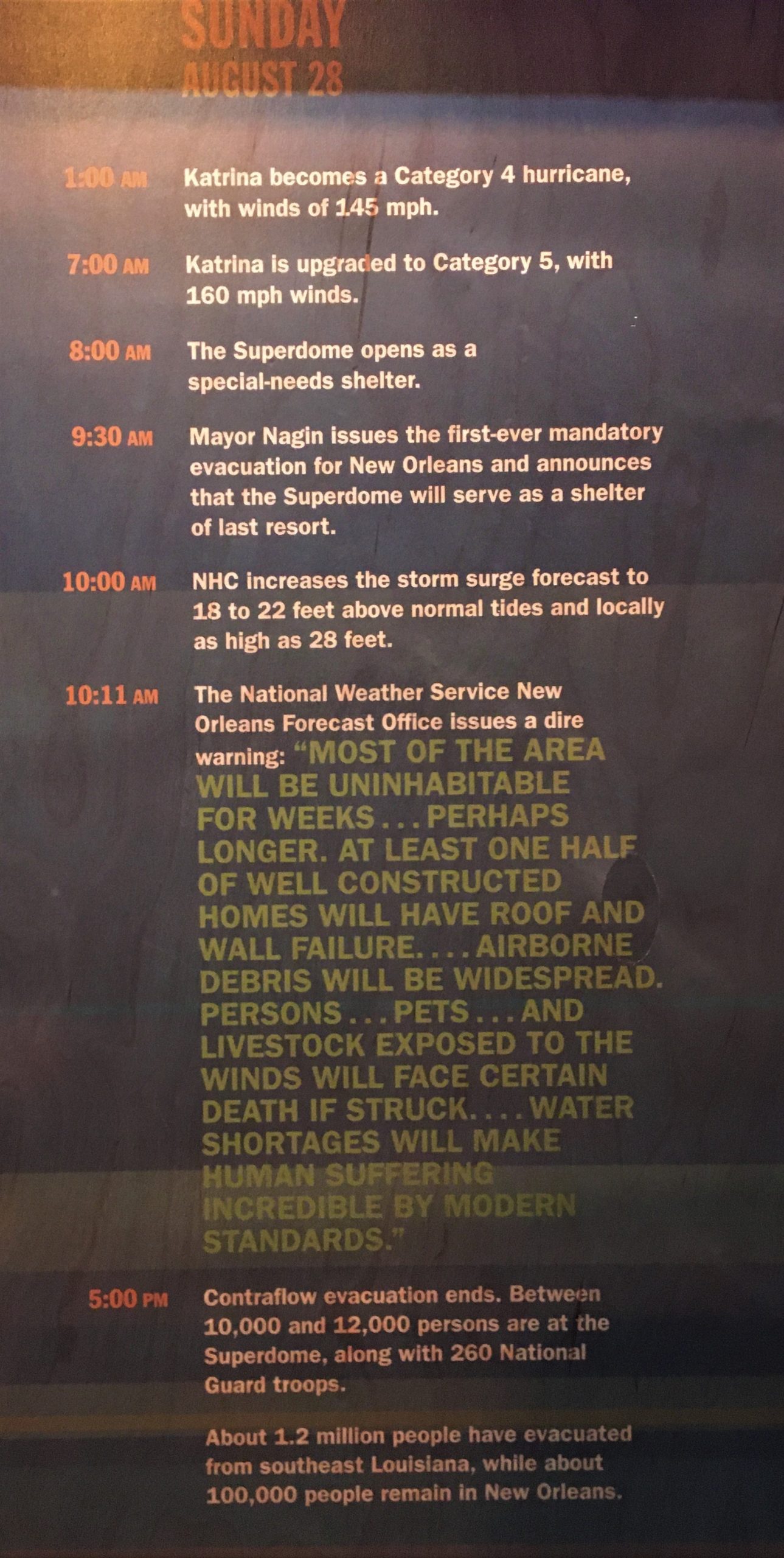
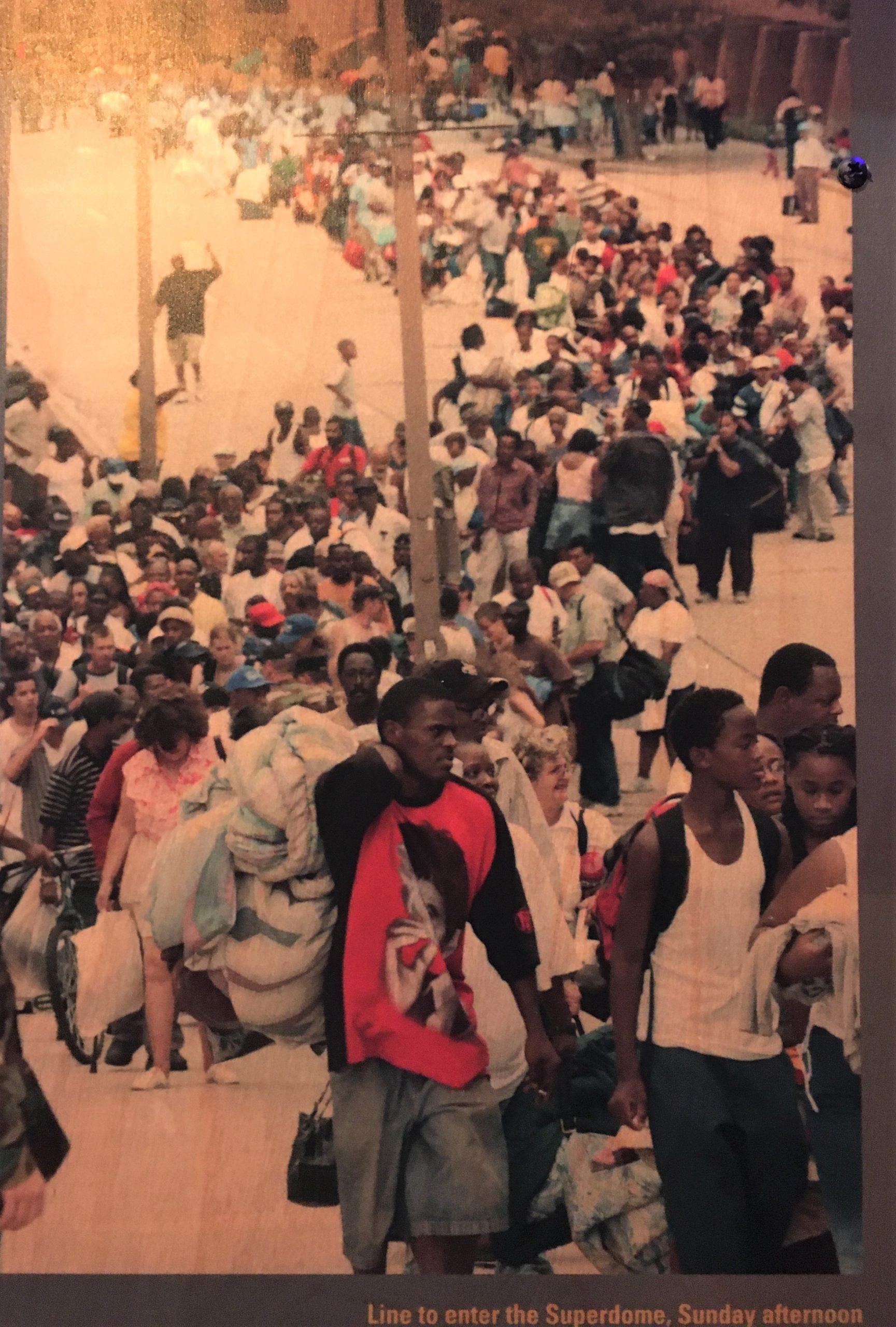
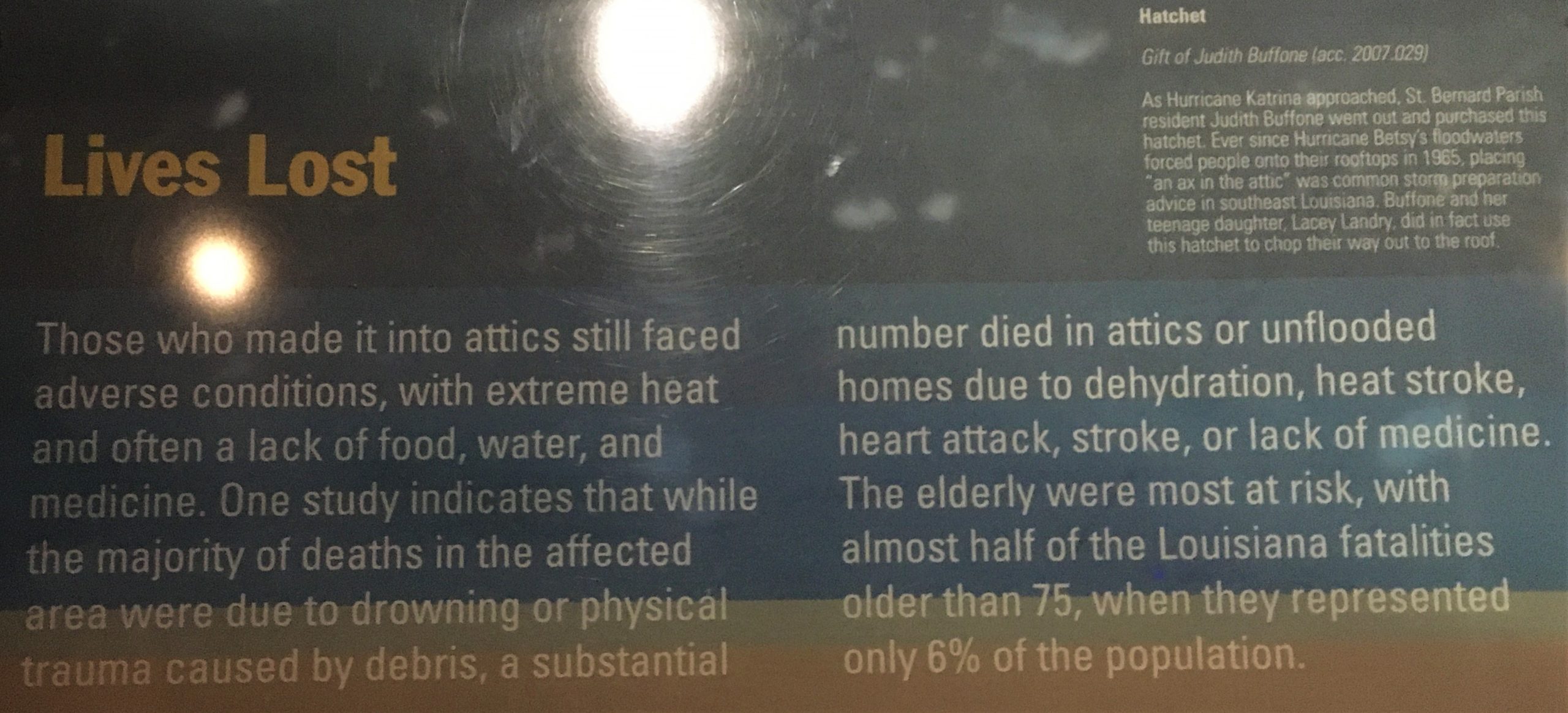

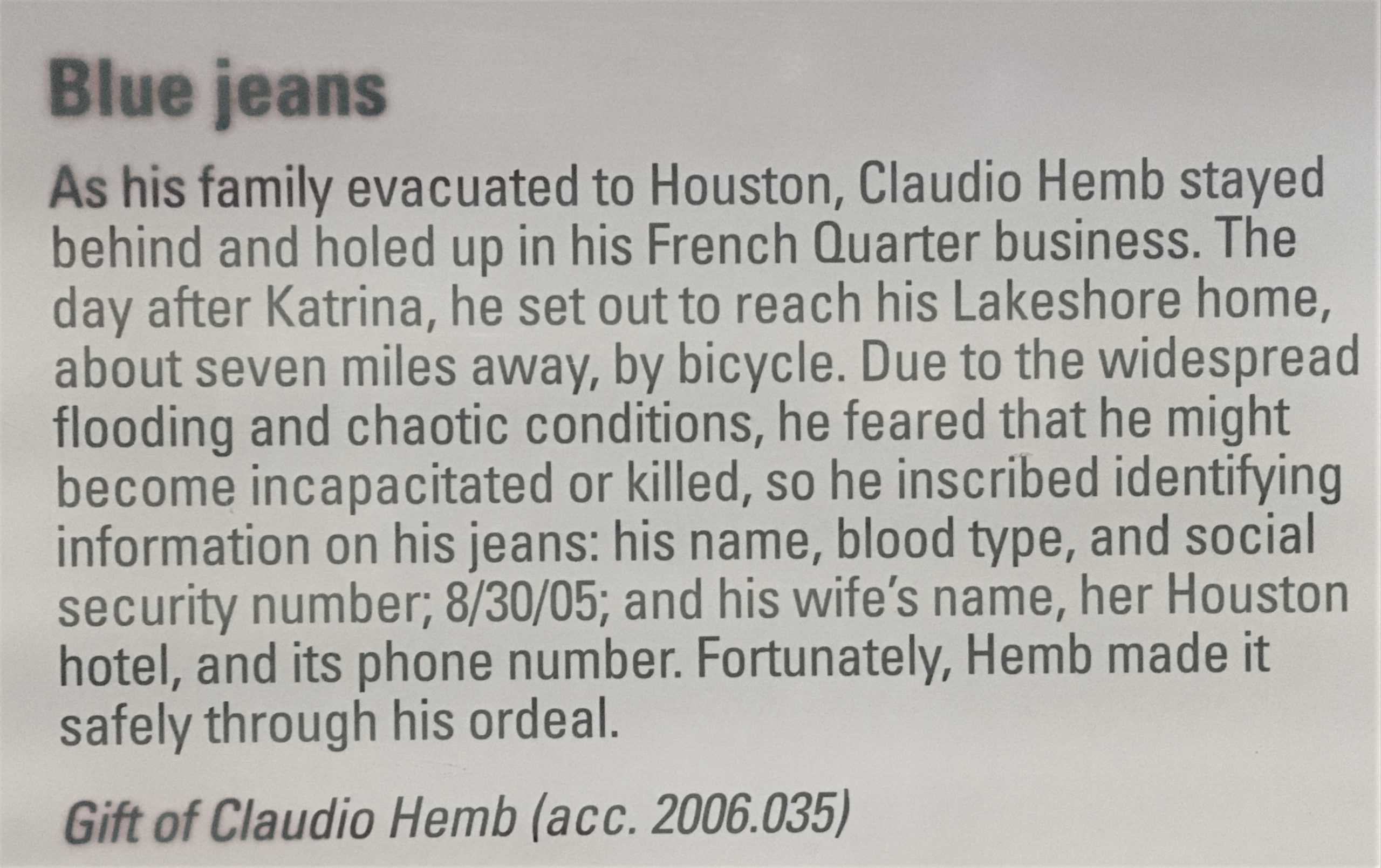


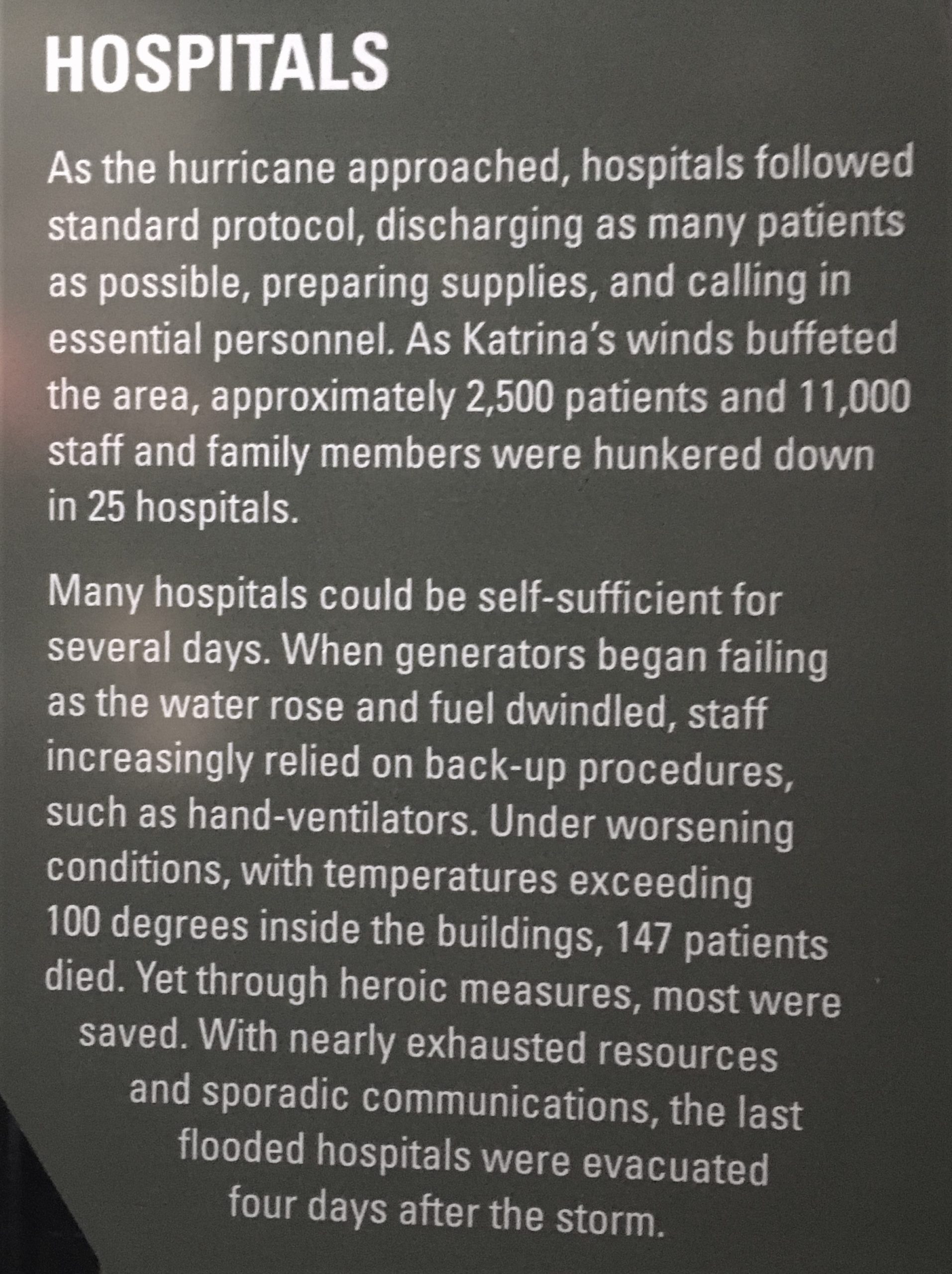

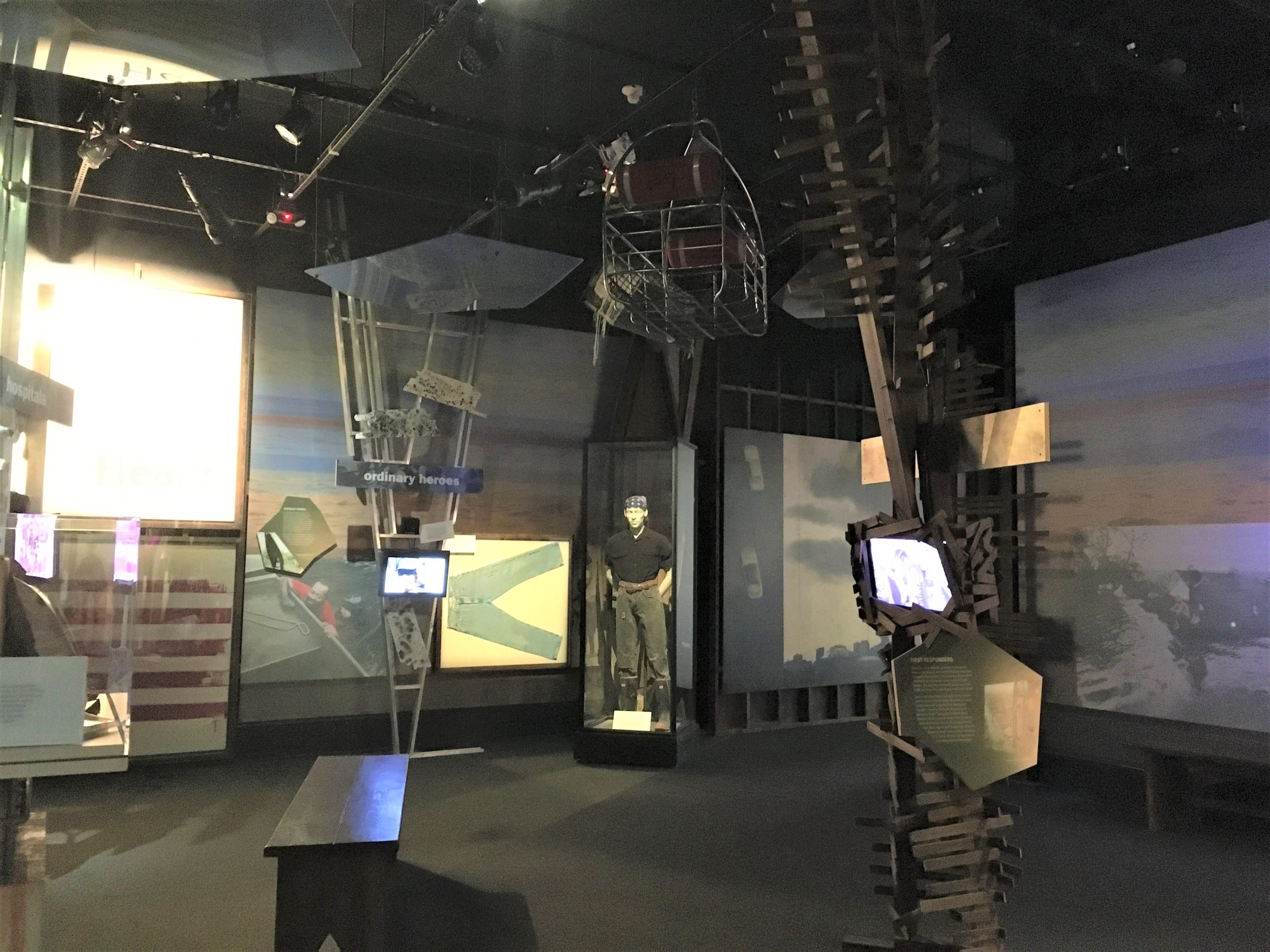

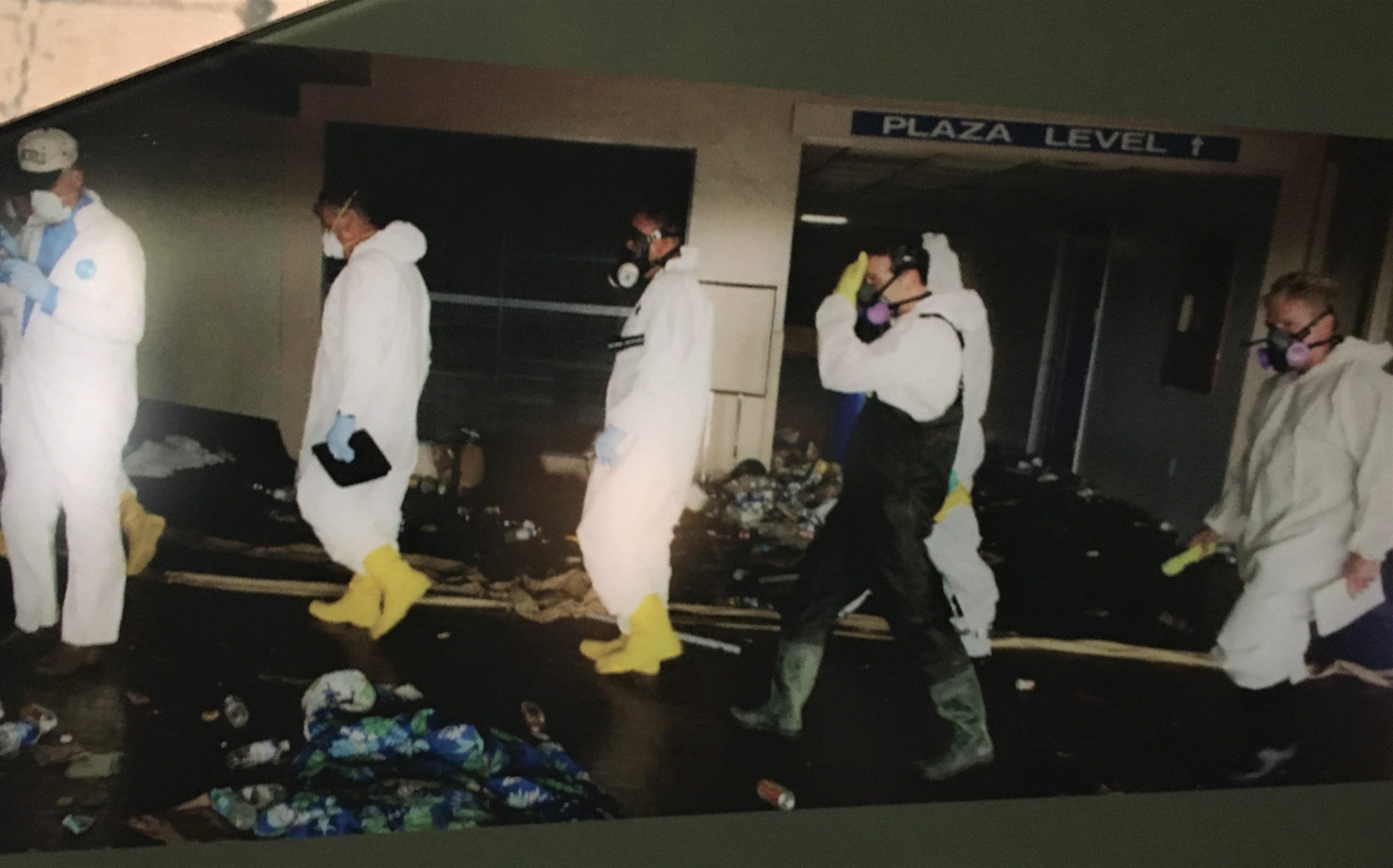
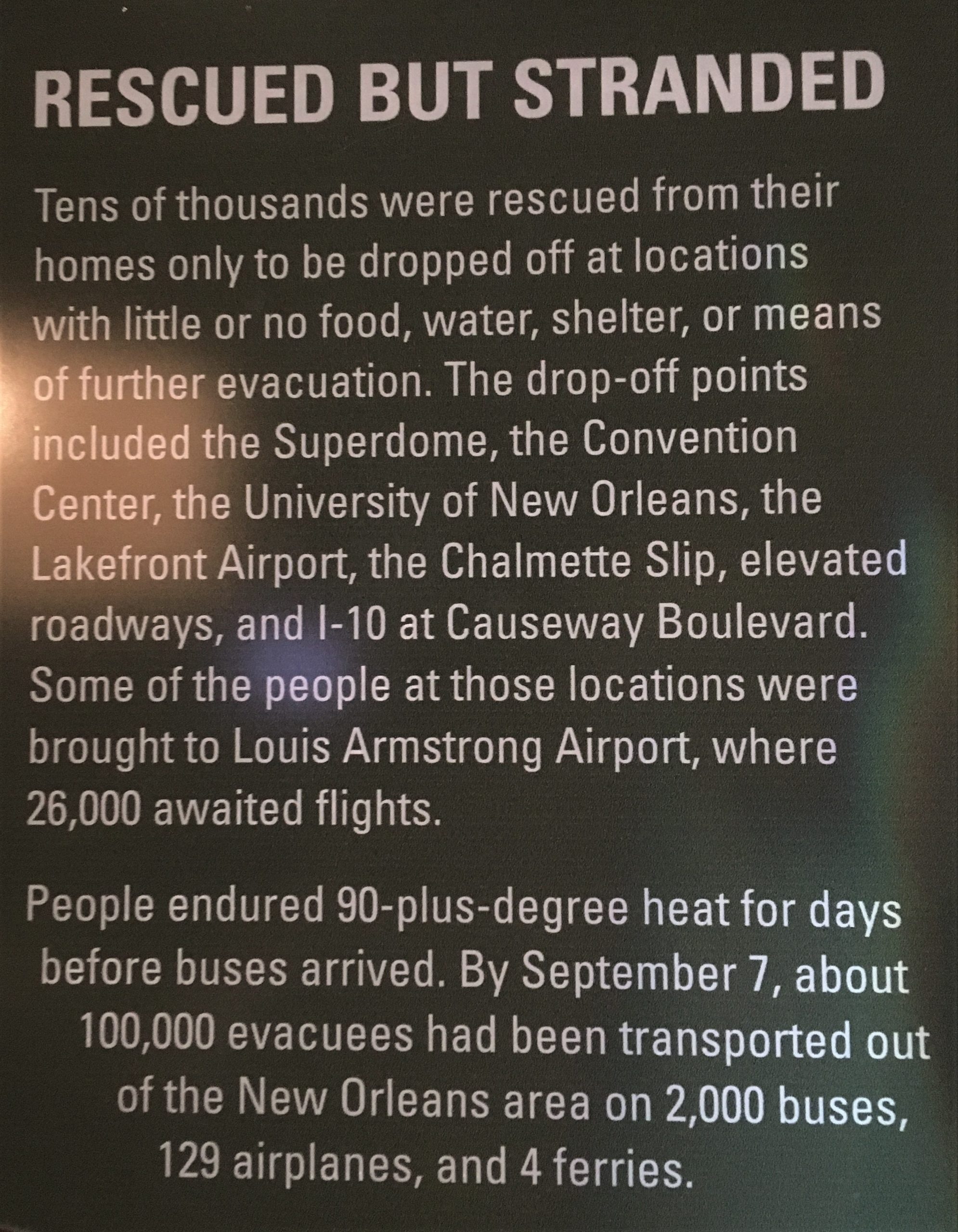



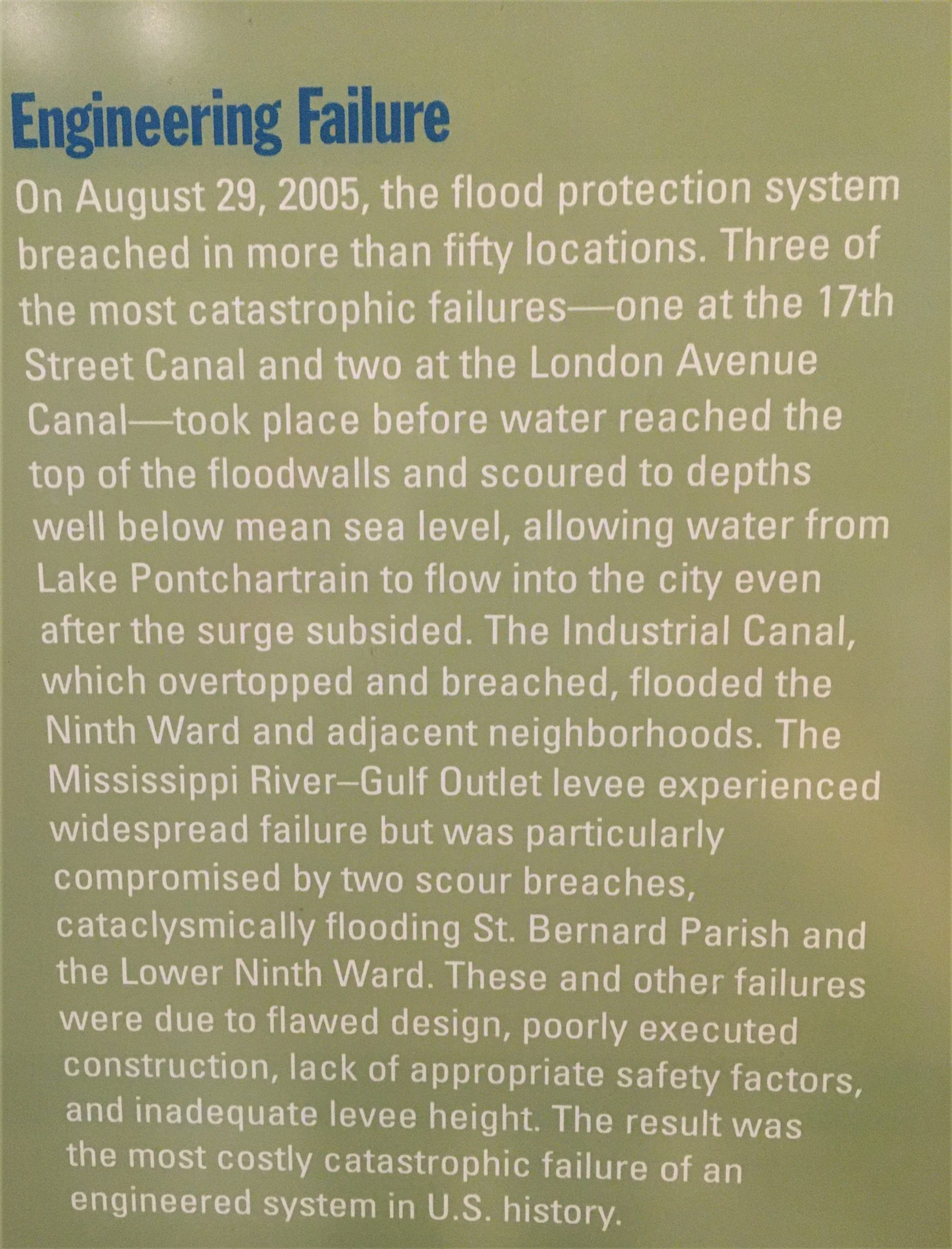
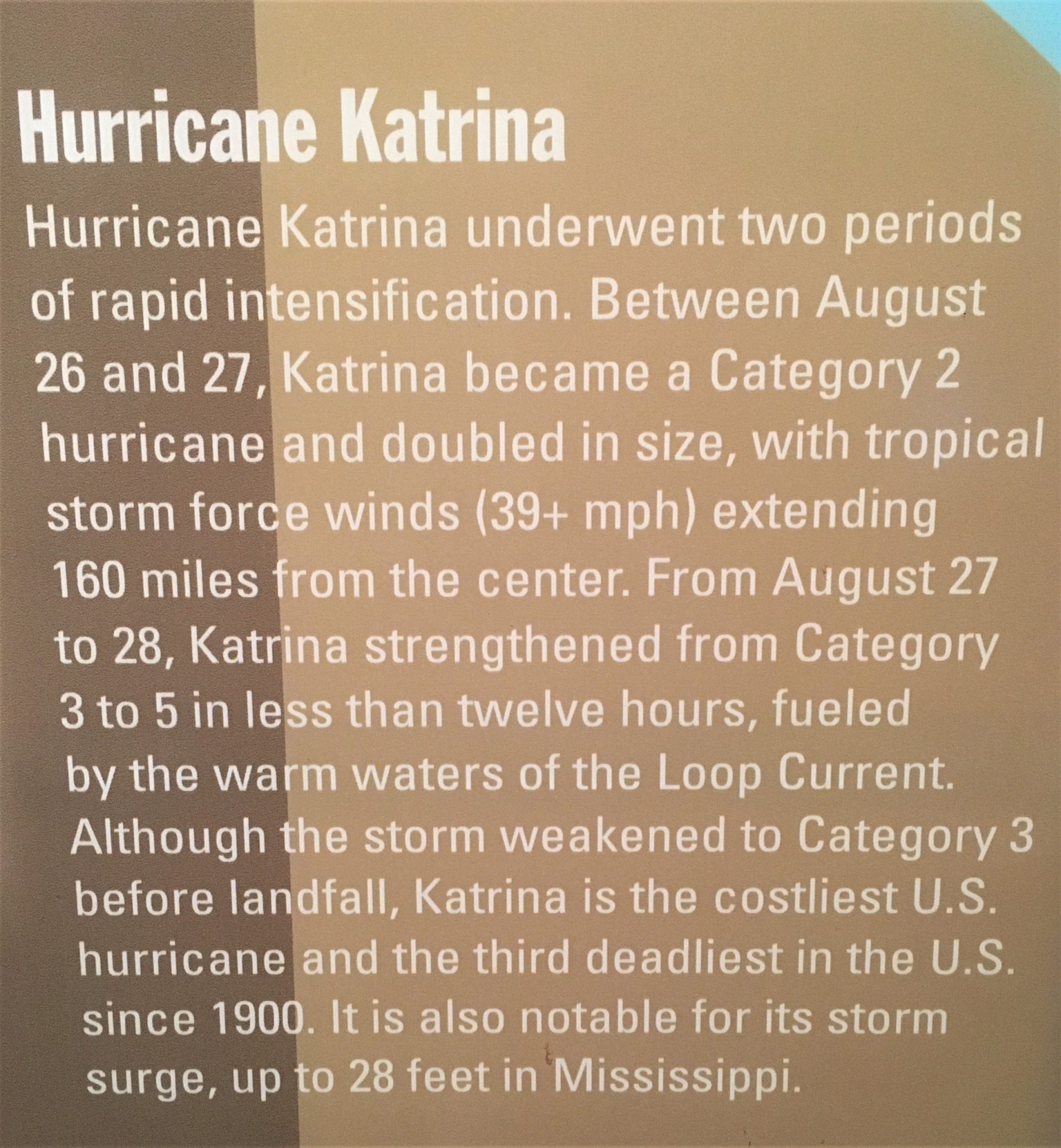





Where do you even begin???
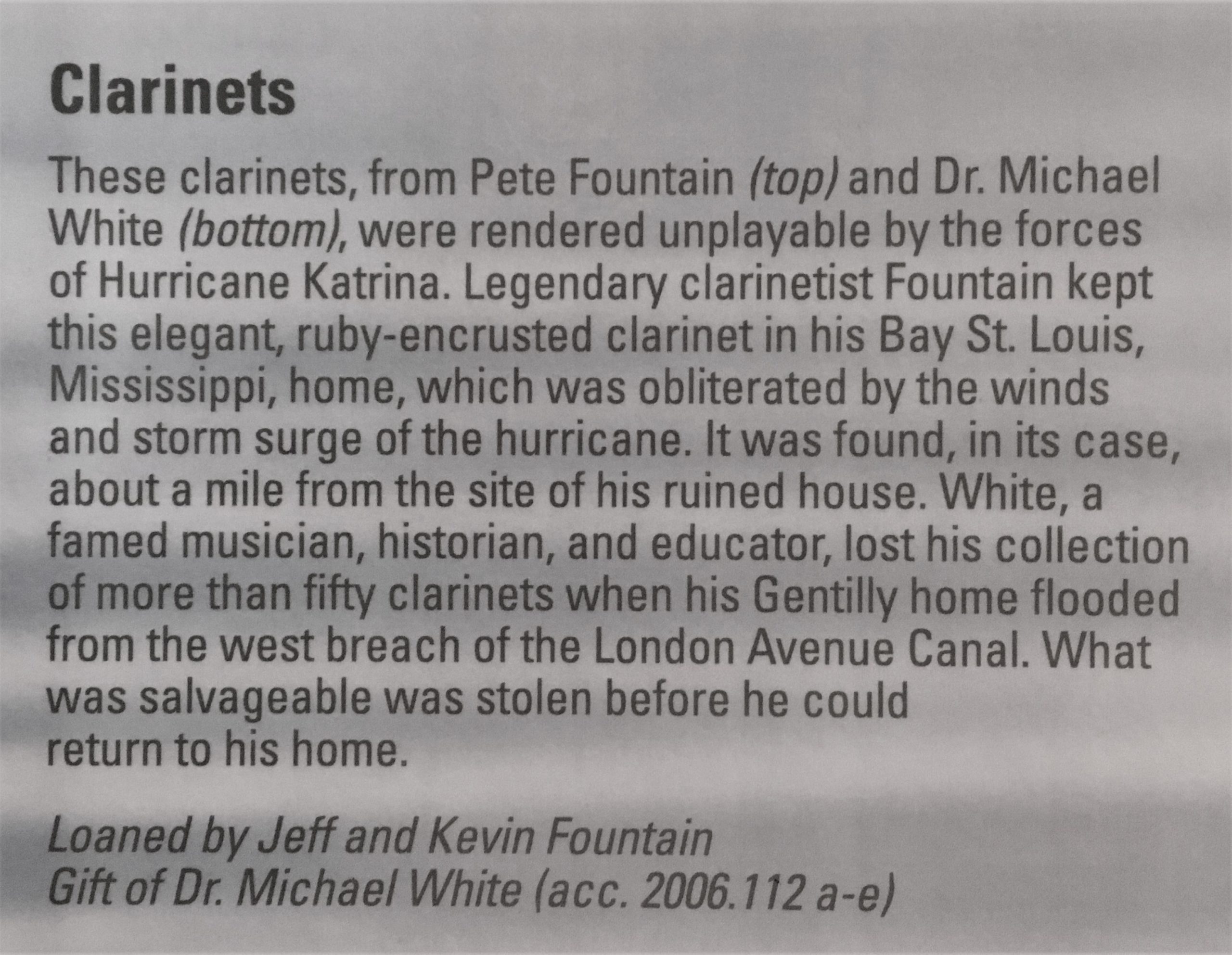

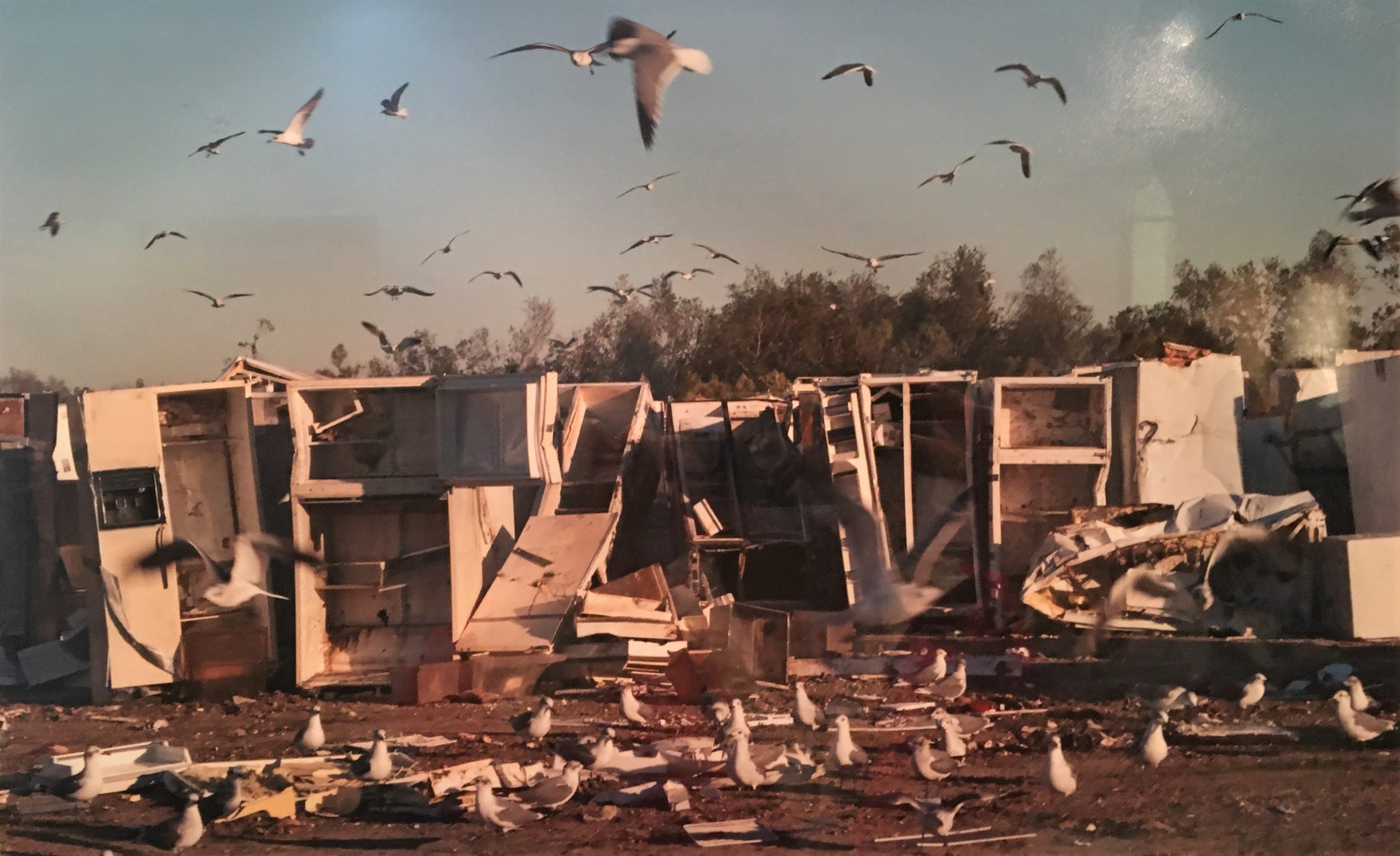
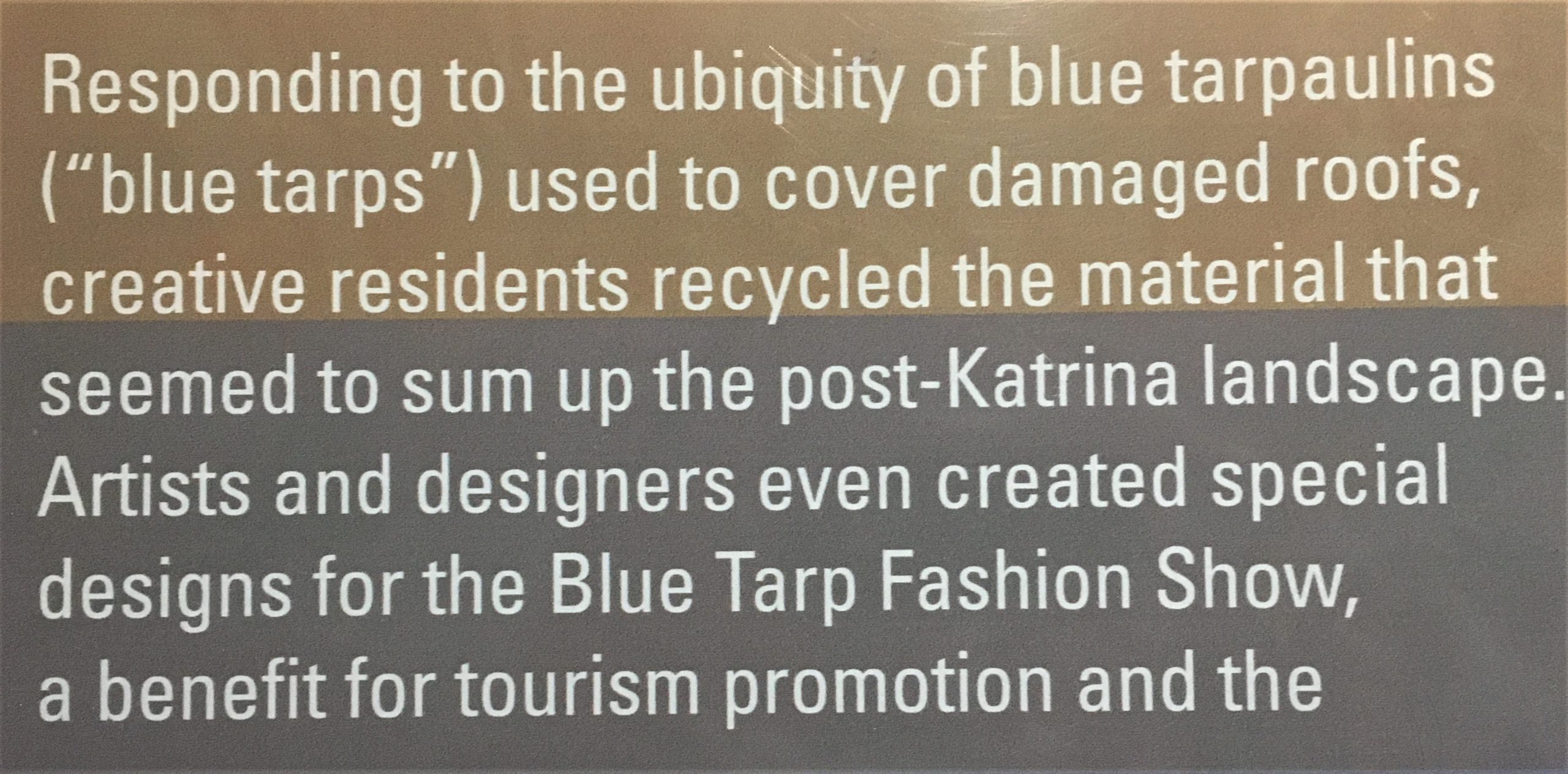

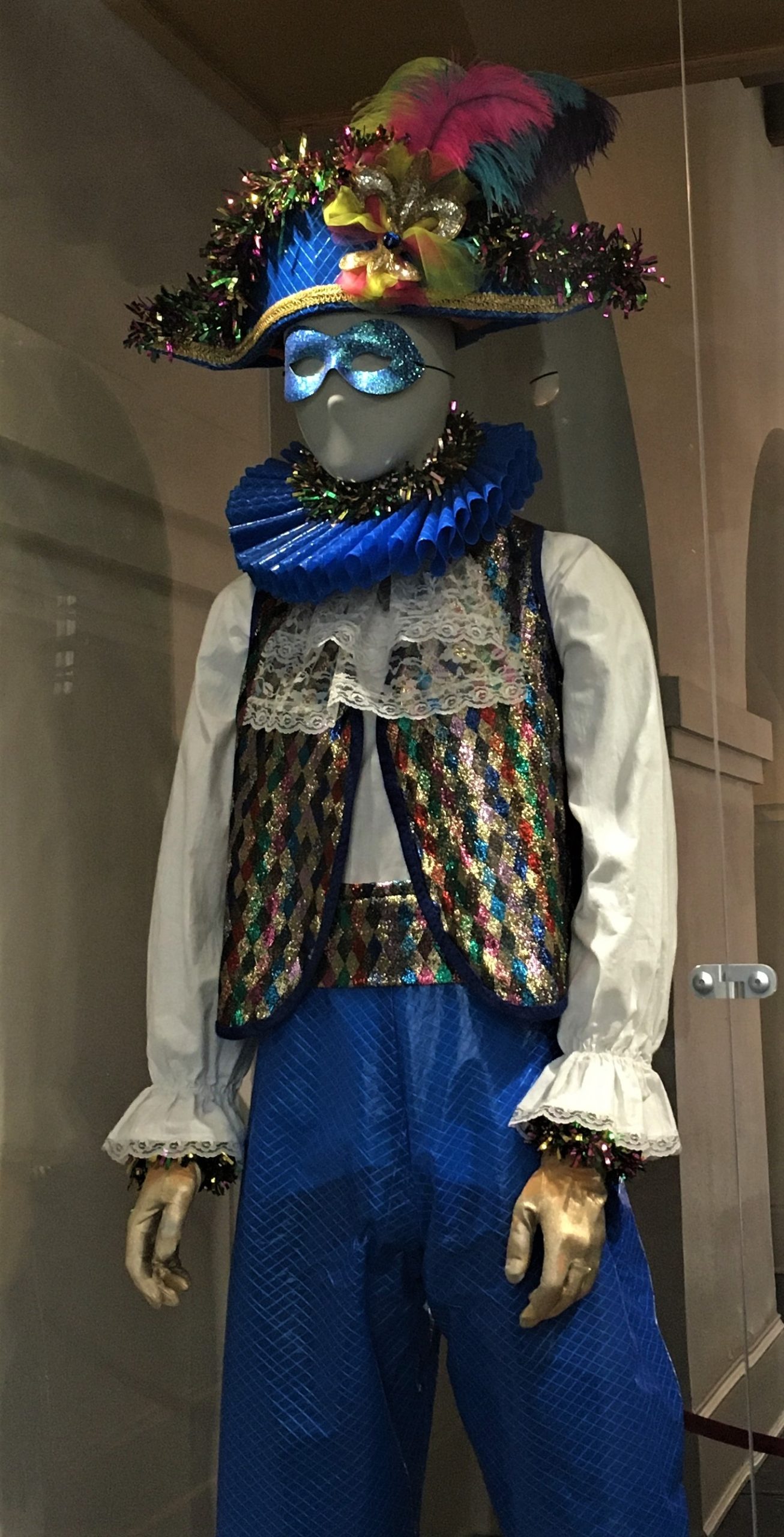
There are still so many blue tarps on rooftops around here!
It’s good the people can make light of their situation. : )
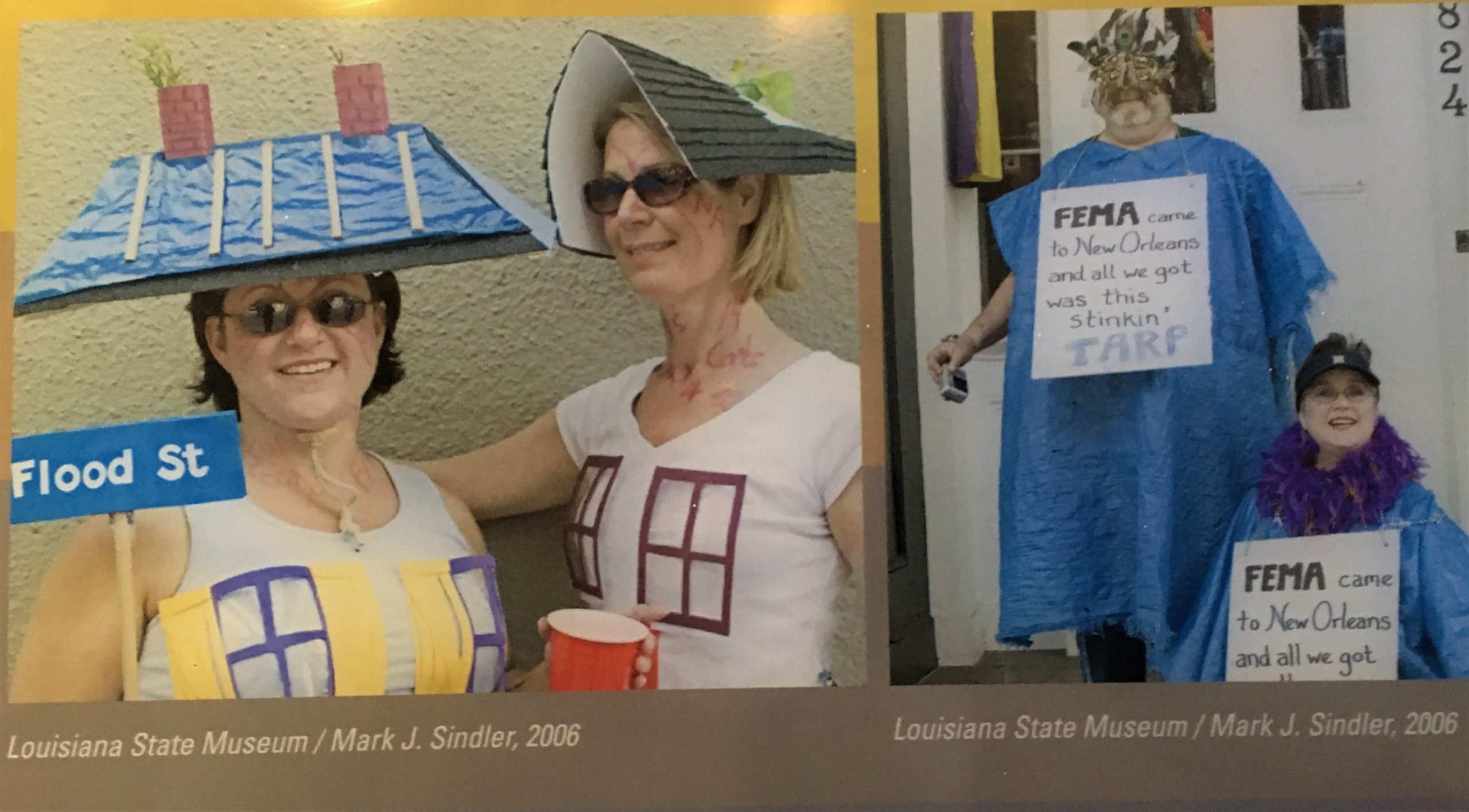
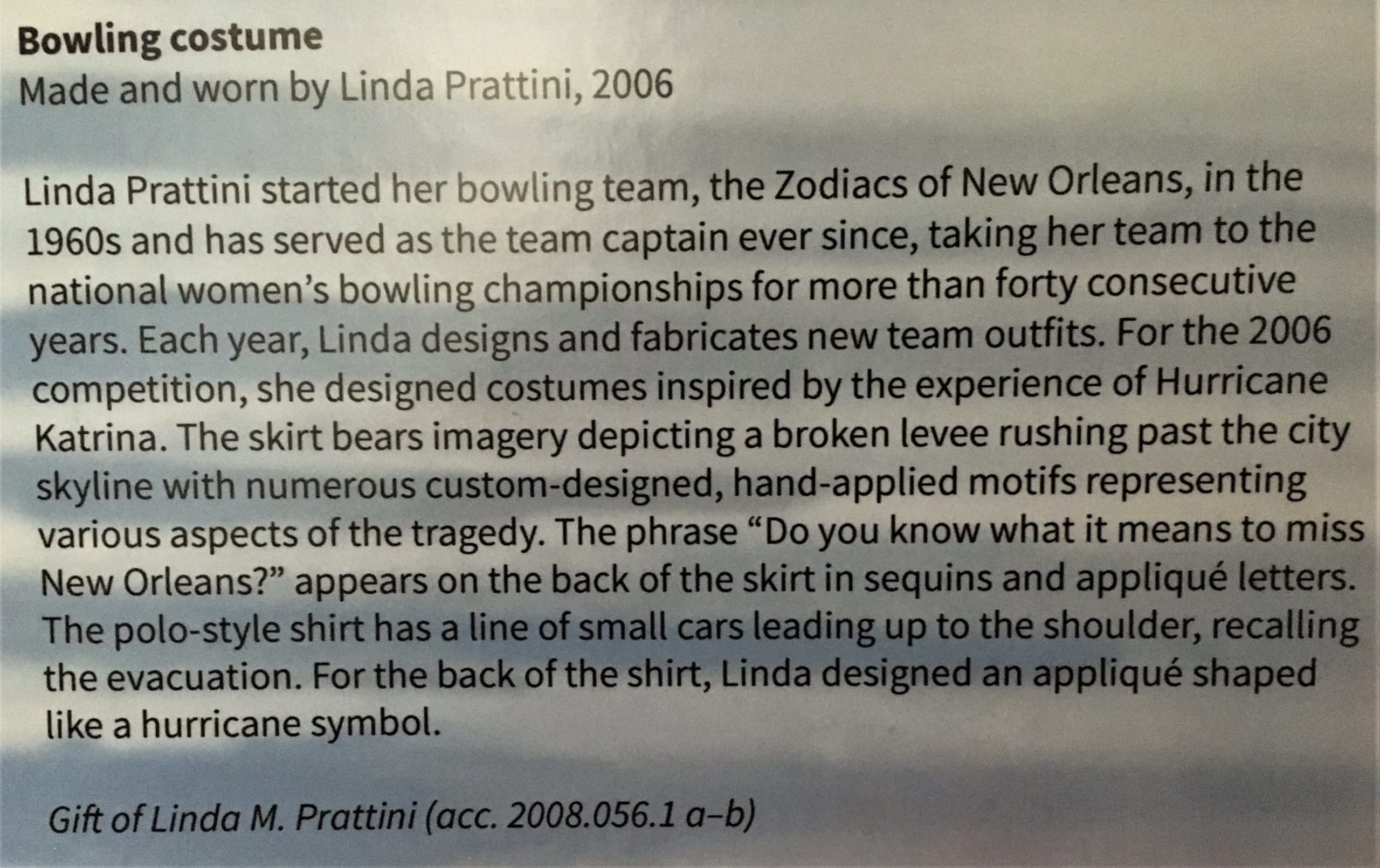


Doesn’t look comfortable for bowling in though . . .
Four weeks later, on September 26th, Hurricane Rita made landfall on the east coast of Texas. “One of the strongest Gulf hurricane’s ever”. And New Orleans had to live through it again.

There is more to Mardi Gras in New Orleans, than I will ever know, let alone understand. In fact, we discovered today that the entire state celebrates it, not just New Orleans. One thing we kept reading about was Rex. We thought it was a person, but no. It’s the name of a Krewe (that’s Mardi Gras speak for a private club). More on that in a moment.
The first American Mardi Gras took place on March 3, 1699, when French explorers Pierre Le Moyne d’Iberville and Sieur de Bienville landed near present-day New Orleans, Louisiana. They held a small celebration and dubbed their landing spot Point du Mardi Gras. ~ history.com
By the way, in French, ‘mardi’ is Tuesday, and ‘gras’ is fat – – so Mardi Gras is Fat Tuesday in French. Why someone would name their landing point Fat Tuesday, is beyond me. Maybe they were starving when they landed, and there was a lot of food available???
Anyway . . .
From what I read in my brief research, it seems Mardi Gras, in some form or other, has been celebrated in many cultures for several centuries. It always occurred just before Lent began, and usually included some form of celebration – like parades, etc. Which explains why Mobile, Alabama had Mardi Gras and celebrated it in style before New Orleans got a hold of it.
So, these French guys brought that history with them to New Orleans. A lot of stuff happened between 1699 and the first ‘commercialized’ (for lack of a better word) Mardi Gras (in the way we know it today) in New Orleans 170 years later. It was seven years after the Civil War, when six men got together in the lobby of the St. Charles Hotel in 1872, and began tossing around ideas to bring in tourists, and thus bolster the economy of New Orleans. In addition, previous celebrations were always at night, and had gotten out of hand, to the point that the governor was considering putting an end to them, and thus ending 170 years of culture. There was also the upcoming, highly anticipated visit by Russian diplomat, Grand Duke Alexei Alexandrovich who was in the midst of a year-long world tour (that’s another whole story unto itself), and they wanted their town to make a grand impression.
They came up with the name, Rex (which means ‘king’ in Latin), as the first King of Carnival, and he rode in the first Rex parade. FYI – he had to borrow the kingly attire from a traveling actor. The other five men showed up formally dressed in black suits and top hats. And the Grand Duke (along with many others) watched the daytime parade these guys put together. From there, the idea has grown and grown and grown. The current count is 78 different Krewes, but Rex remains the most prestigious. In the past, the memberships were kept secret, but in 1991, Louisiana Law dictated that the Krewes had to certify publicly that they didn’t discriminate on the basis of race, religion, gender or sexual orientation, in order to obtain parade permits and other public licenses. Many of the Krewes shut down rather than disclose their members’ names. But the annual membership fees alone for most of the Krewes could bankrupt most of us – and that’s not counting the balls, costumes, invitations, floats, parade-tossing paraphernalia, etc. That alone seems discriminating; if you want to get technical.
If you’d like to read more about the Rex Krewe and various Mardi Gras history, you can check out their website: rexorganization.com. They wouldn’t allow me to copy and paste. ☹ But it’s well done and simplified.
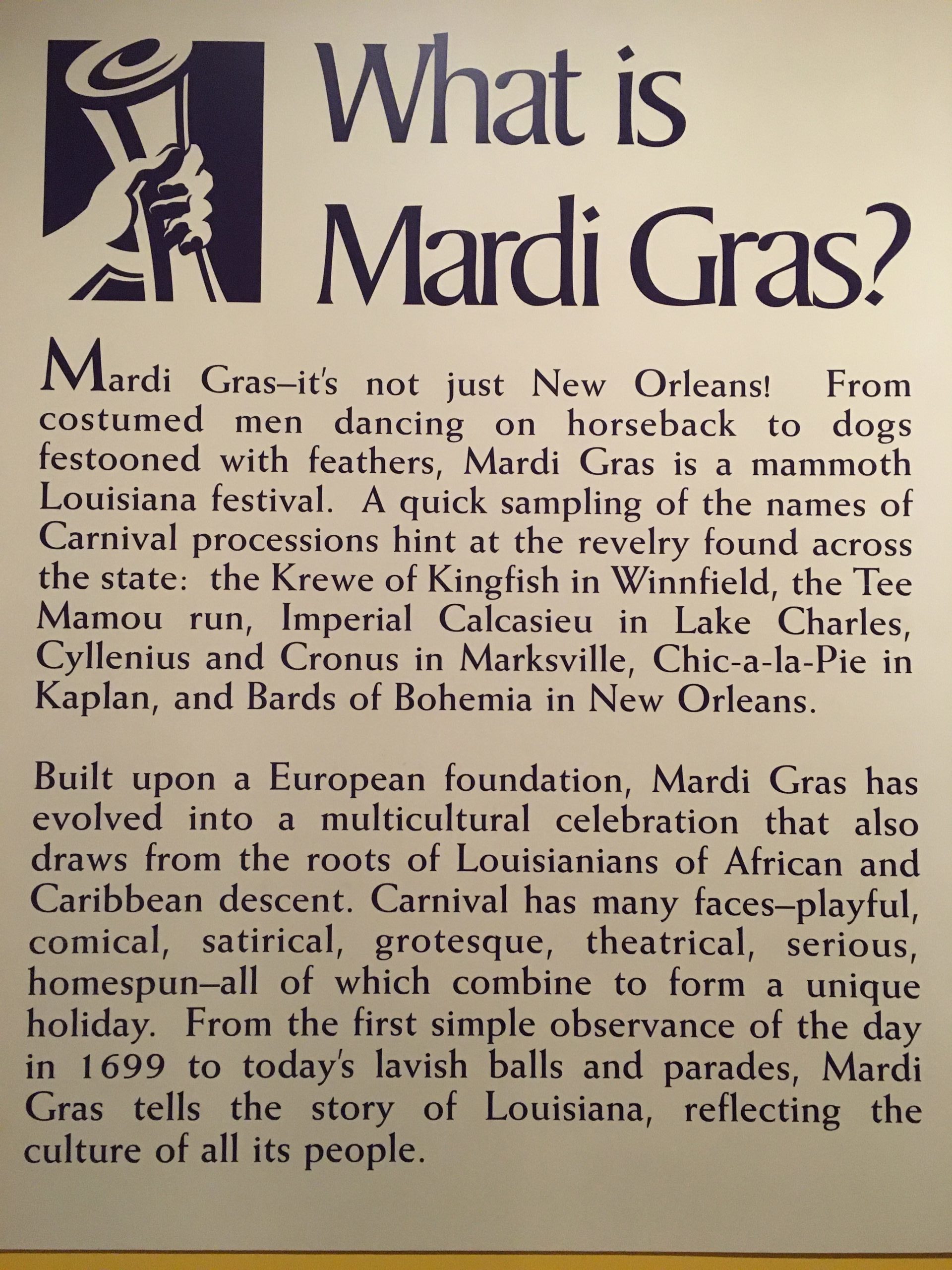
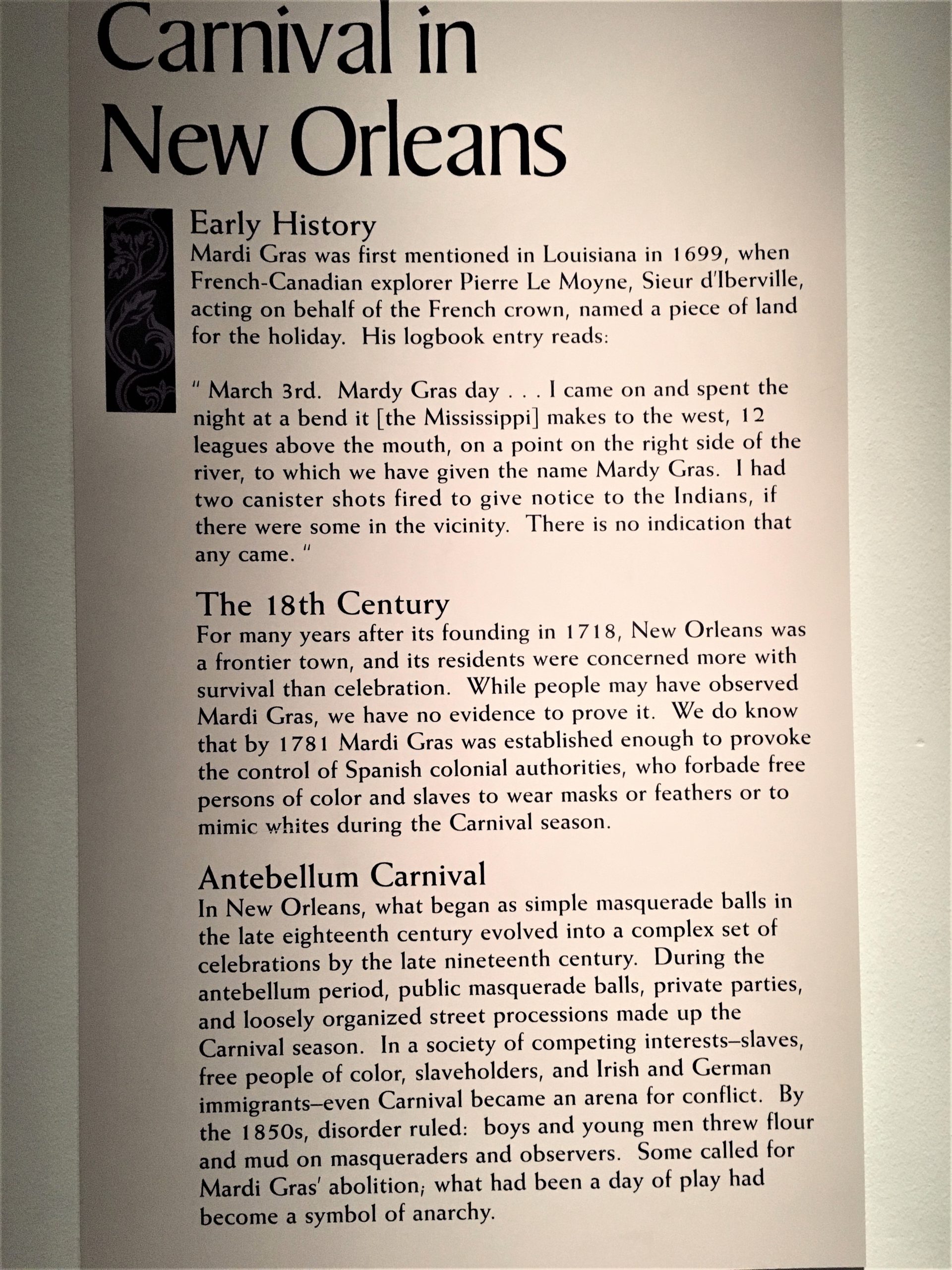
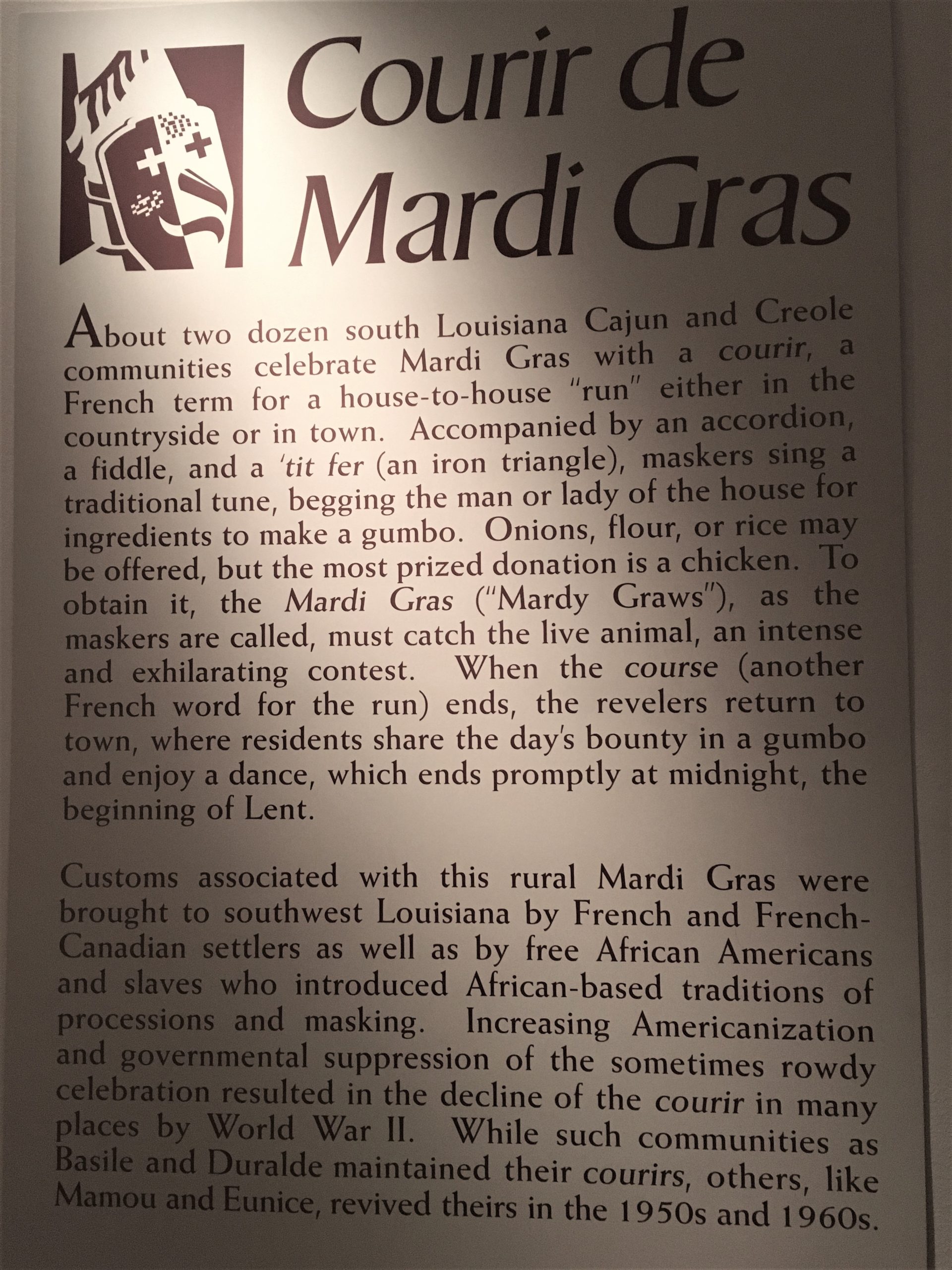



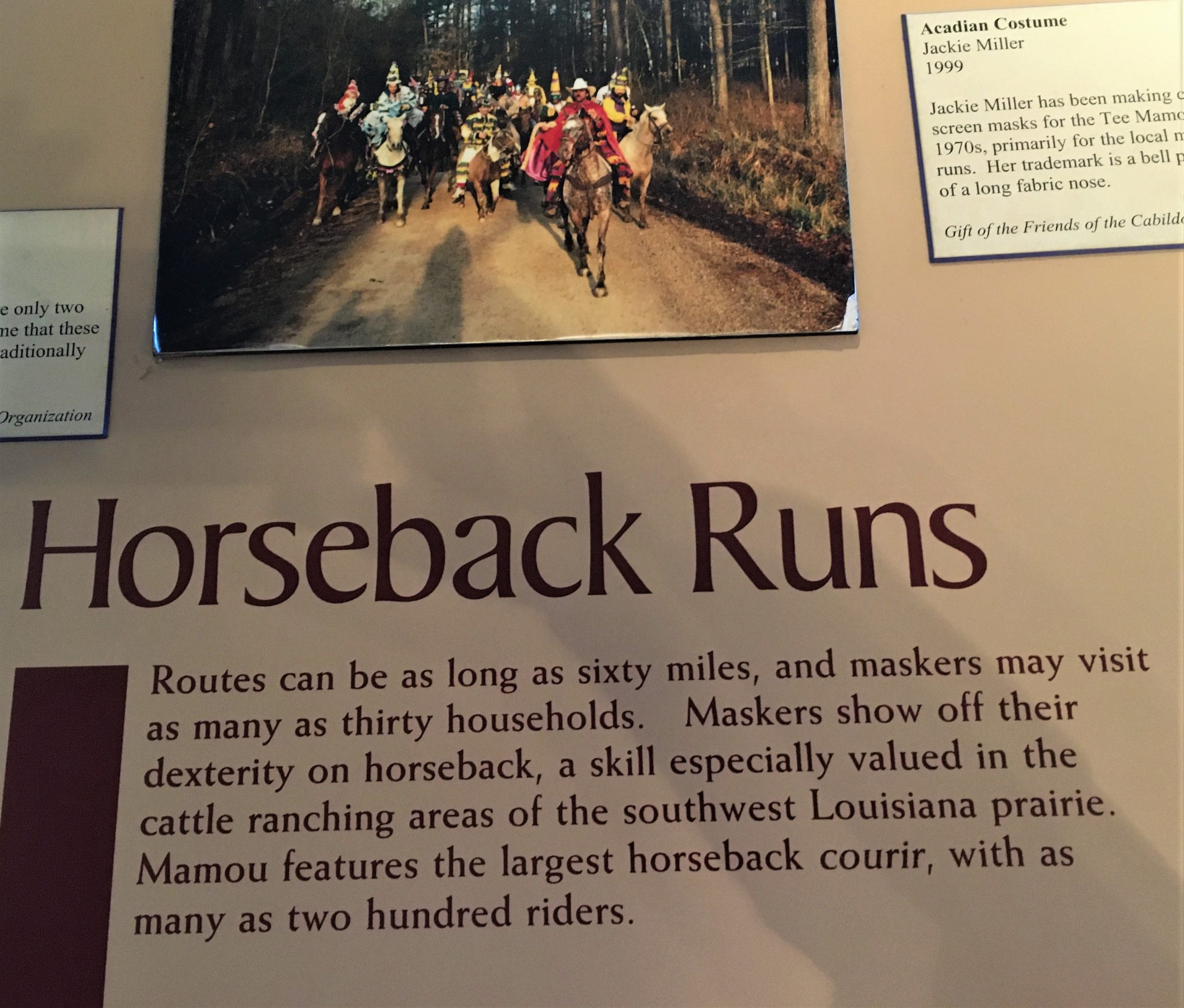


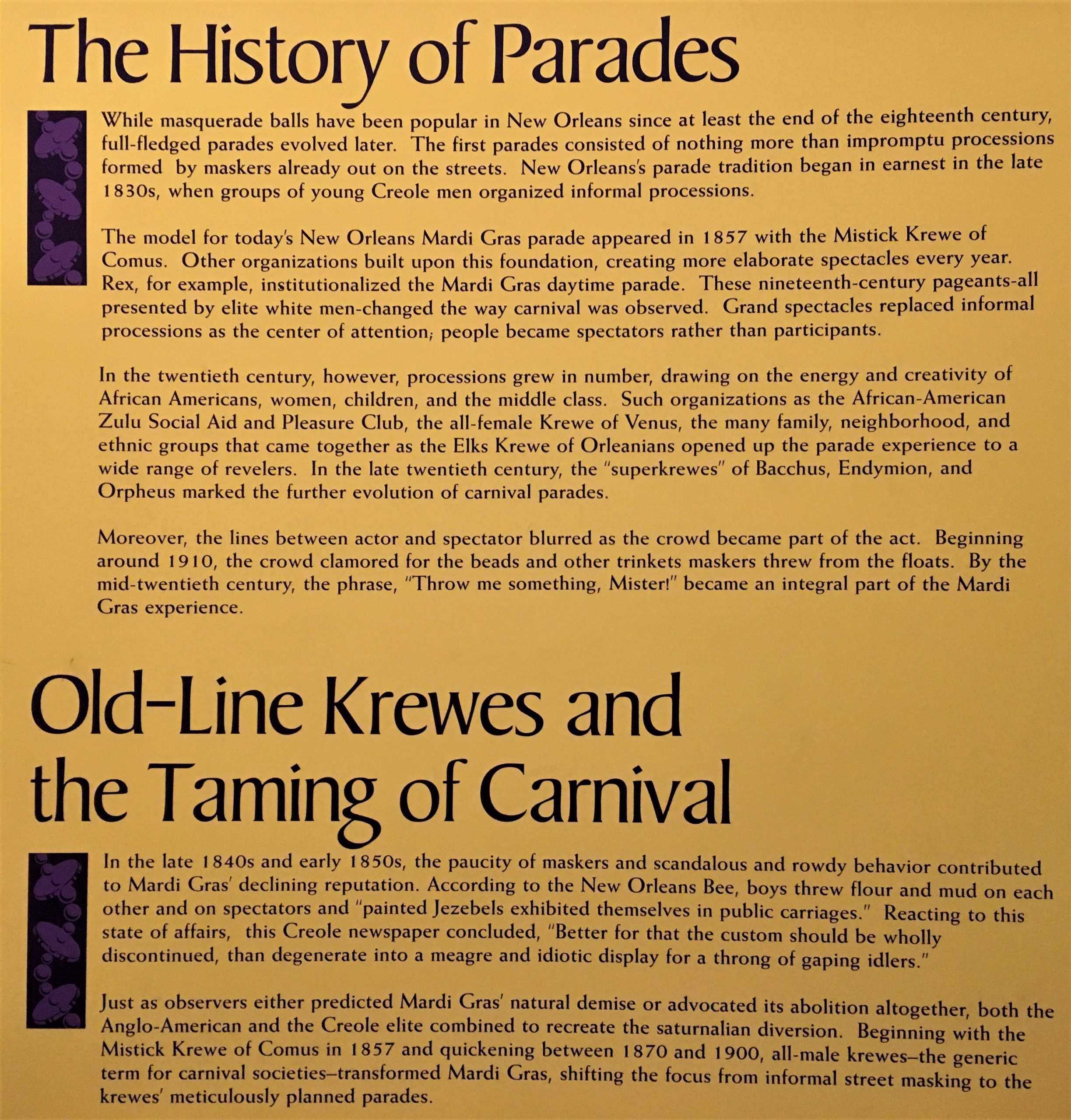


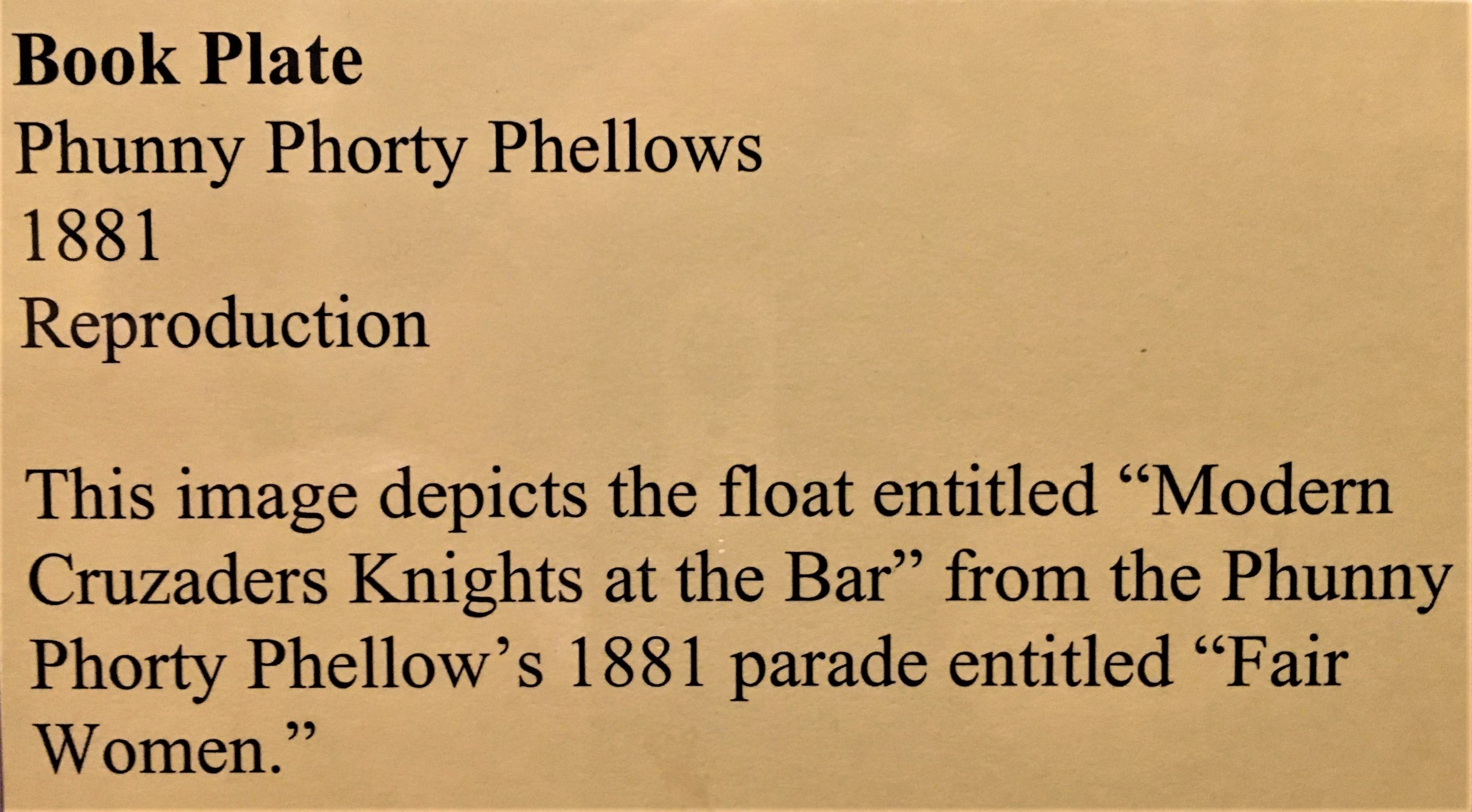
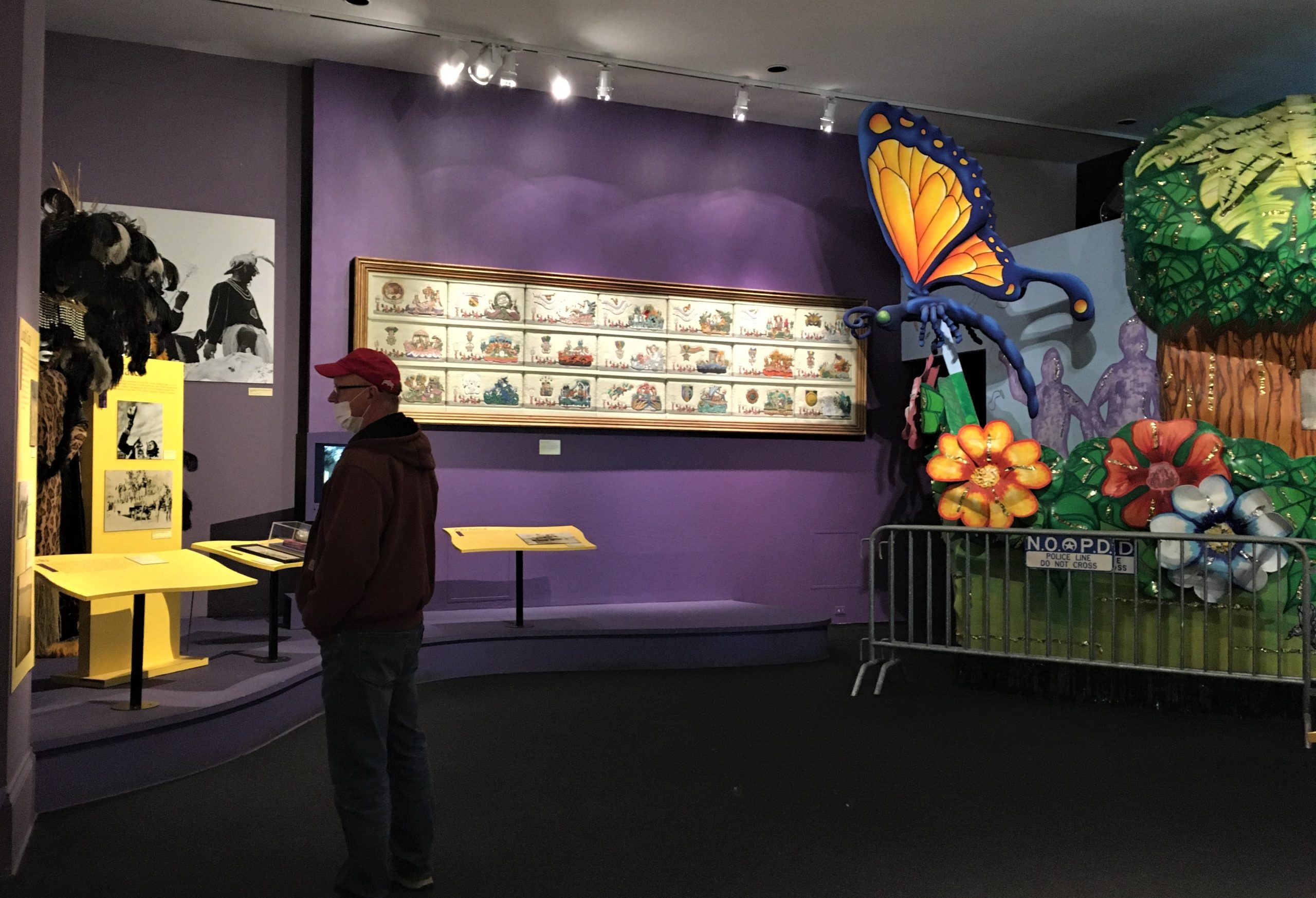
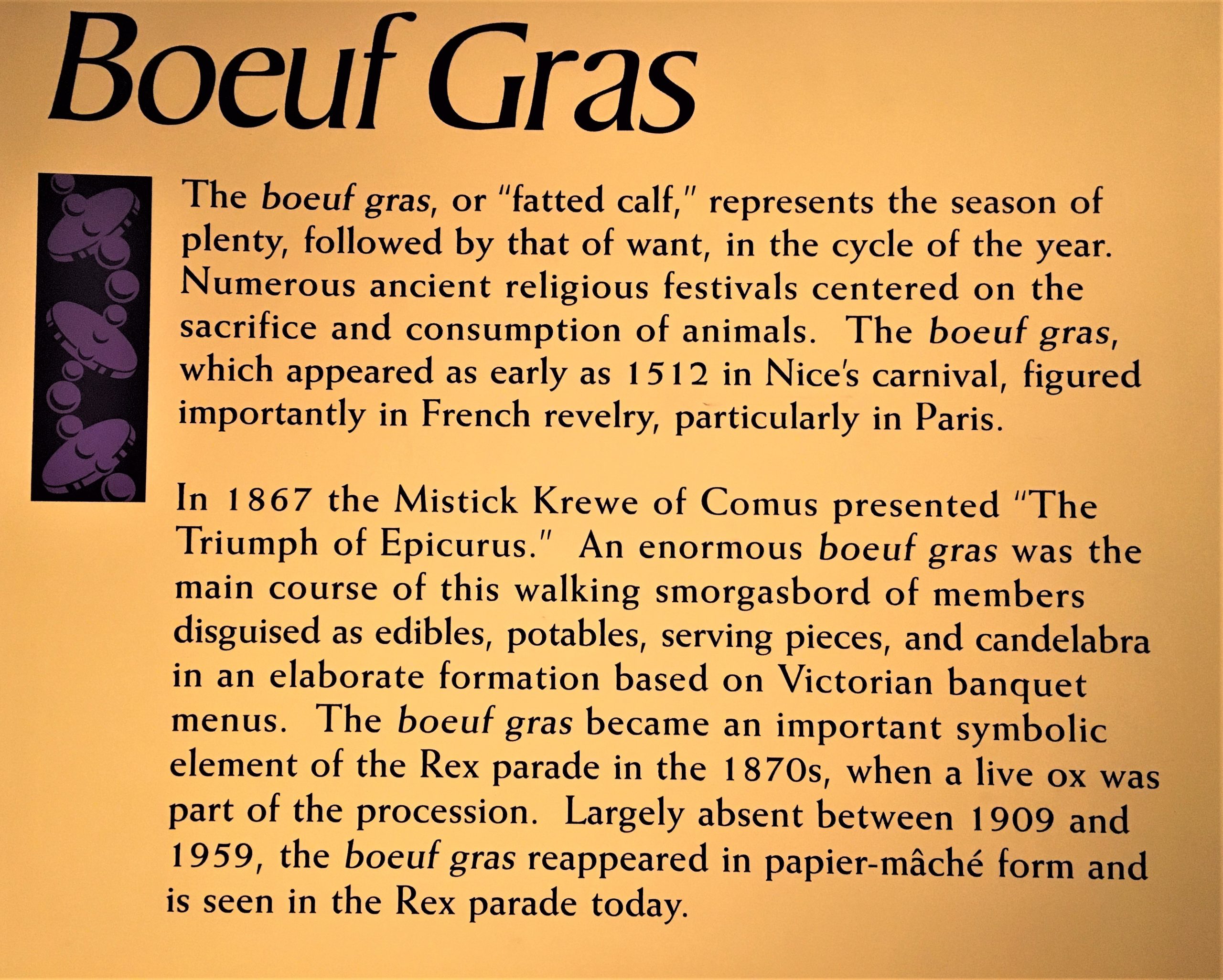
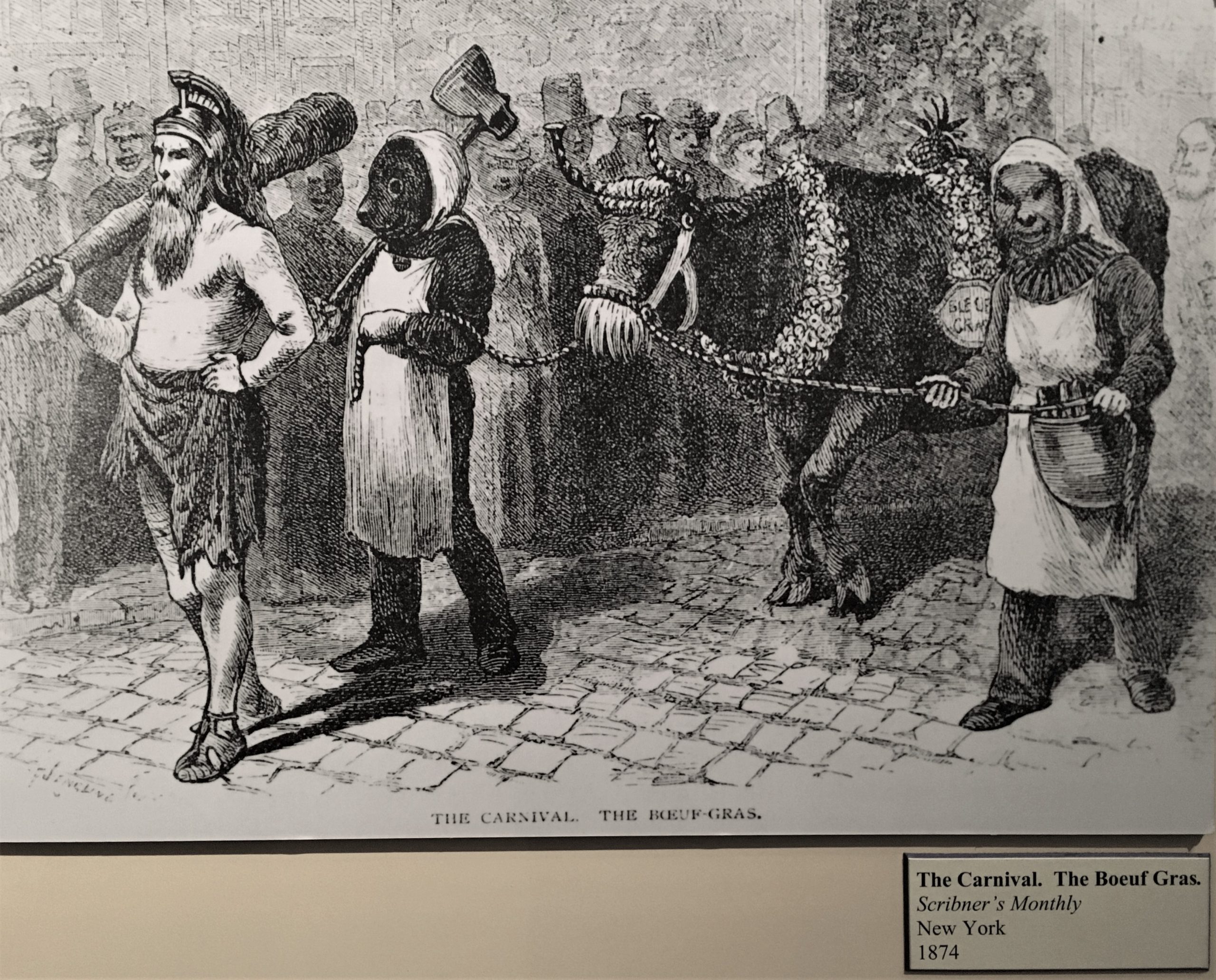
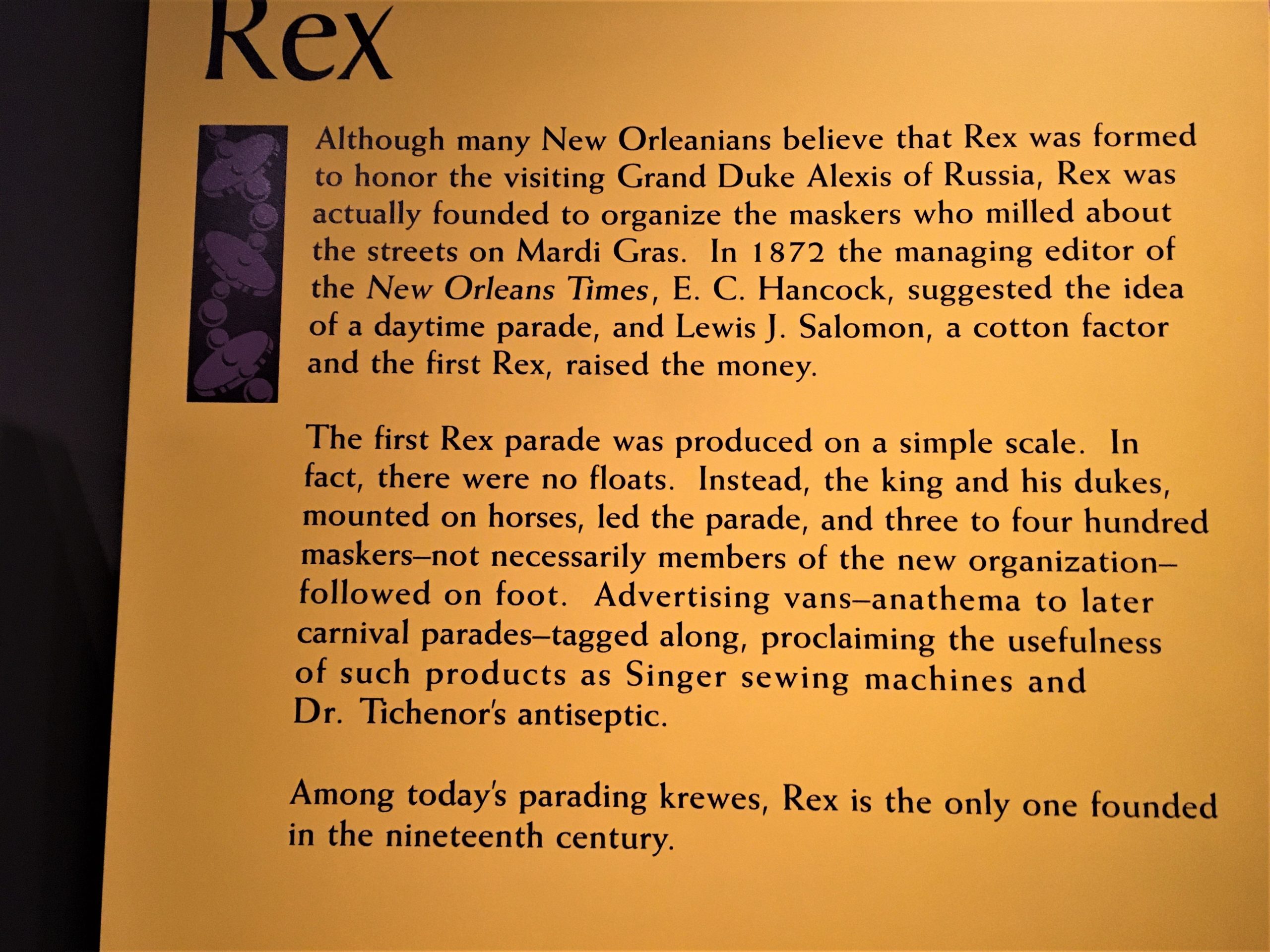

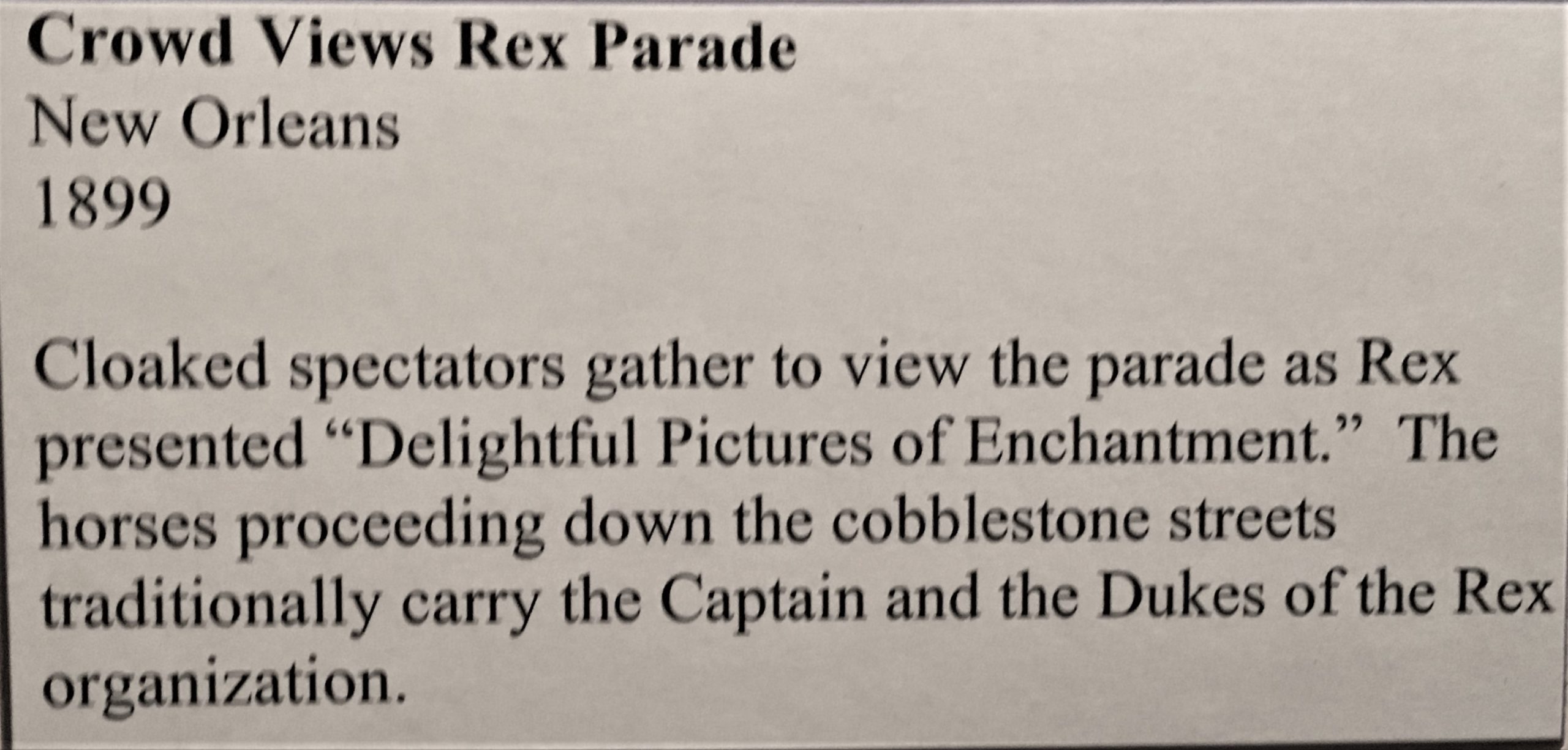
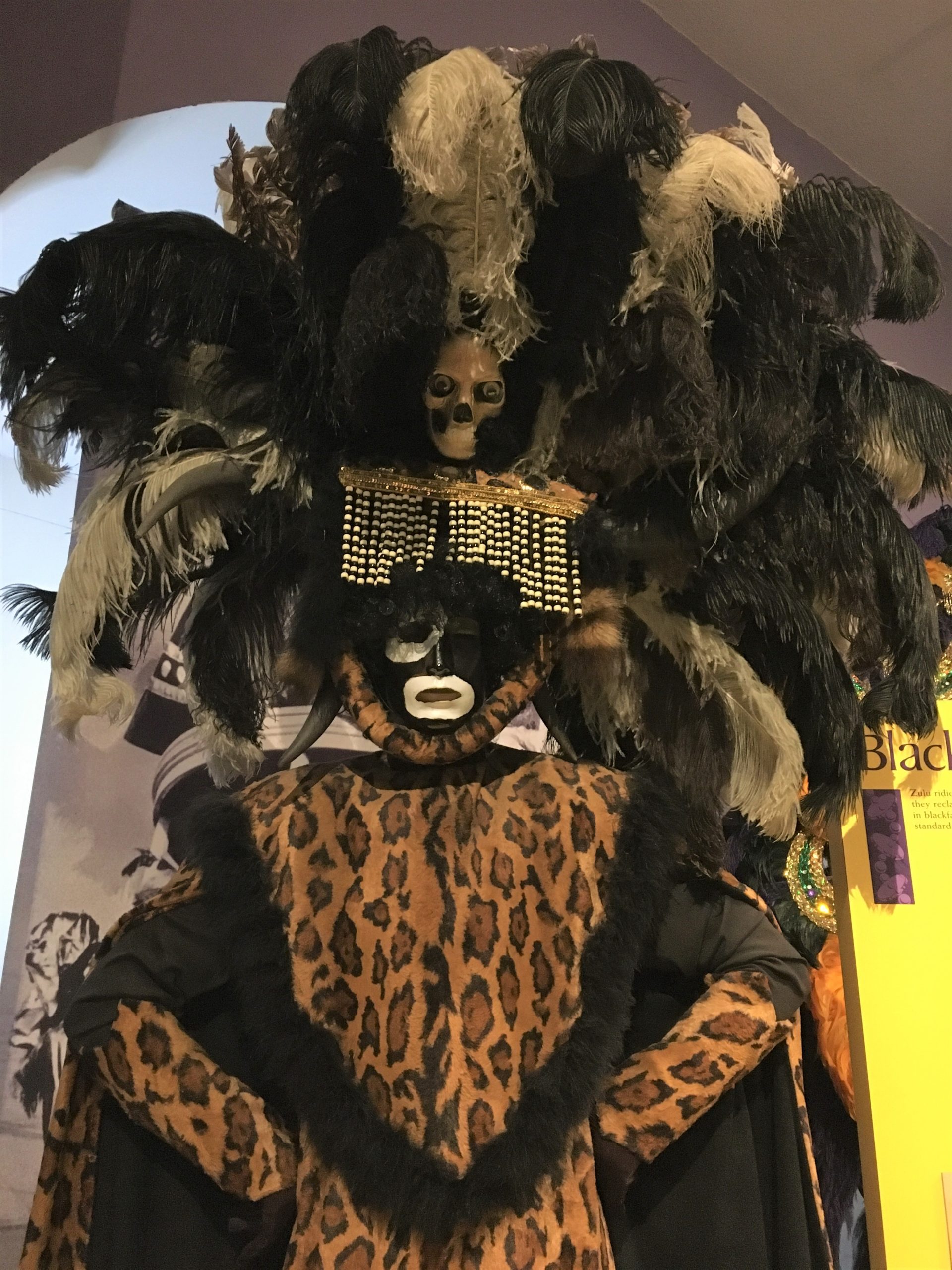
It’s the one on the bottom. : )
This is from an African American Krewe.

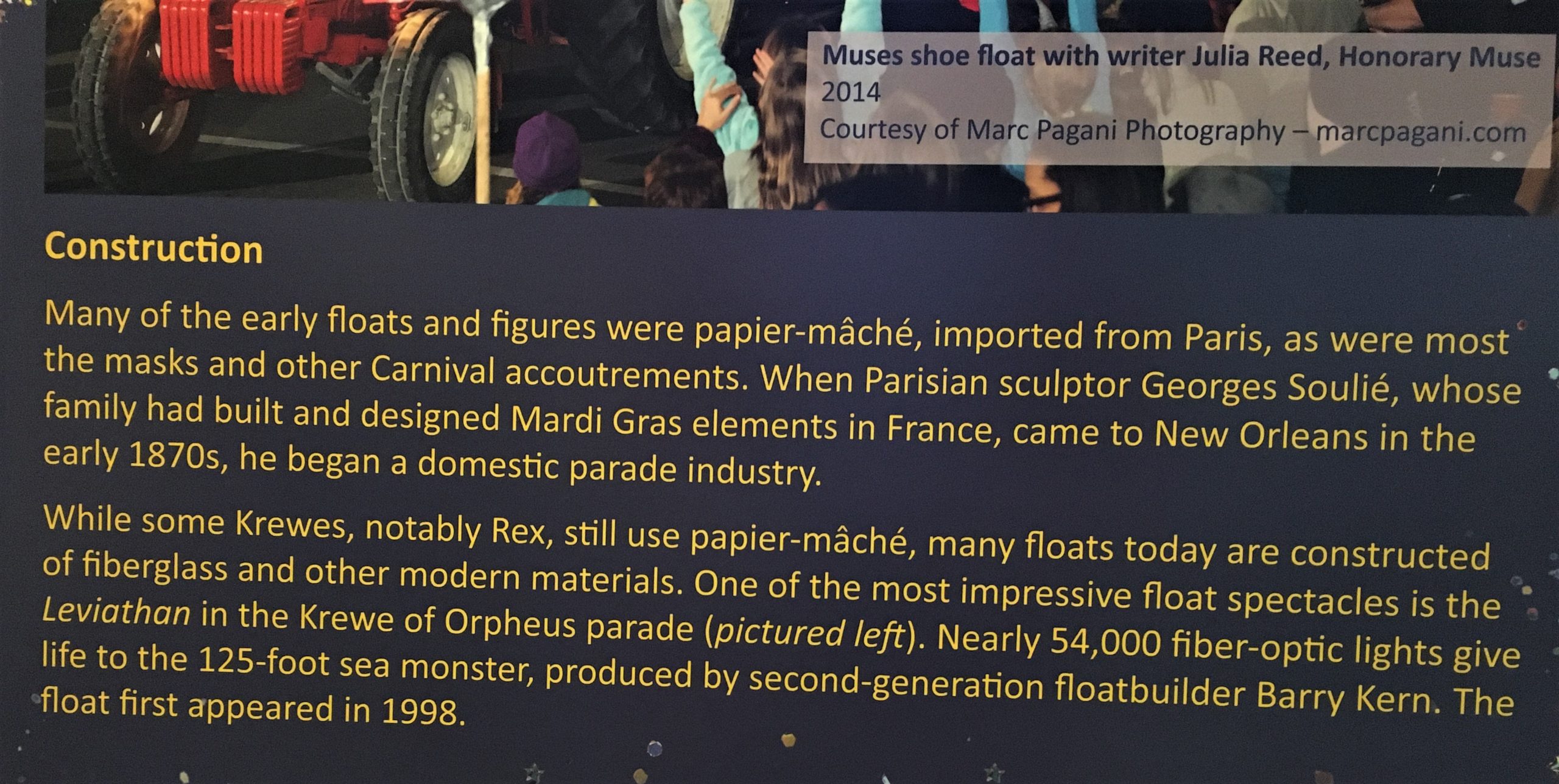






There are actual restrooms behind the marked doors!
Very clever!!



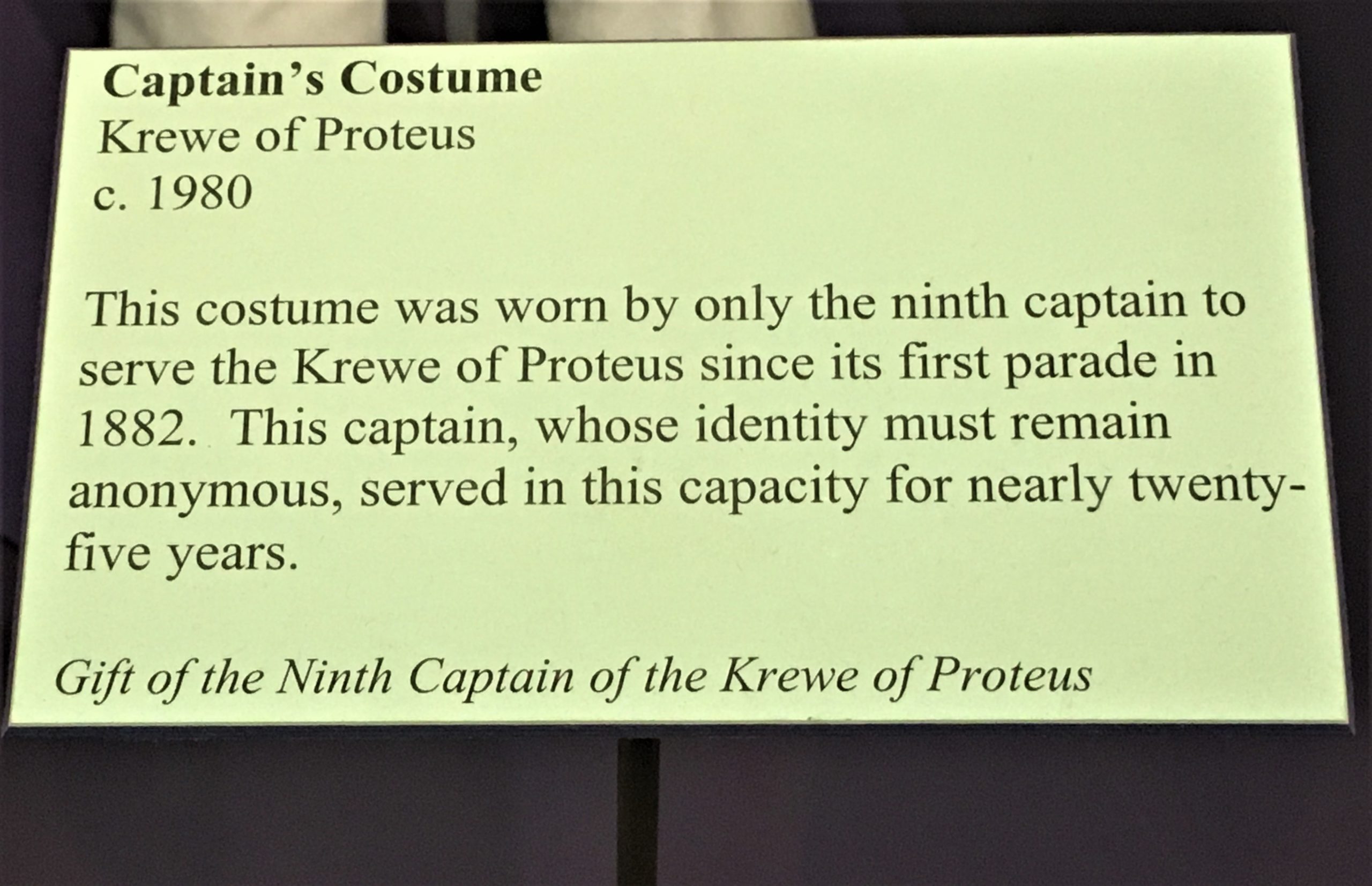

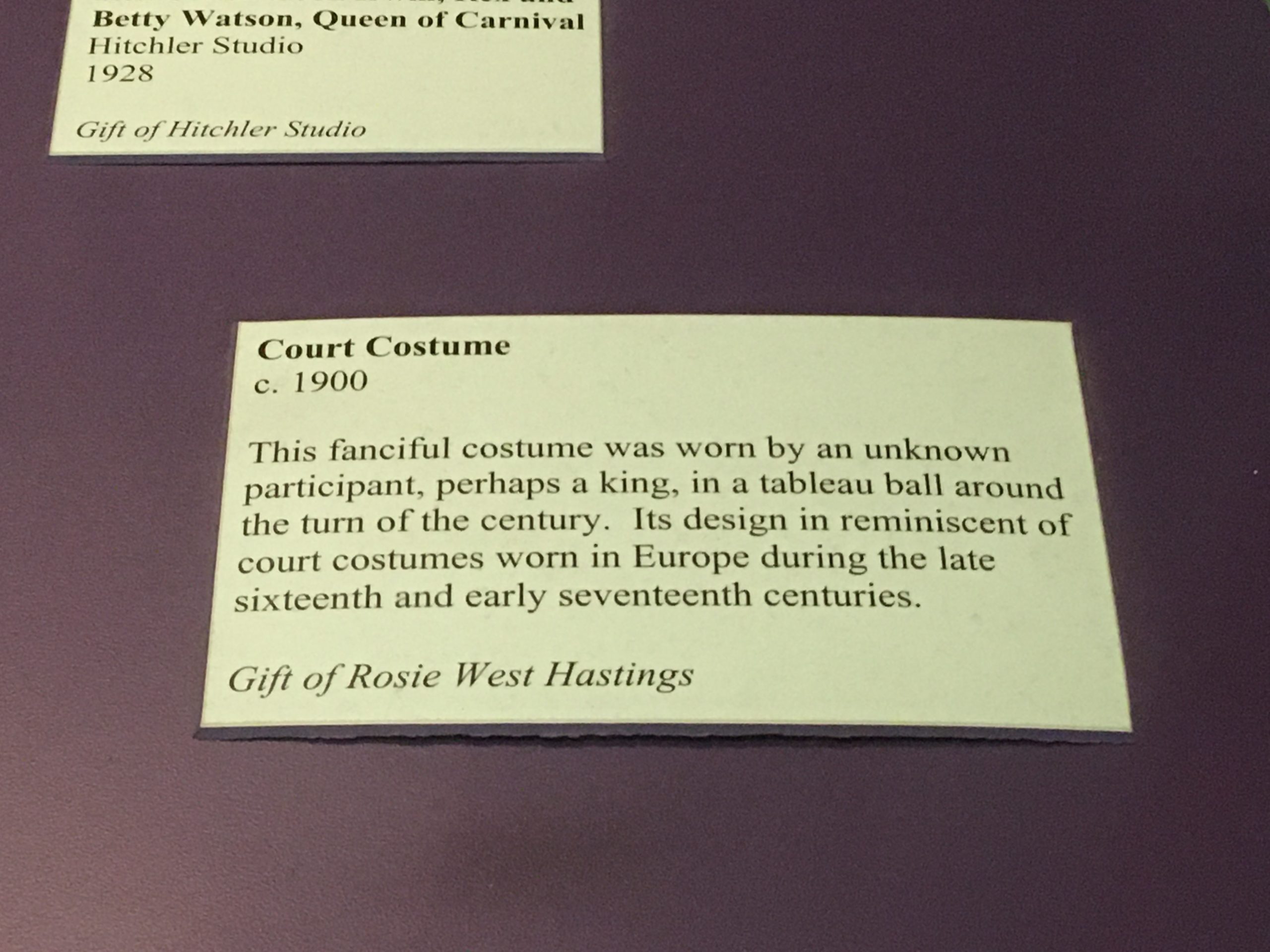
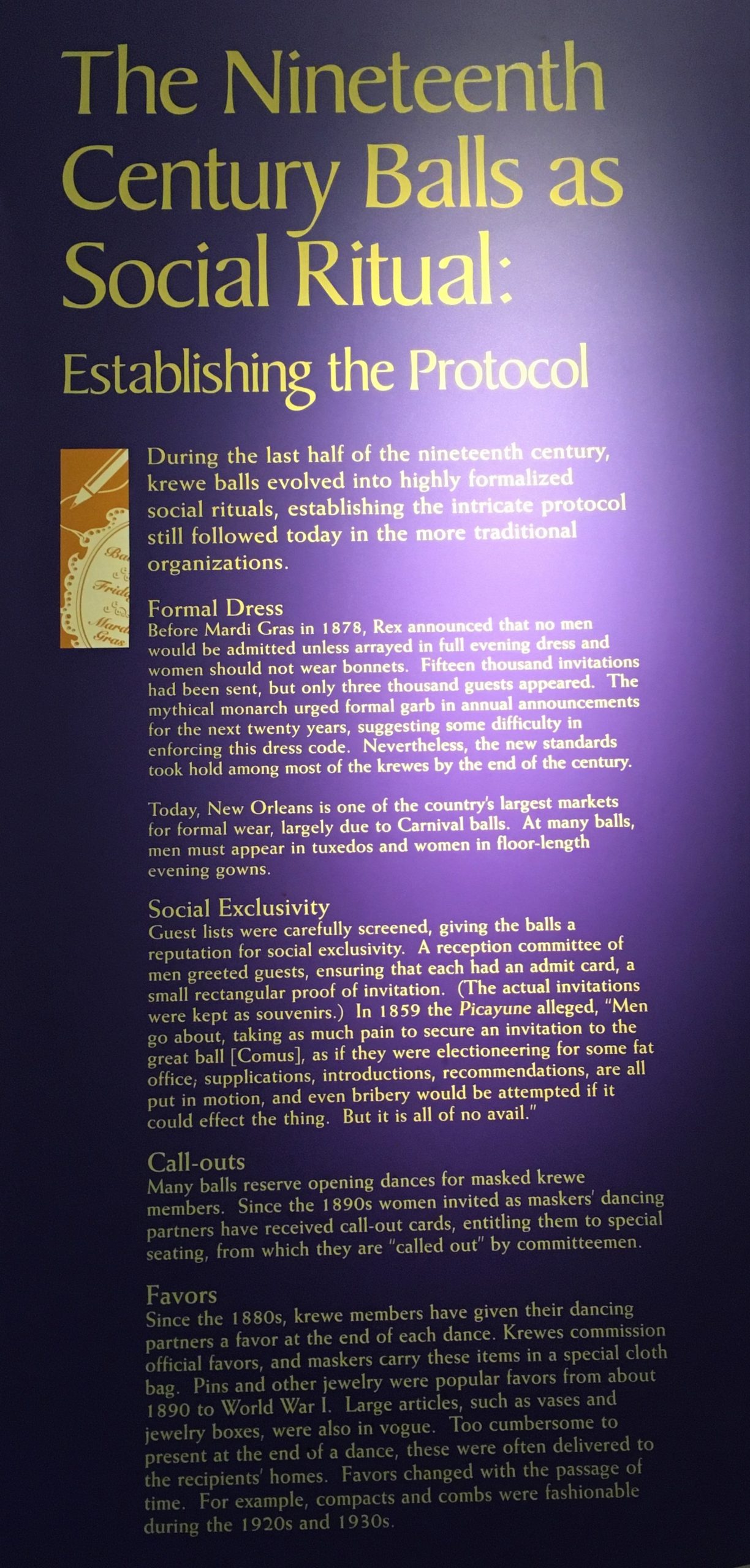
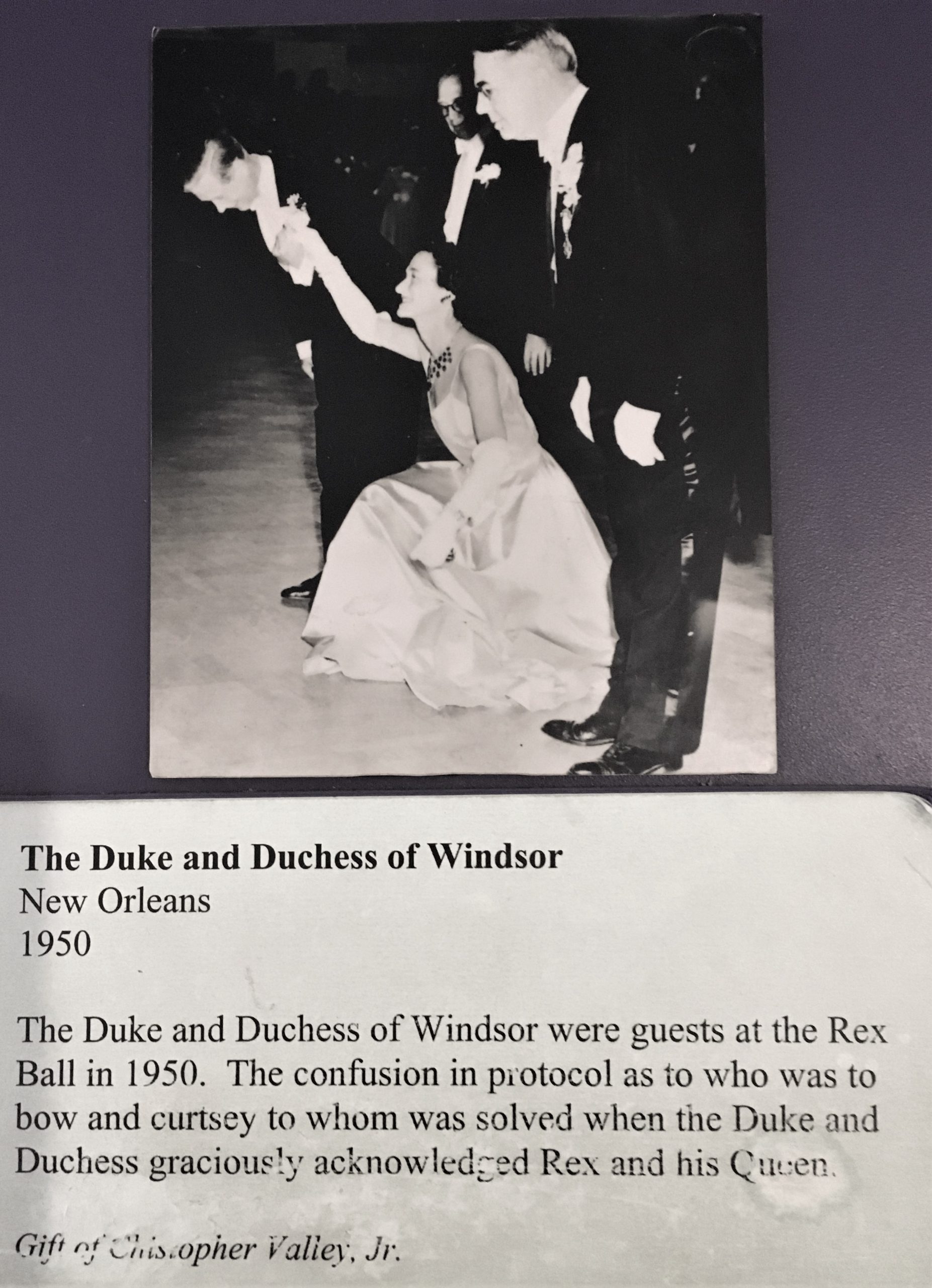

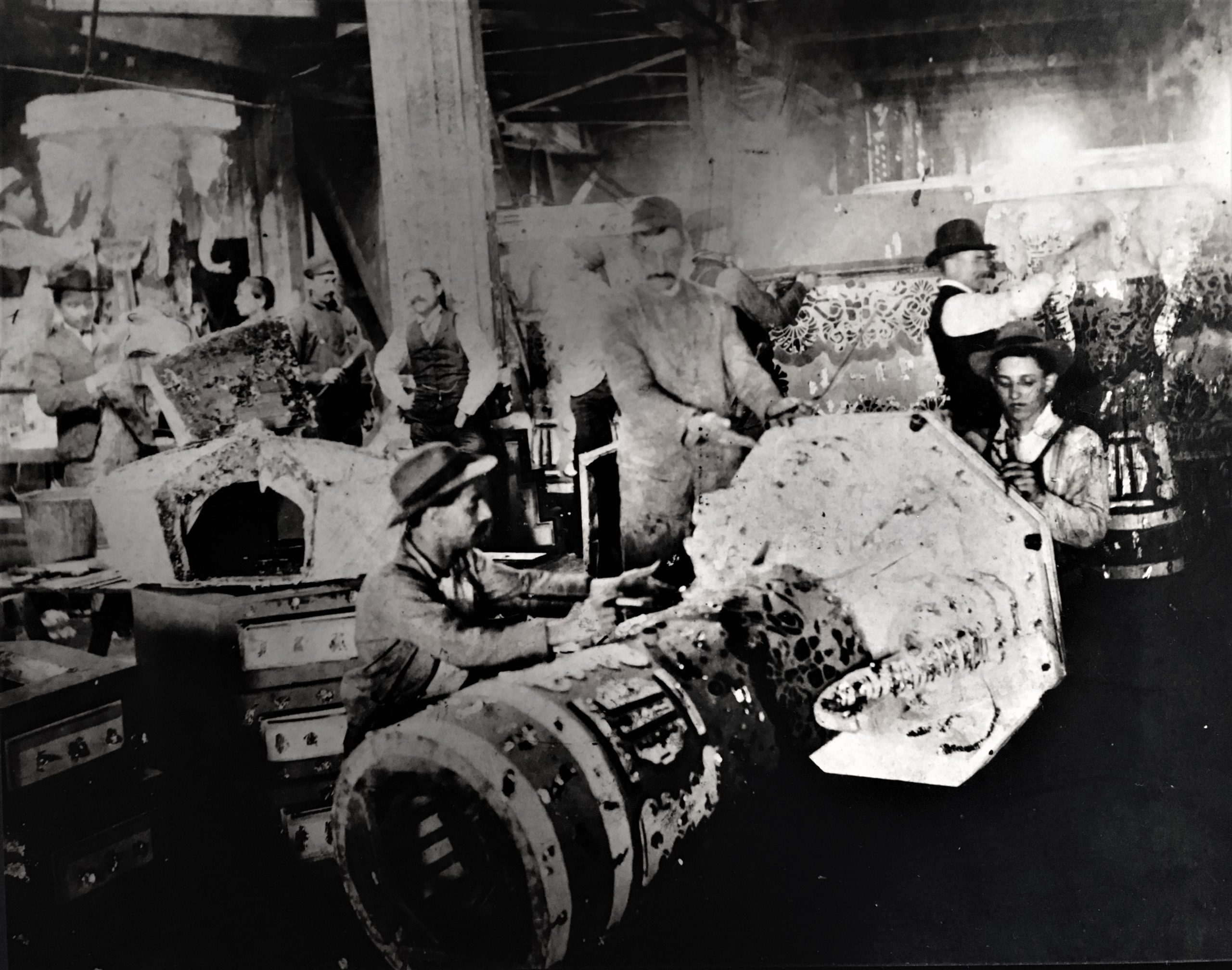
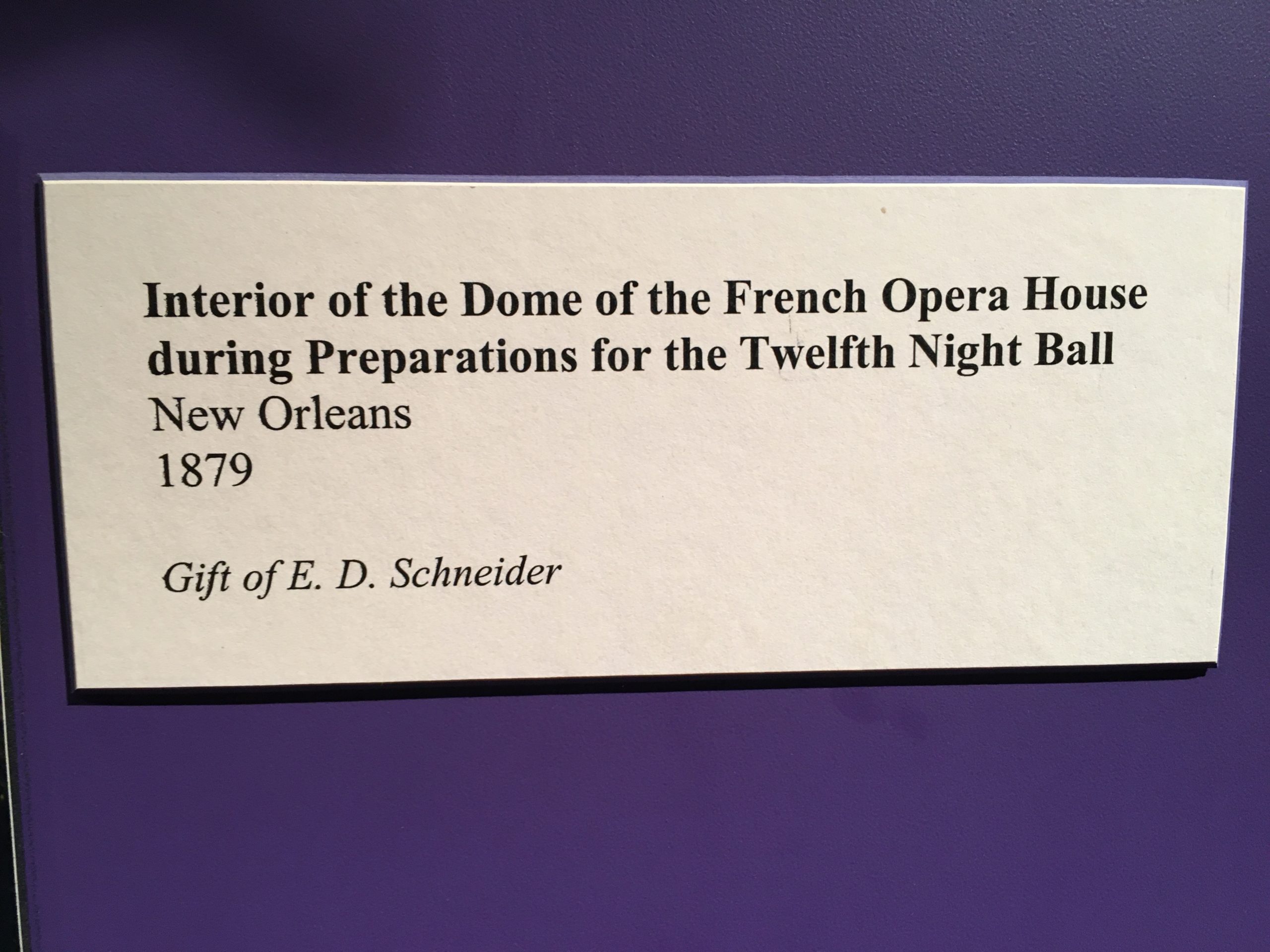
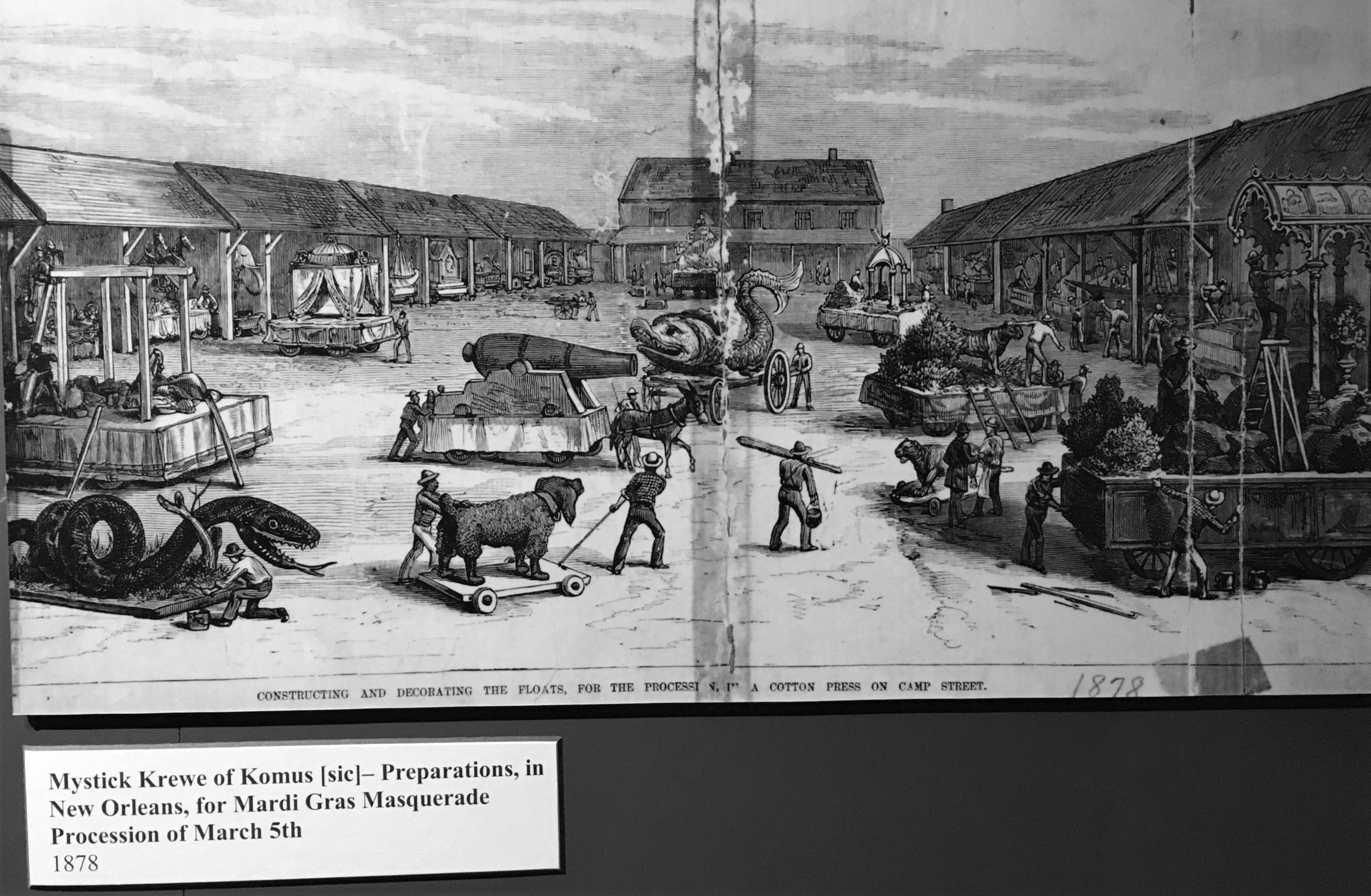
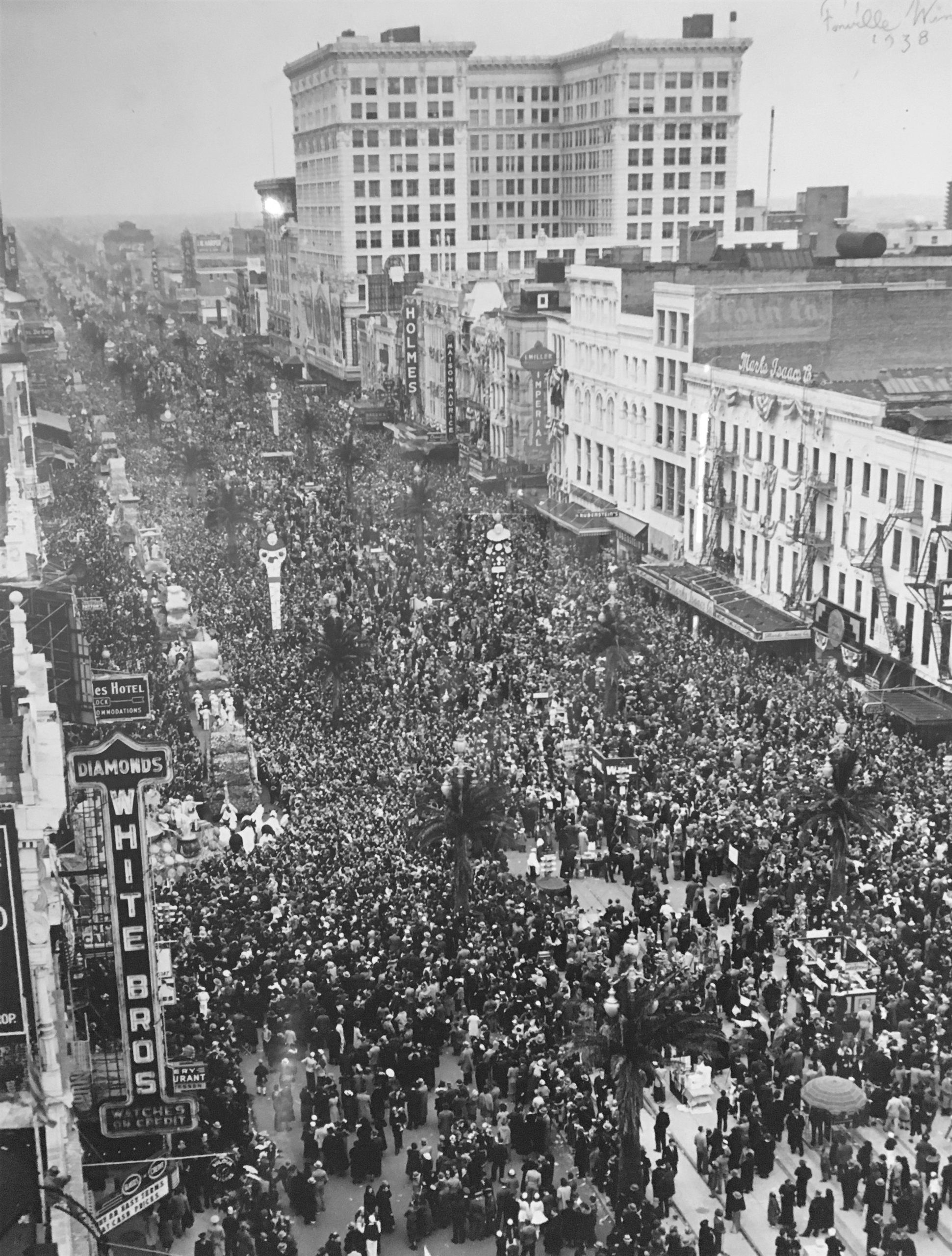
It seems to be going up one side of the street and down the other.
But how can you tell with all the thousands of people standing around?
Once we’d taken in all we could about Mardi Gras and Katrina, we moved out in search of a lunch spot. We didn’t have a plan, but we wanted something native, so we stopped in a sandwich shop called NOLA Poboys and shared a foot-long fried shrimp po’boy sandwich. Spicy (as they made clear everywhere), but very good!
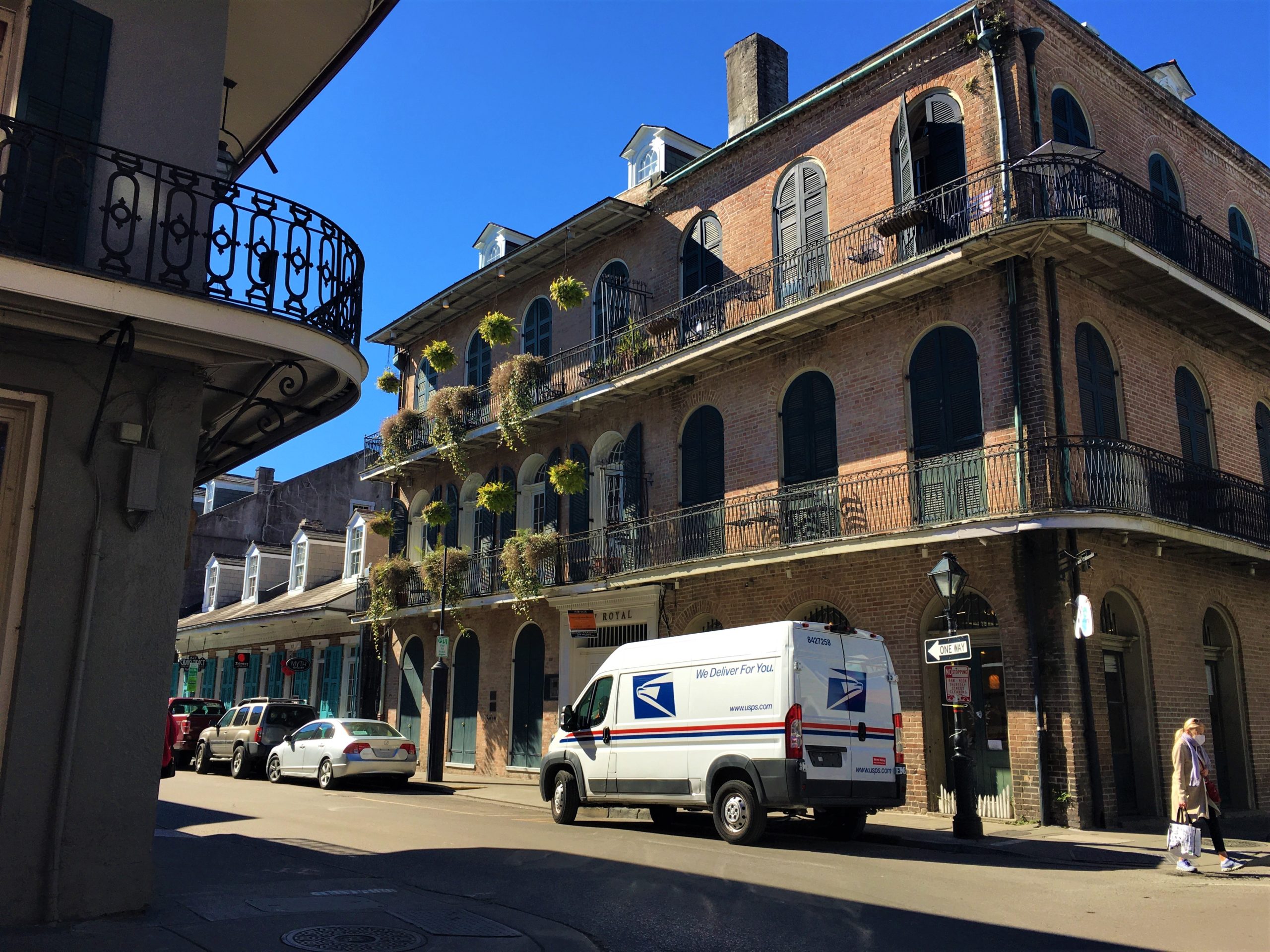




Back to the square and the Cathedral.
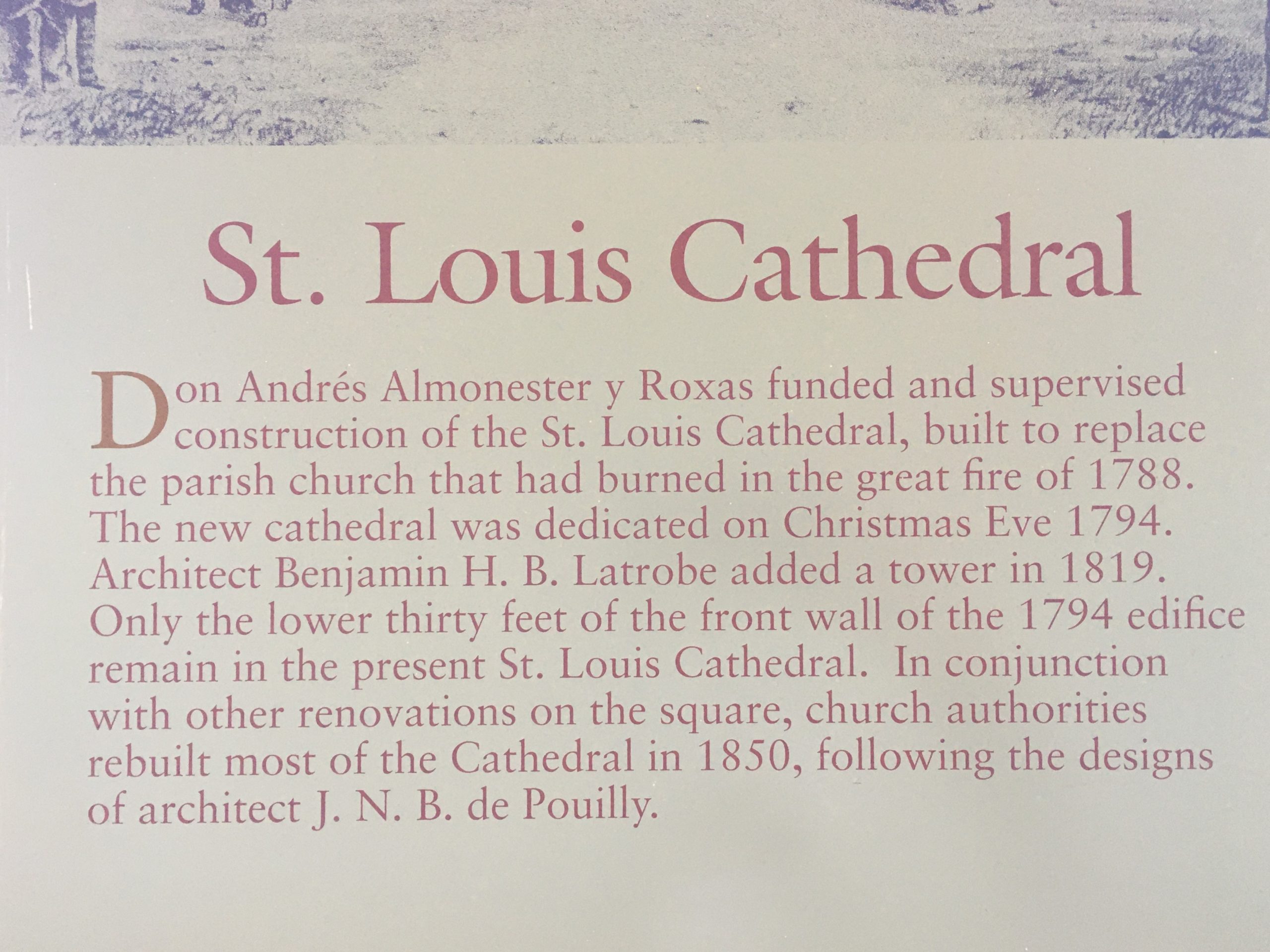
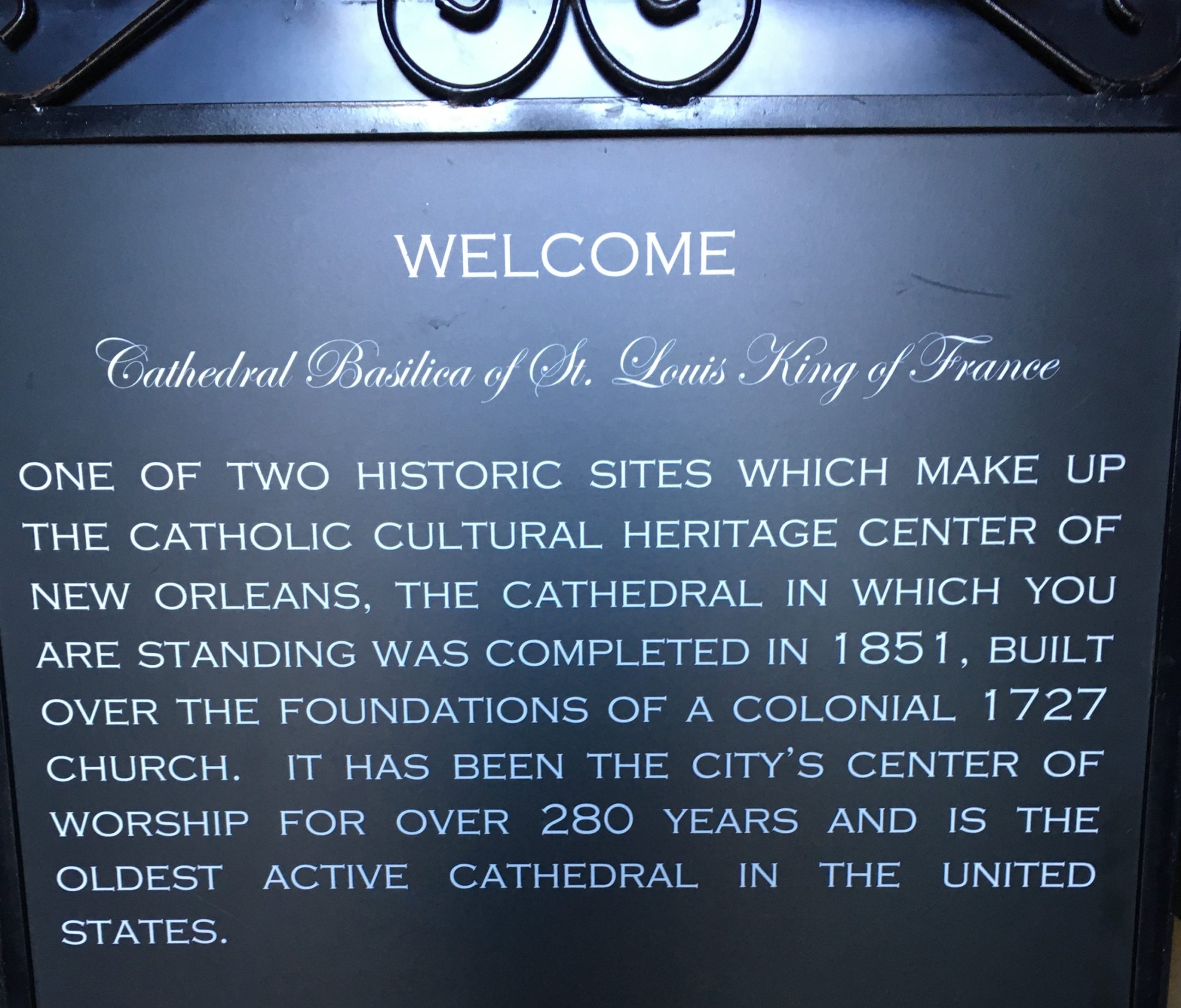
We were quite surprised to see all the scaffolding adorning the sanctuary! And there was no information anywhere as to why.
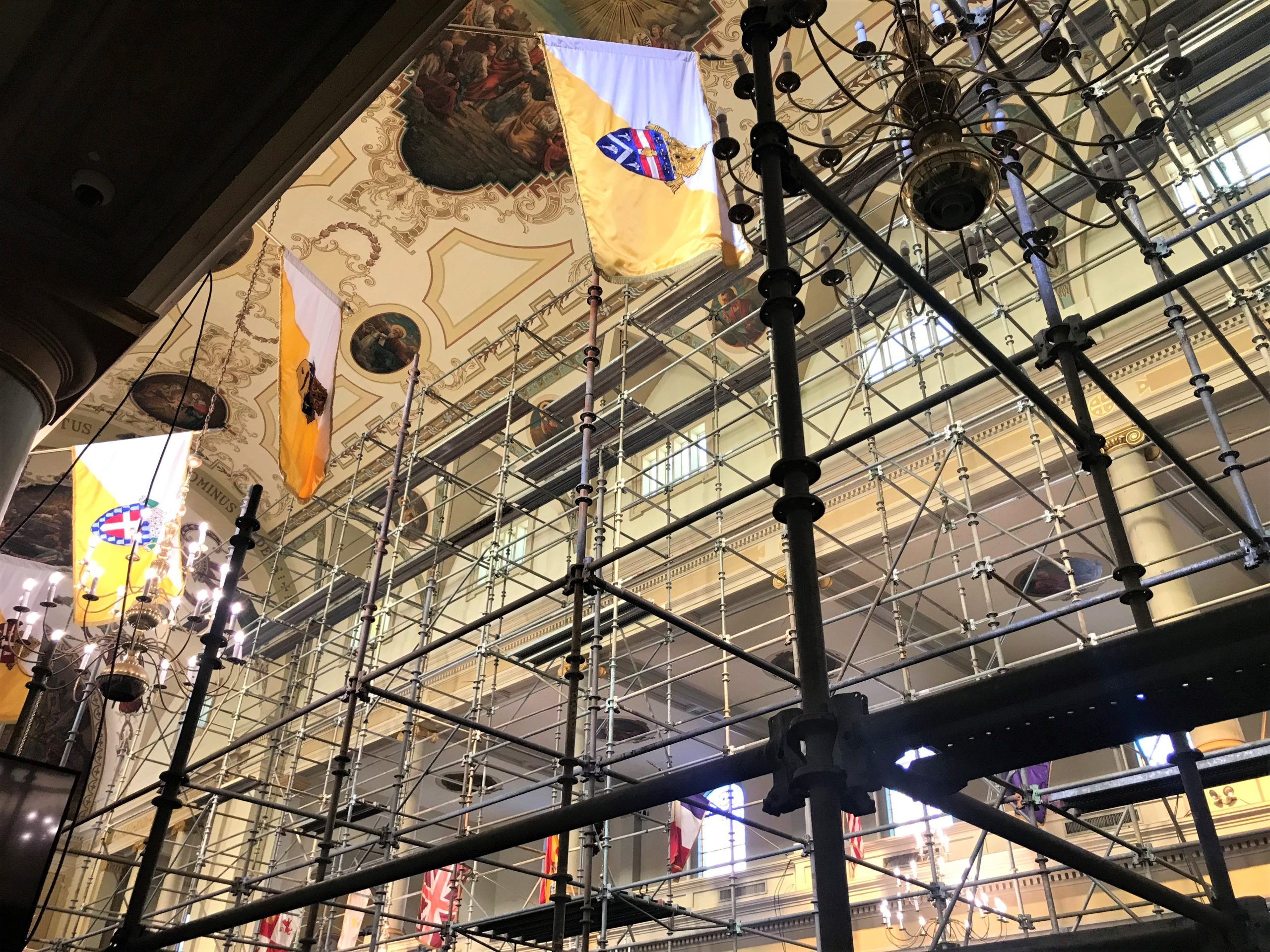
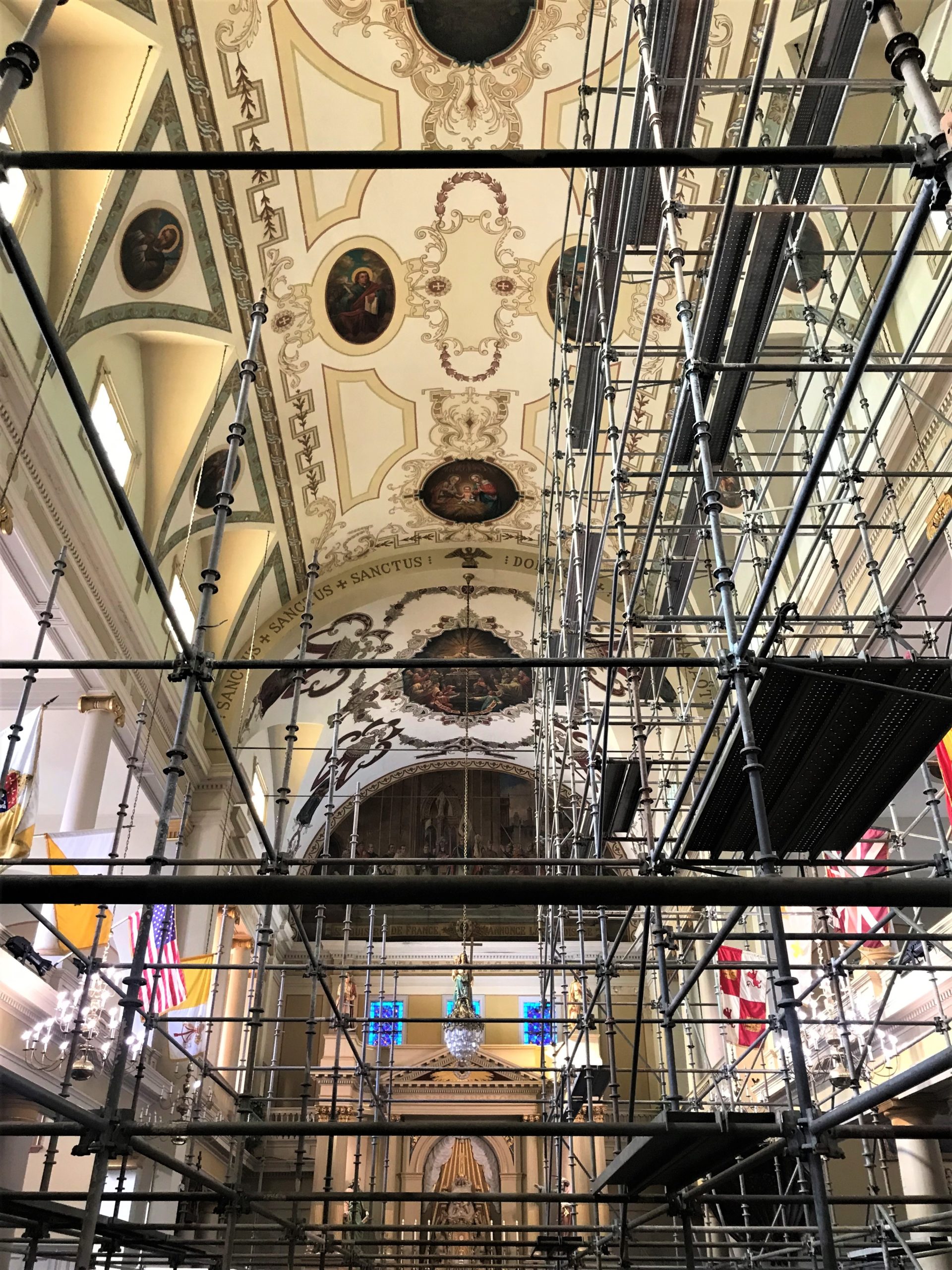
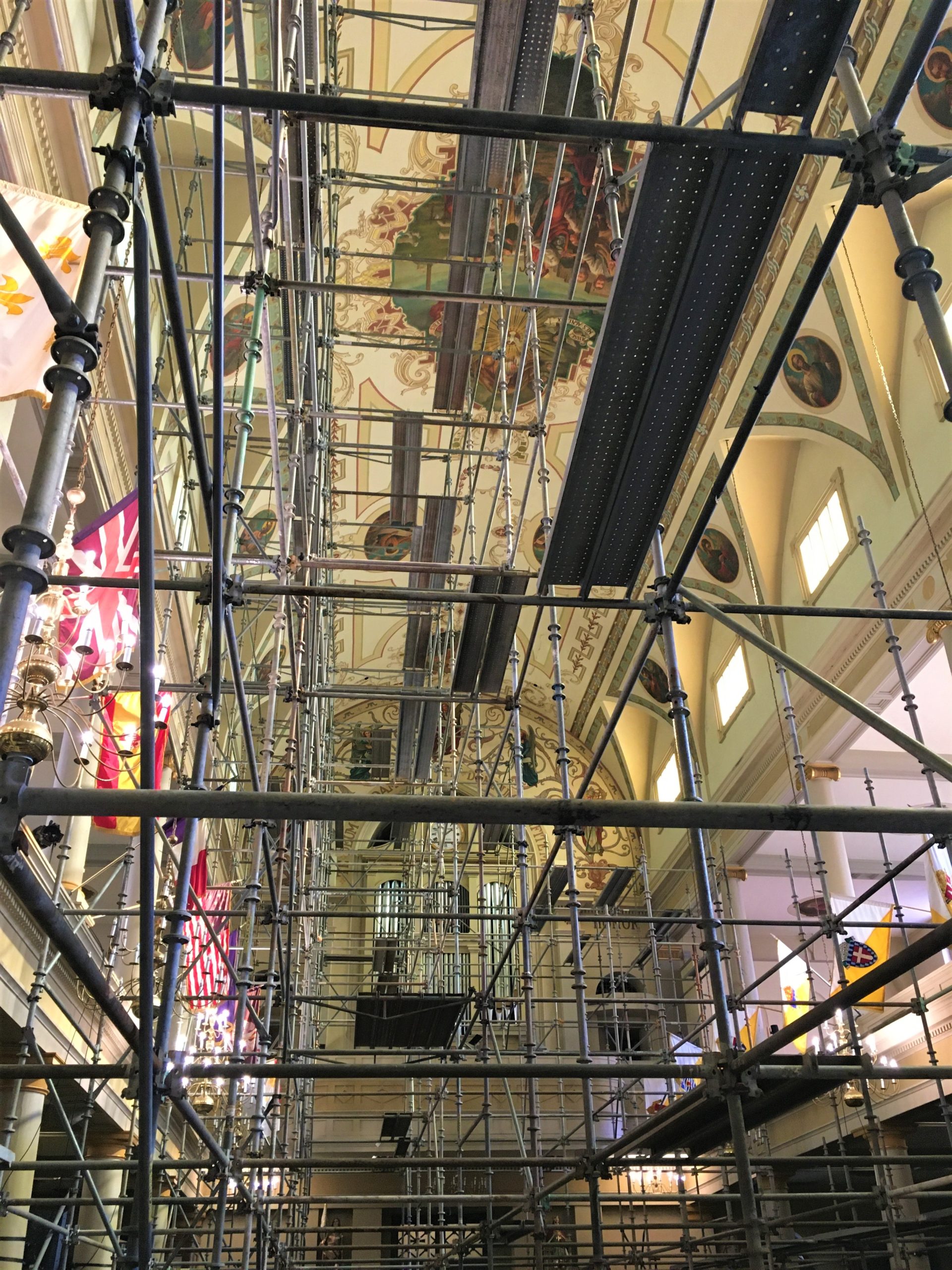

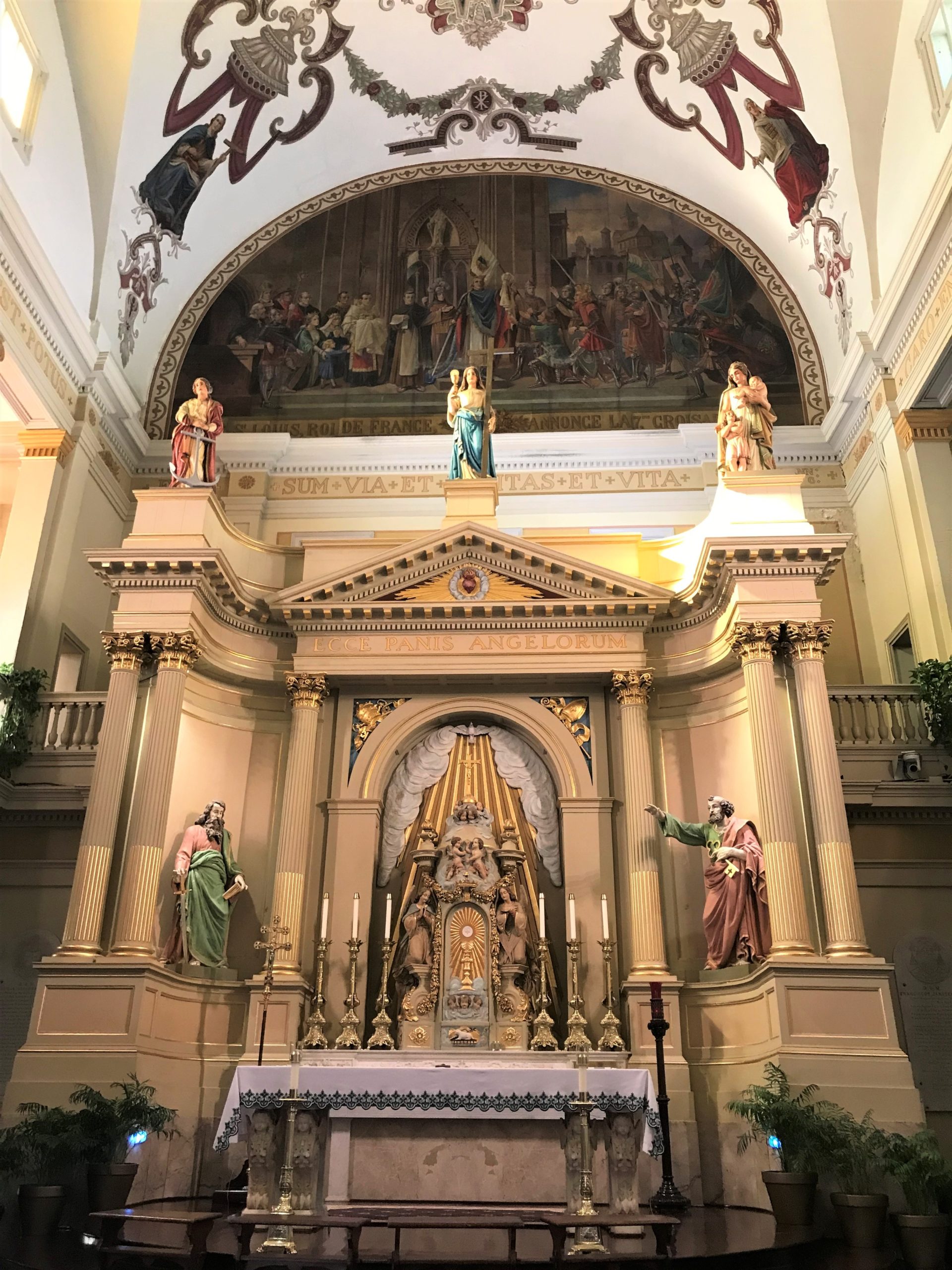
One thing we didn’t like? Remember I’ve talked about the great street performers here in the French Quarter? Well, there was this guy who performed several times while we were here today. Fine. But his sound system had to be set on ear-splitting, because you could here him everywhere – even inside. Why in the world no one told him to turn it down, is beyond me. When we were here before, everyone was respectful with their noise level. I’m certain the other performers weren’t happy, as they were drowned out.
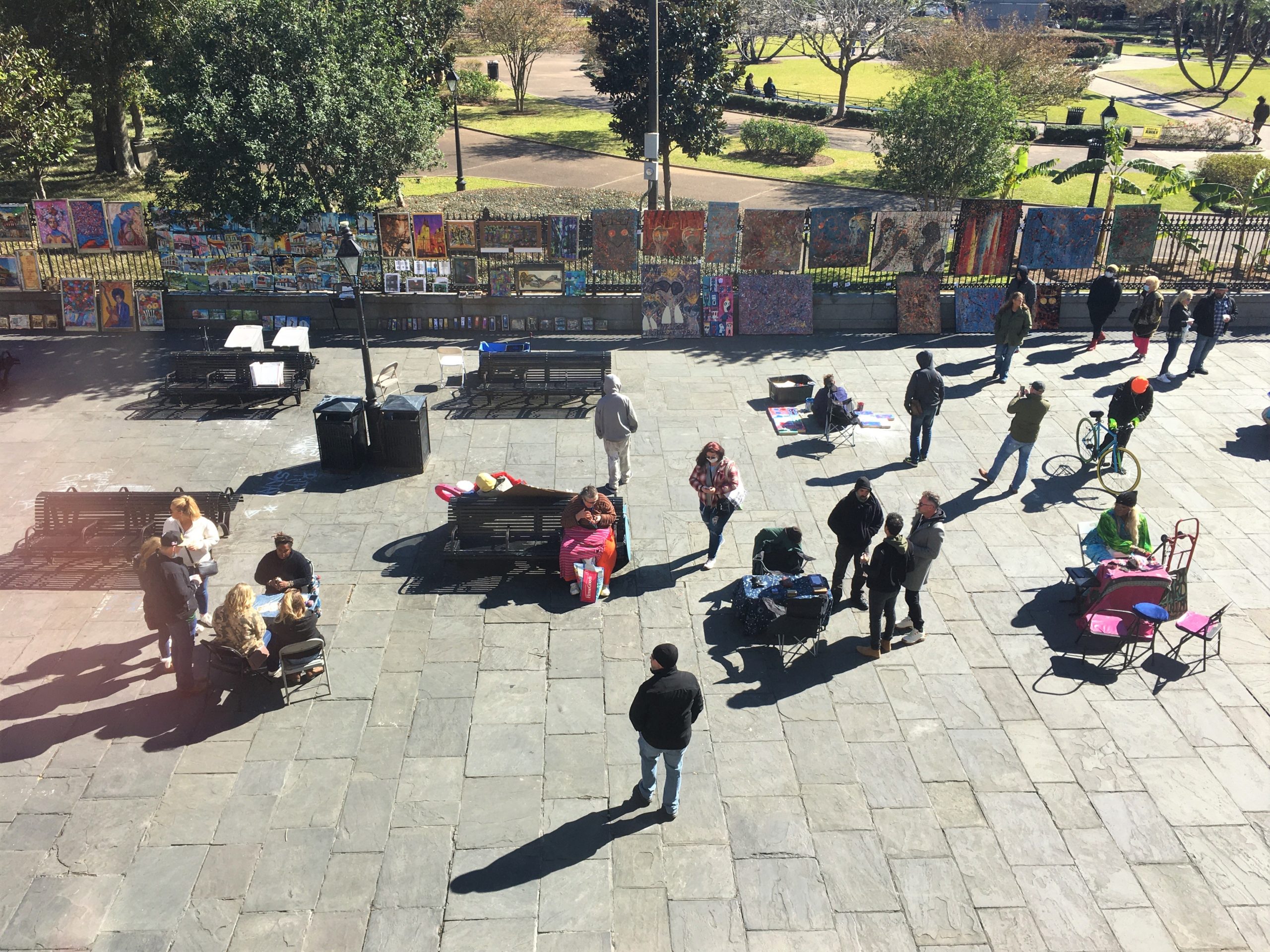
that overlooks the square.

Speaking of street performers . . . we got conned today. In the past, we’d seen people who stand very still and you are just amazed that they can do that! Well, as you’ll see in the picture, there was a guy sitting on top a trash can all painted silver and singing out of key. We really thought there was someone there, and put a dollar in his bucket, but discovered later that it was all staged. lol Smart guy! He was actually walking around the area with is little dog, while his mannequin did all the work. 😊
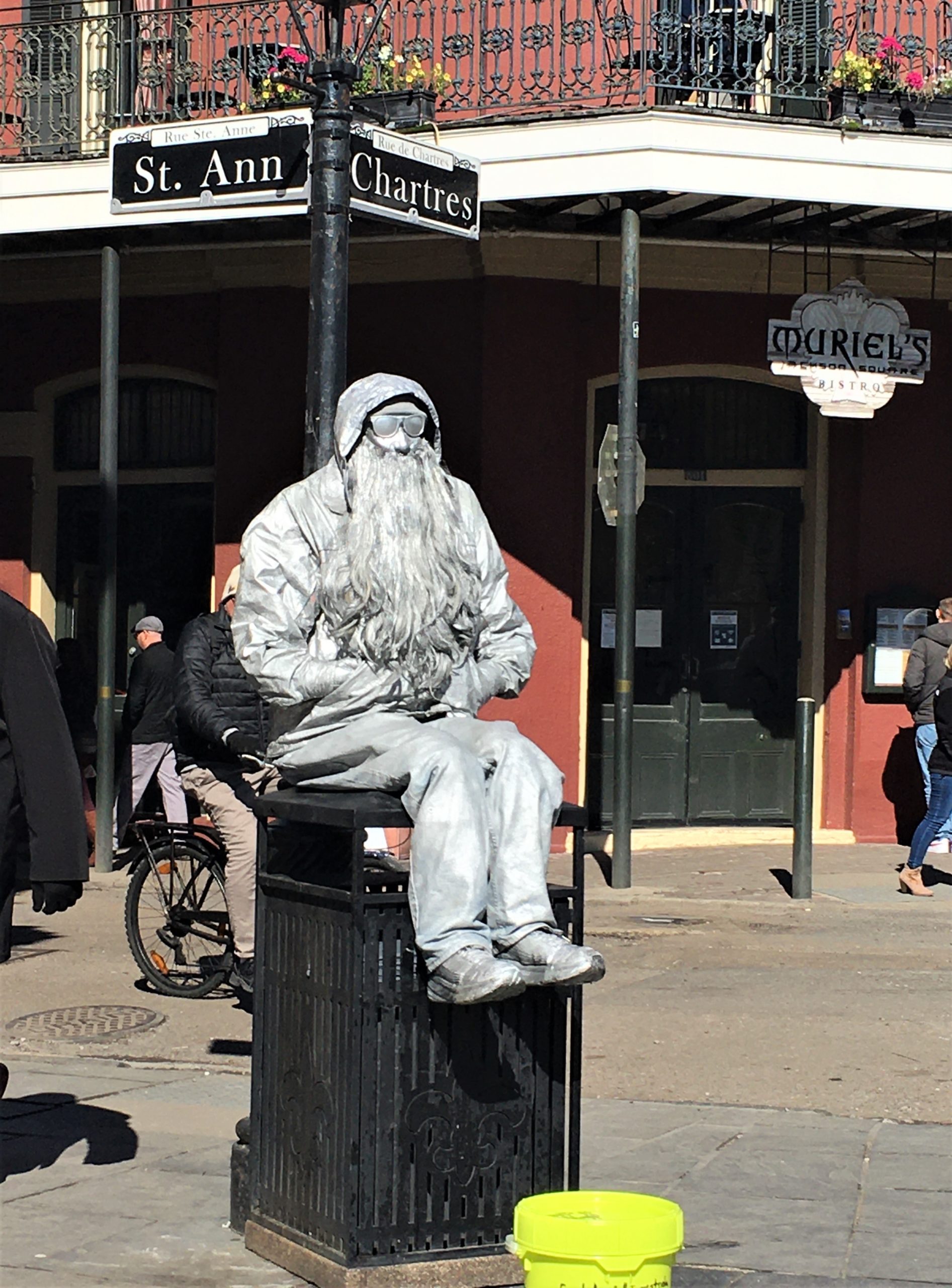
Our final stop was the Cabildo and LA history. There wasn’t as much in here as we expected – especially considering the size of the place. But we enjoyed it, and for about $5 each, we certainly got our money’s worth. Plus, our tickets are good for a year. Not that we’ll use them again, but still. That’s a pretty good deal!

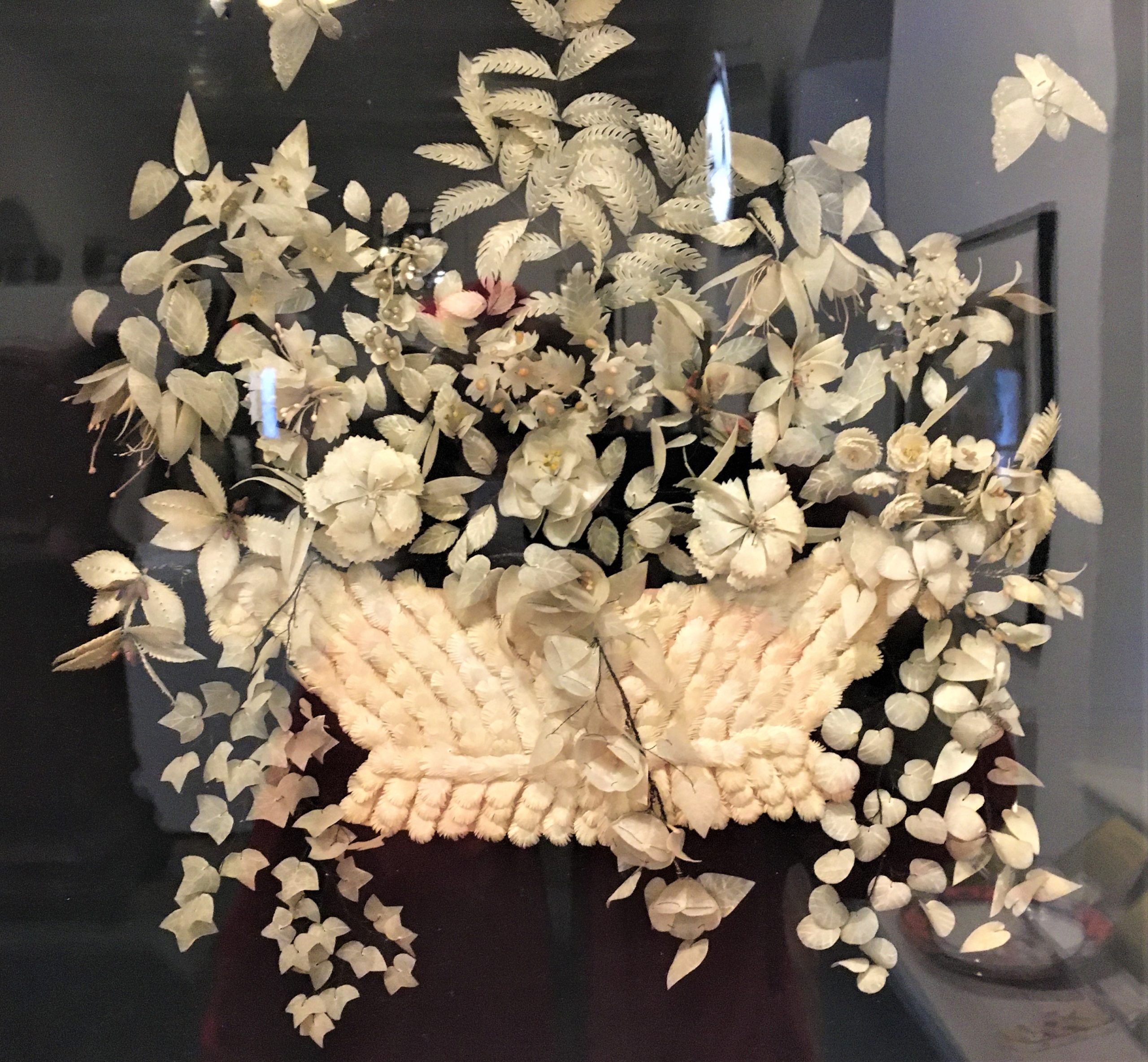
Bet you’ll never guess!


But then, I think about corsets, and Southern summertime with no air conditioning . . .
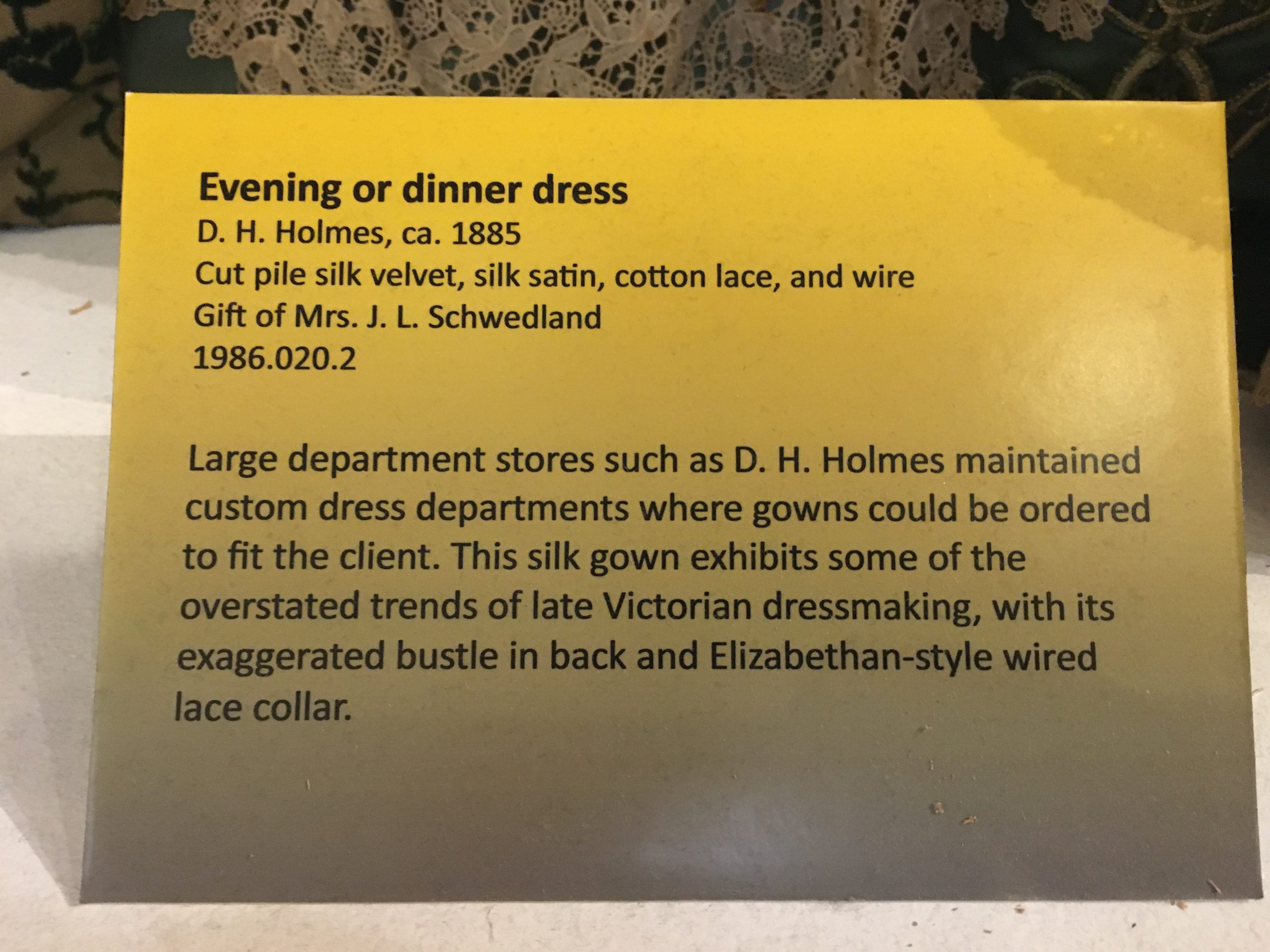
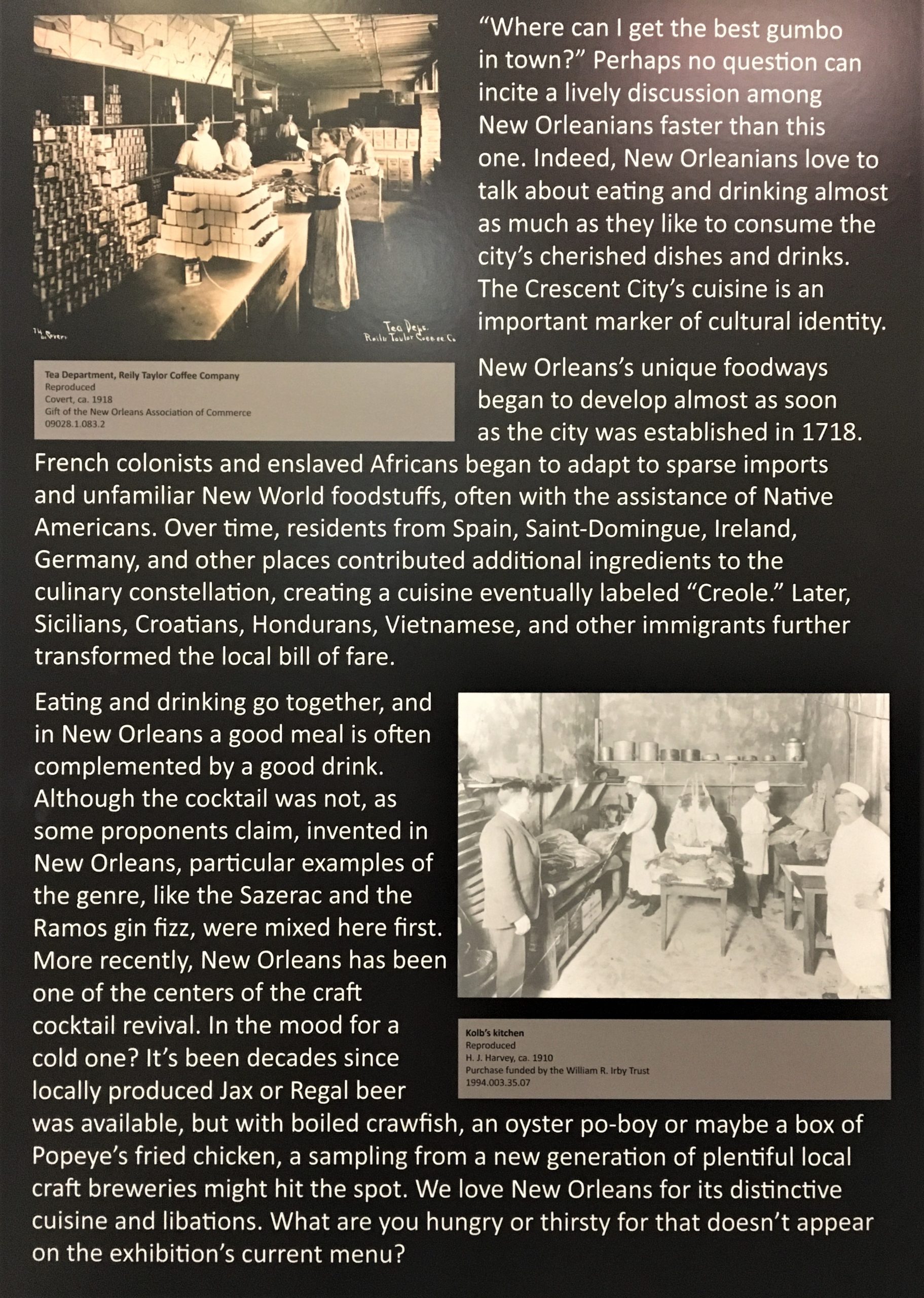
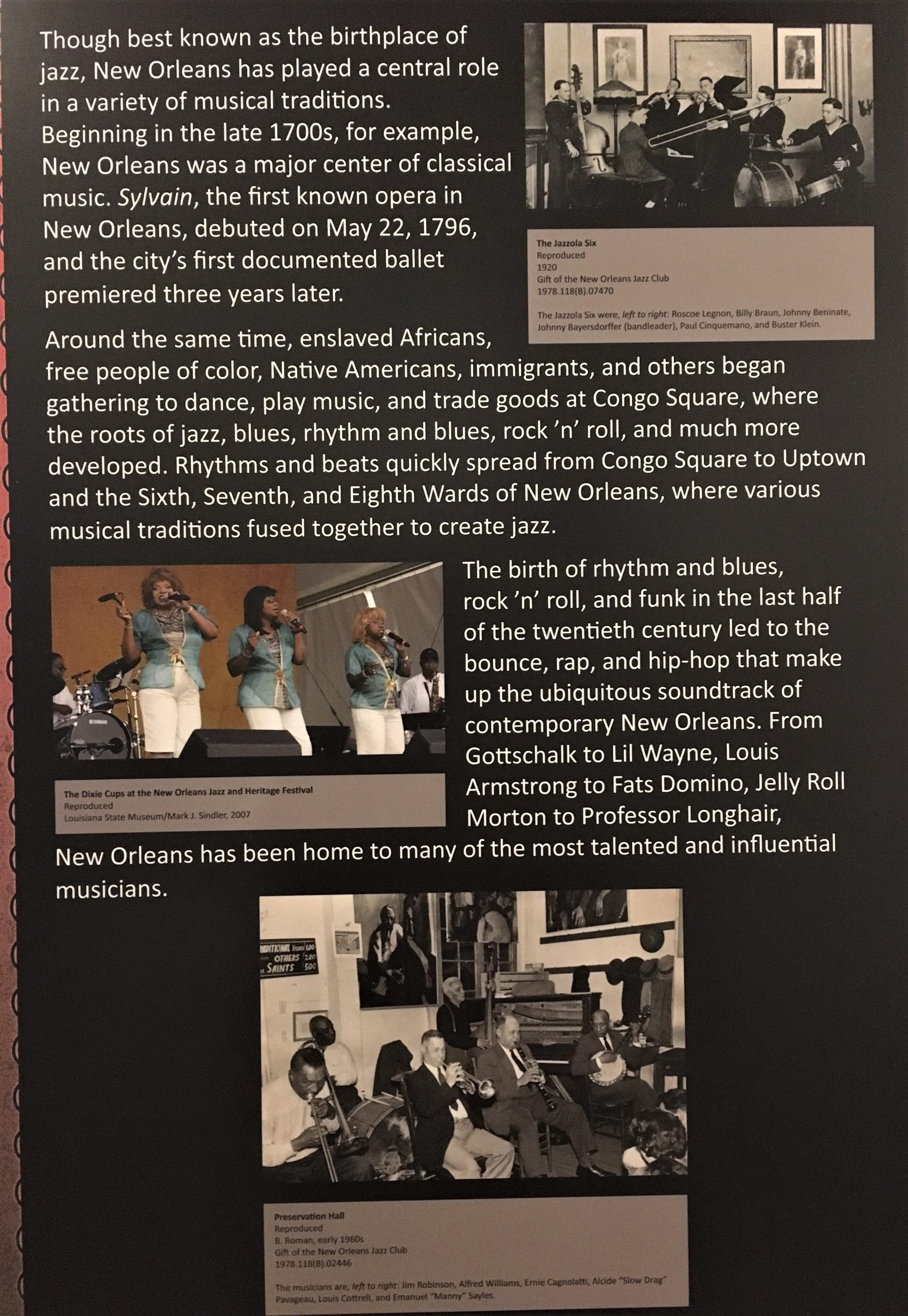




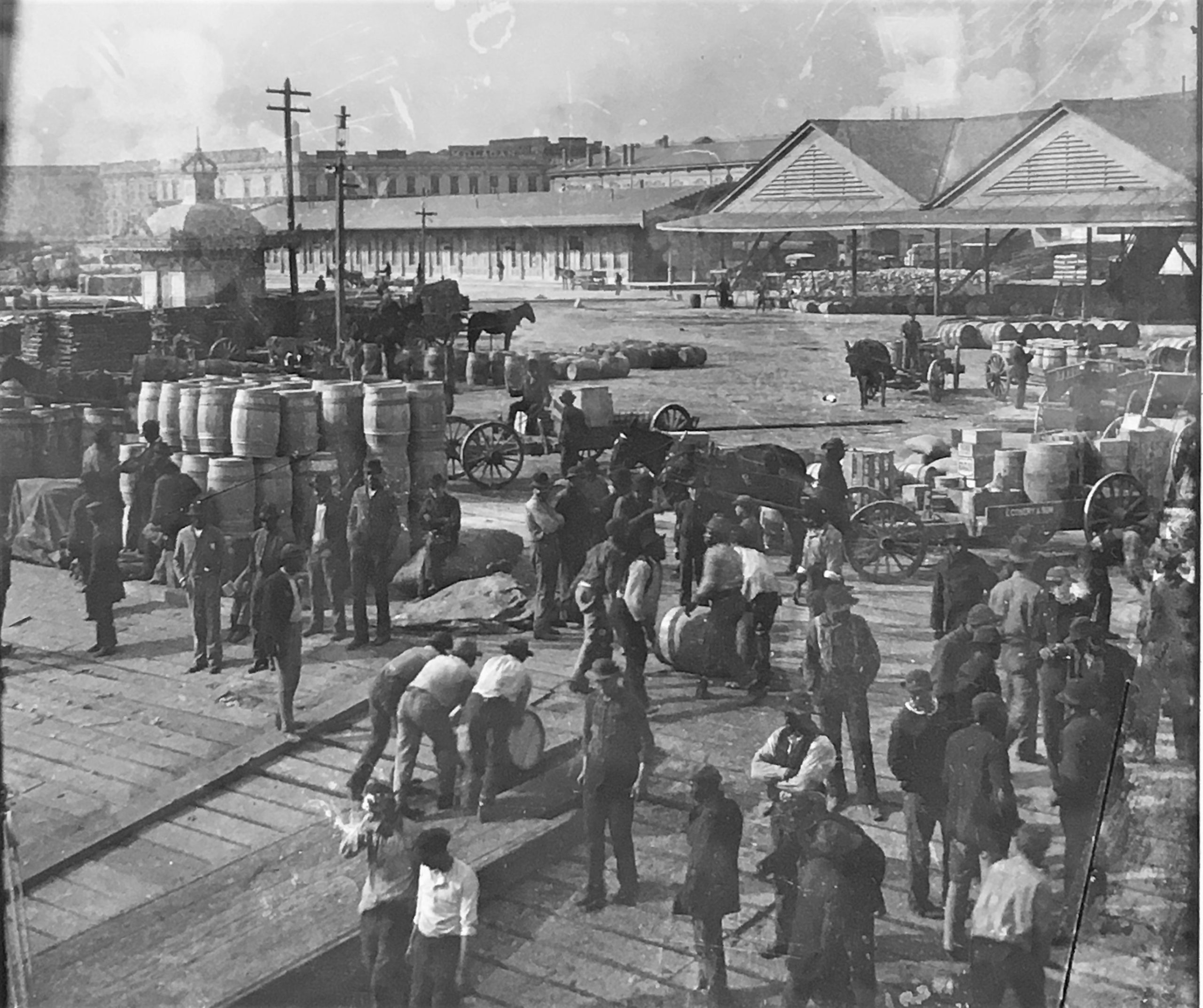
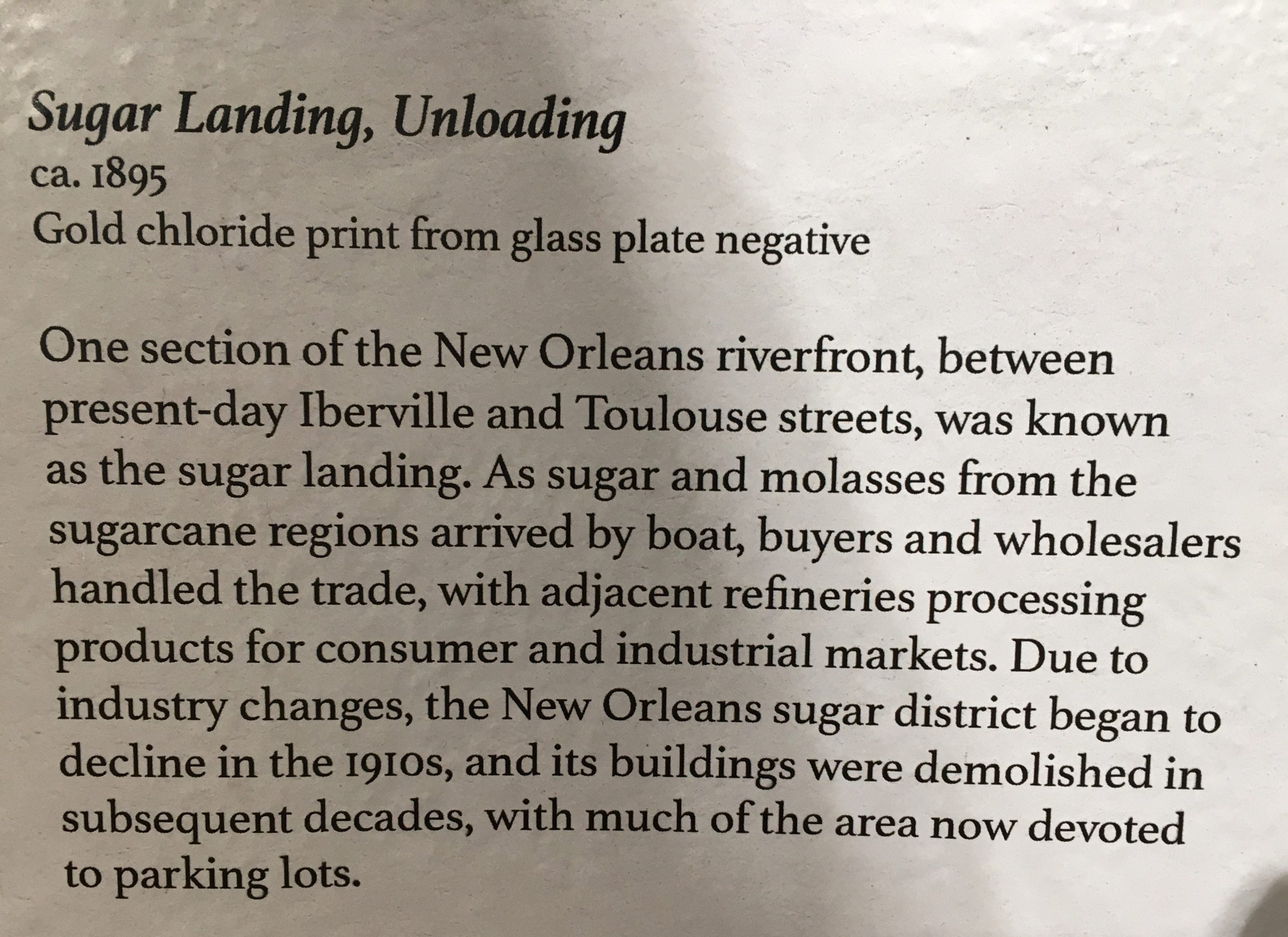
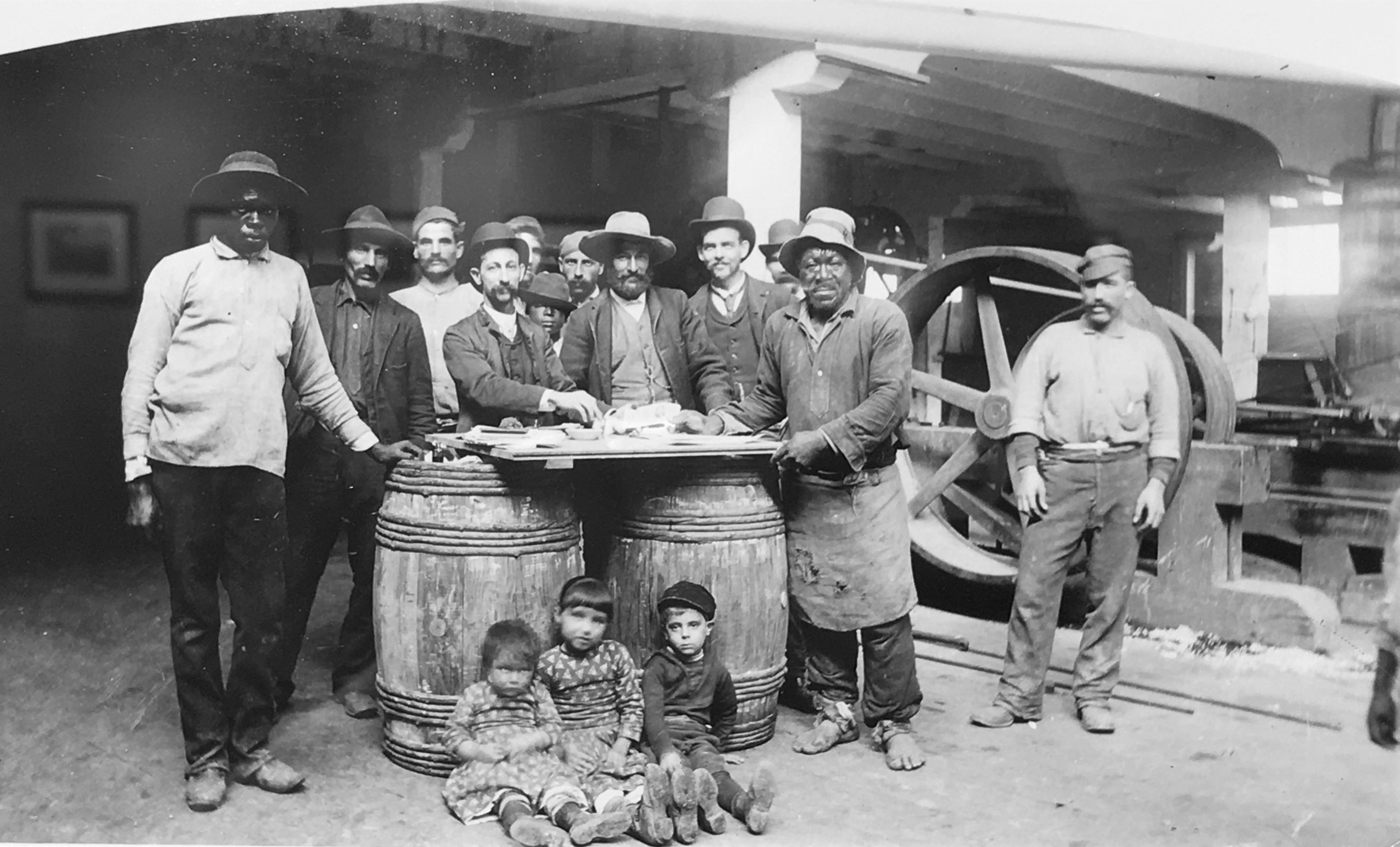
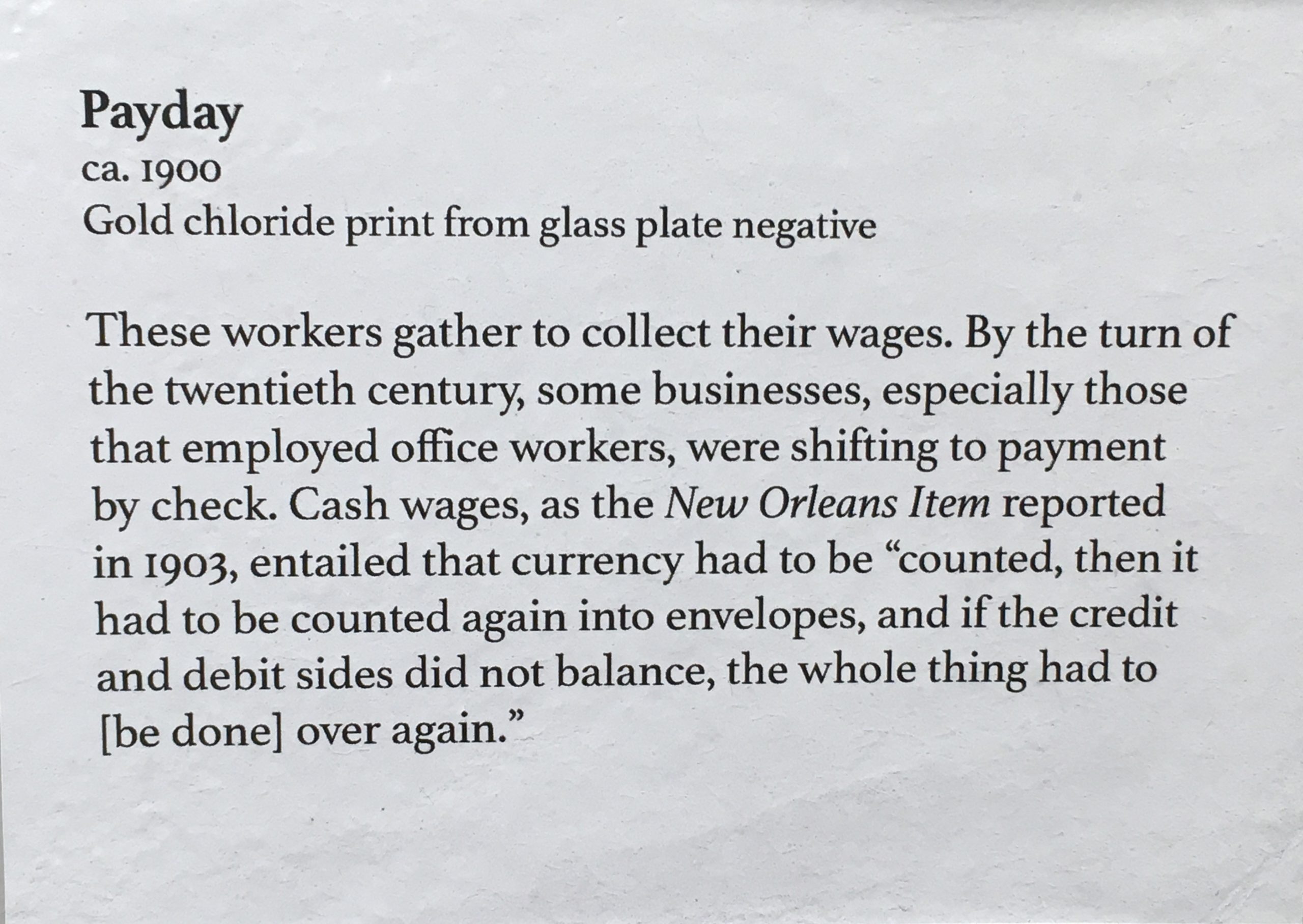
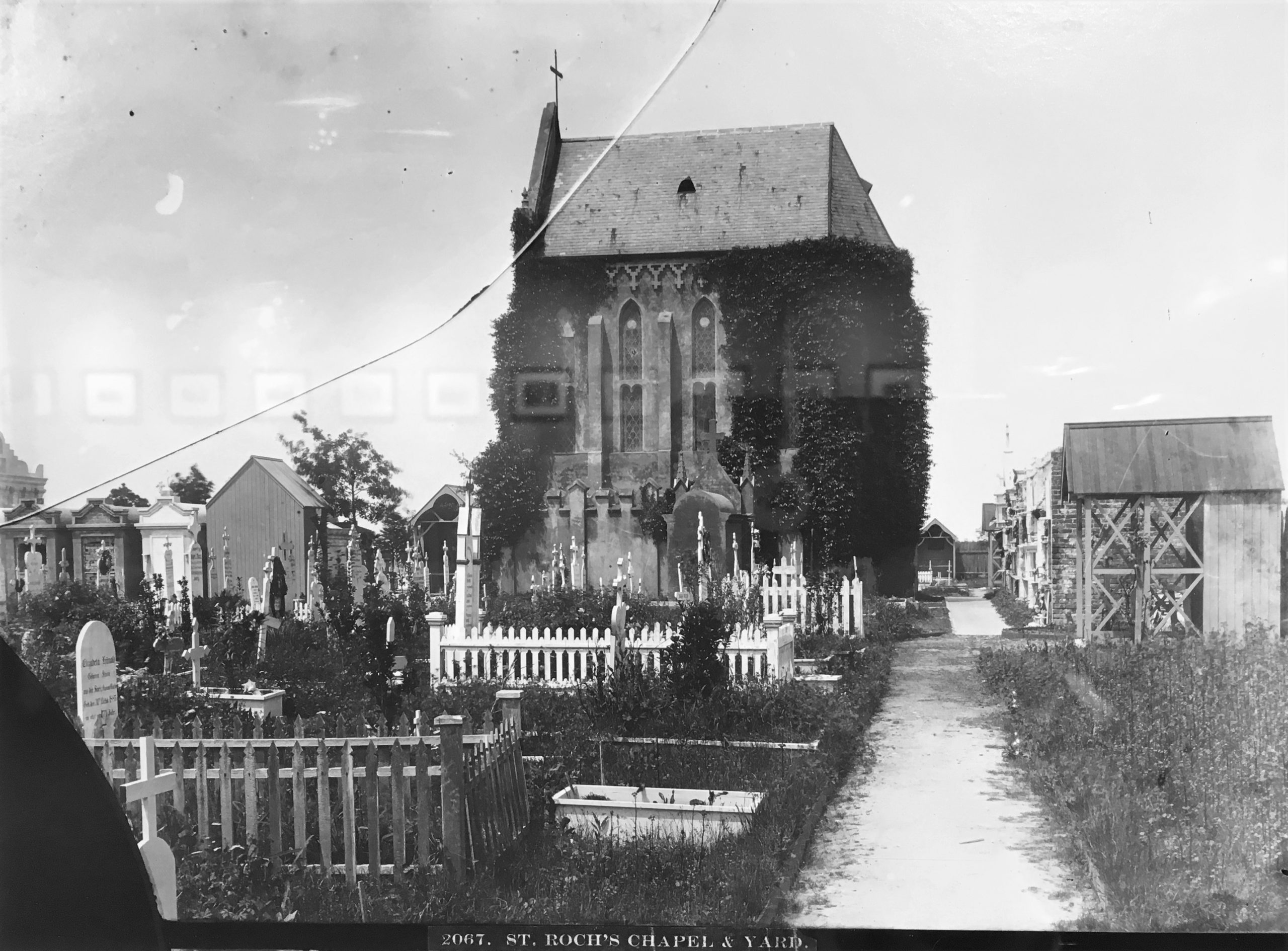
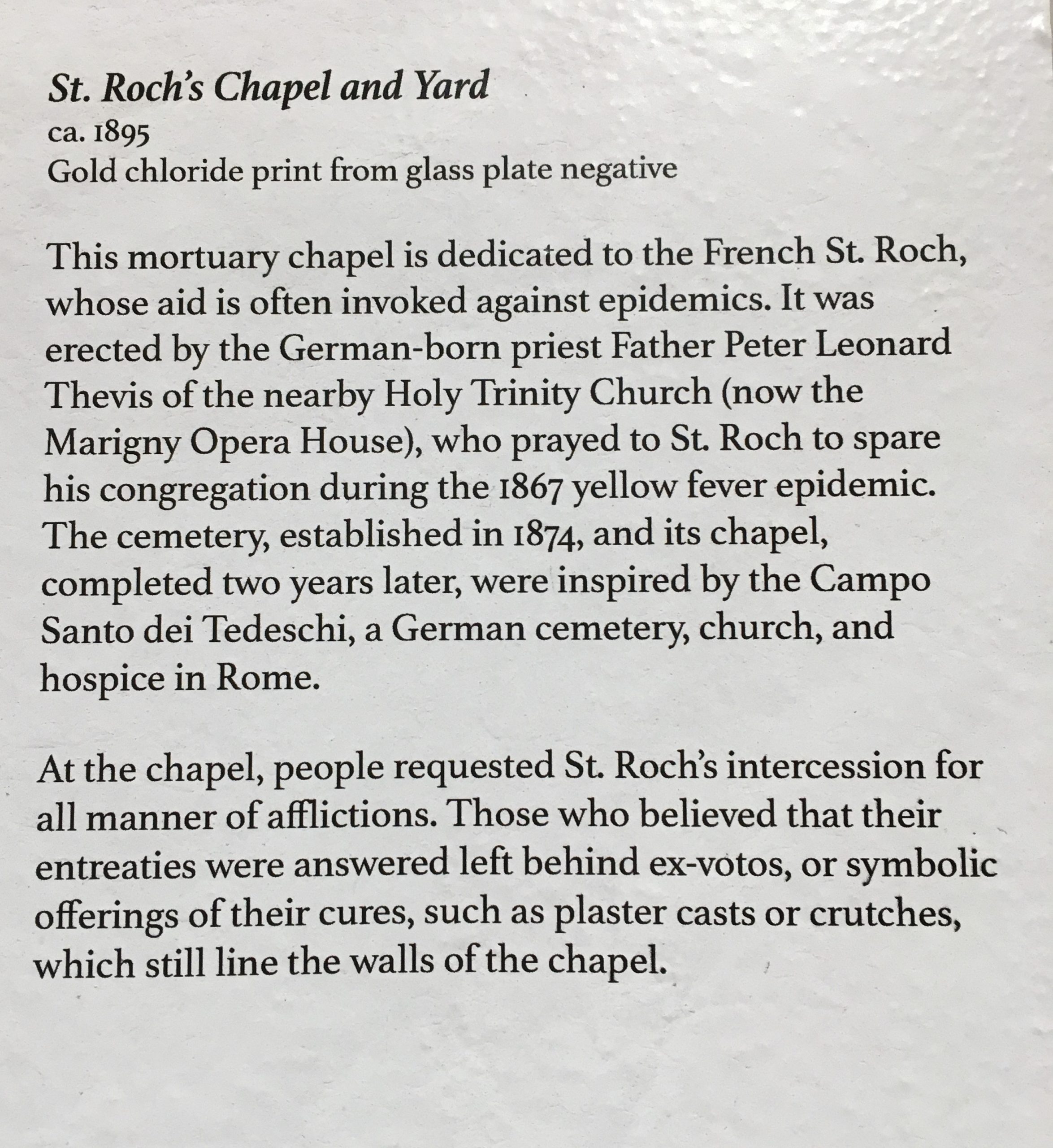
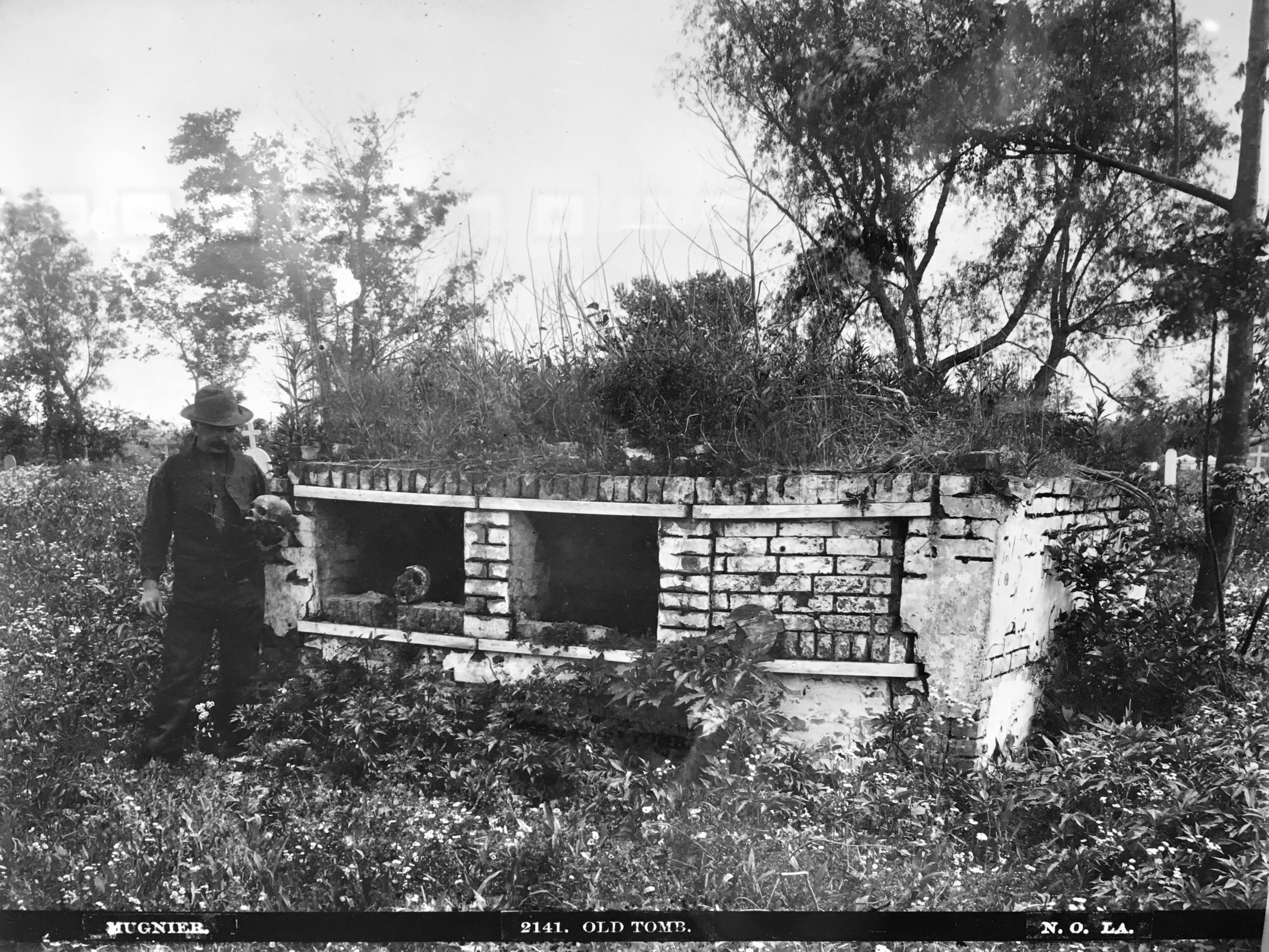

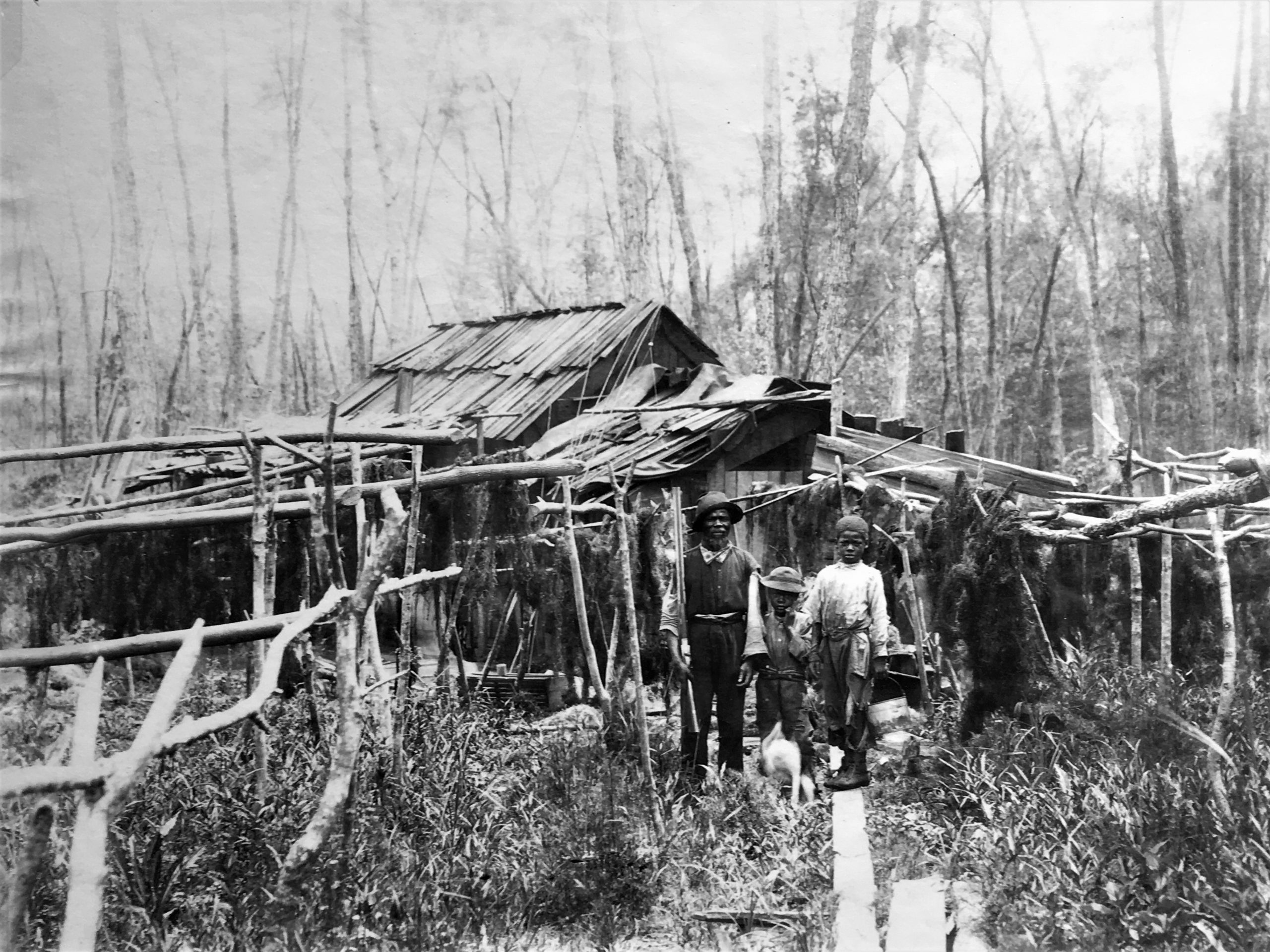
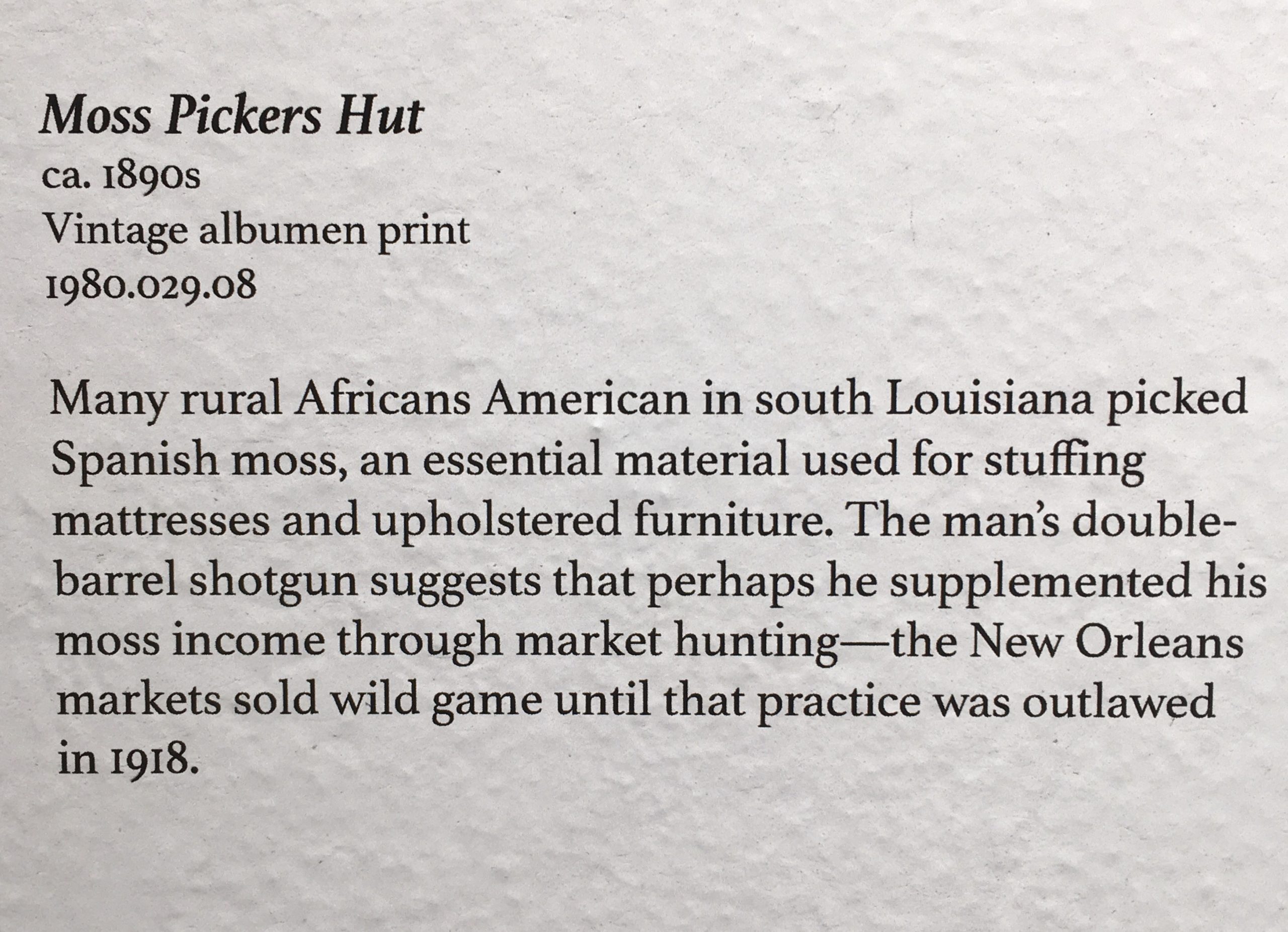
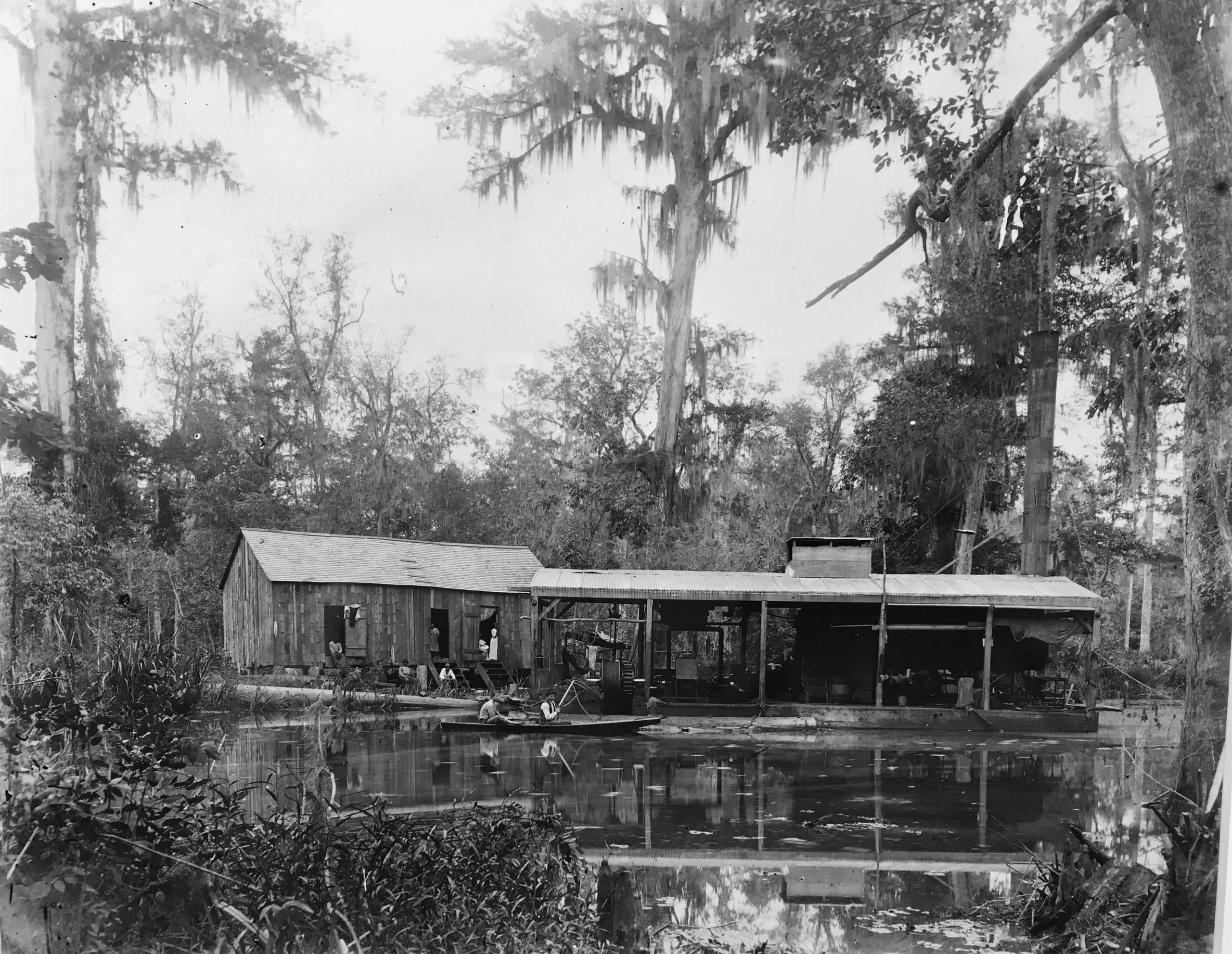

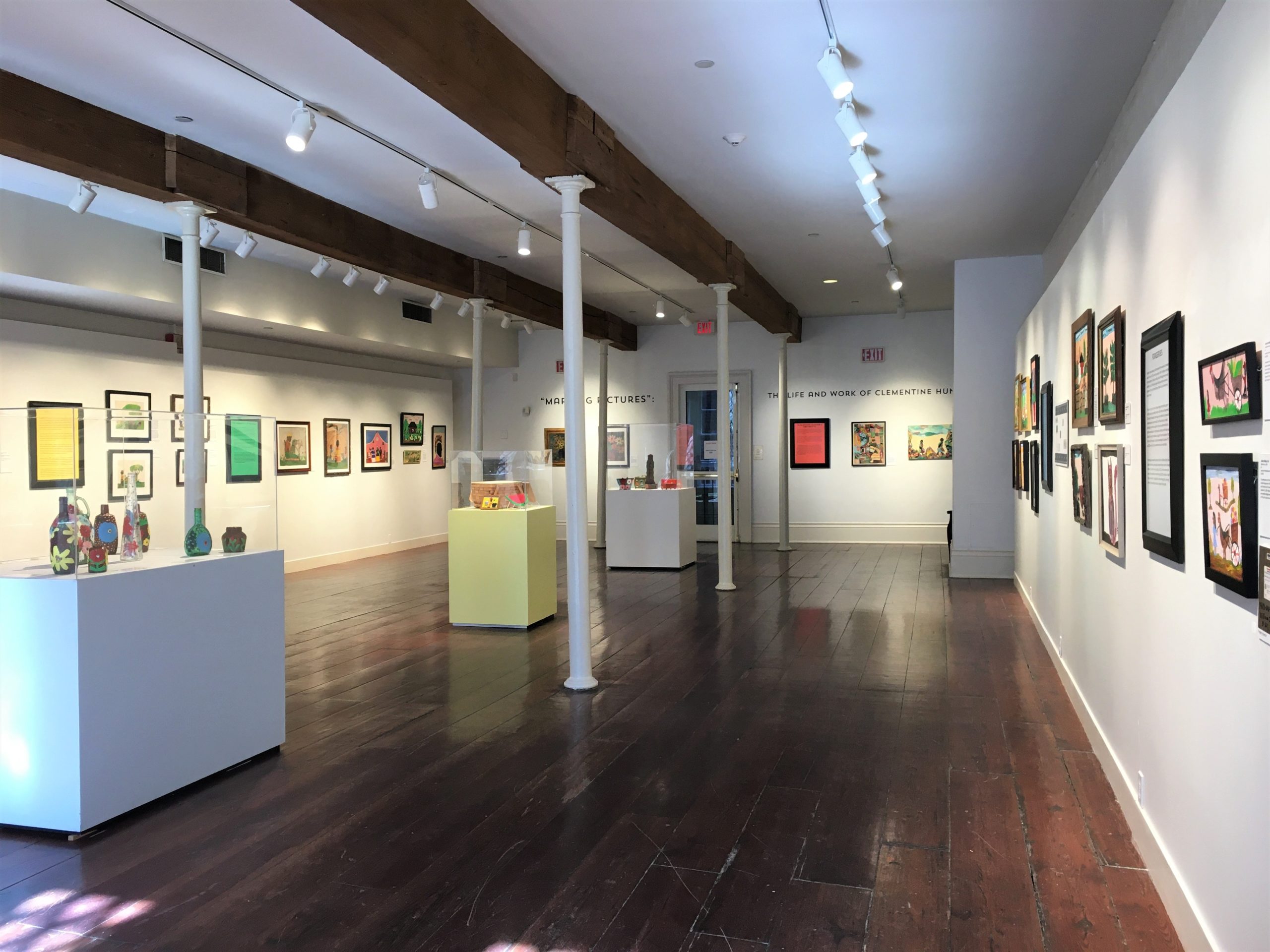
I only took a close up of one. They’re all similar to the Pink Cat.
Why she’s considered a great artist, I’m not sure.
We even read that forgers were trying to pass of their work as hers to make money.
She has a wonderful story, but artistically, we don’t get it . . .




We went upstairs to learn a bit about the importance of the Louisiana Purchase and the War of 1812. I’m not talking about it here, because in a few days, you’ll get more than you probably want to read about. : )


He didn’t want to be called a king, but an emperor.
Note the leaf crown on his head reminiscent of the ancient Roman Emperors.


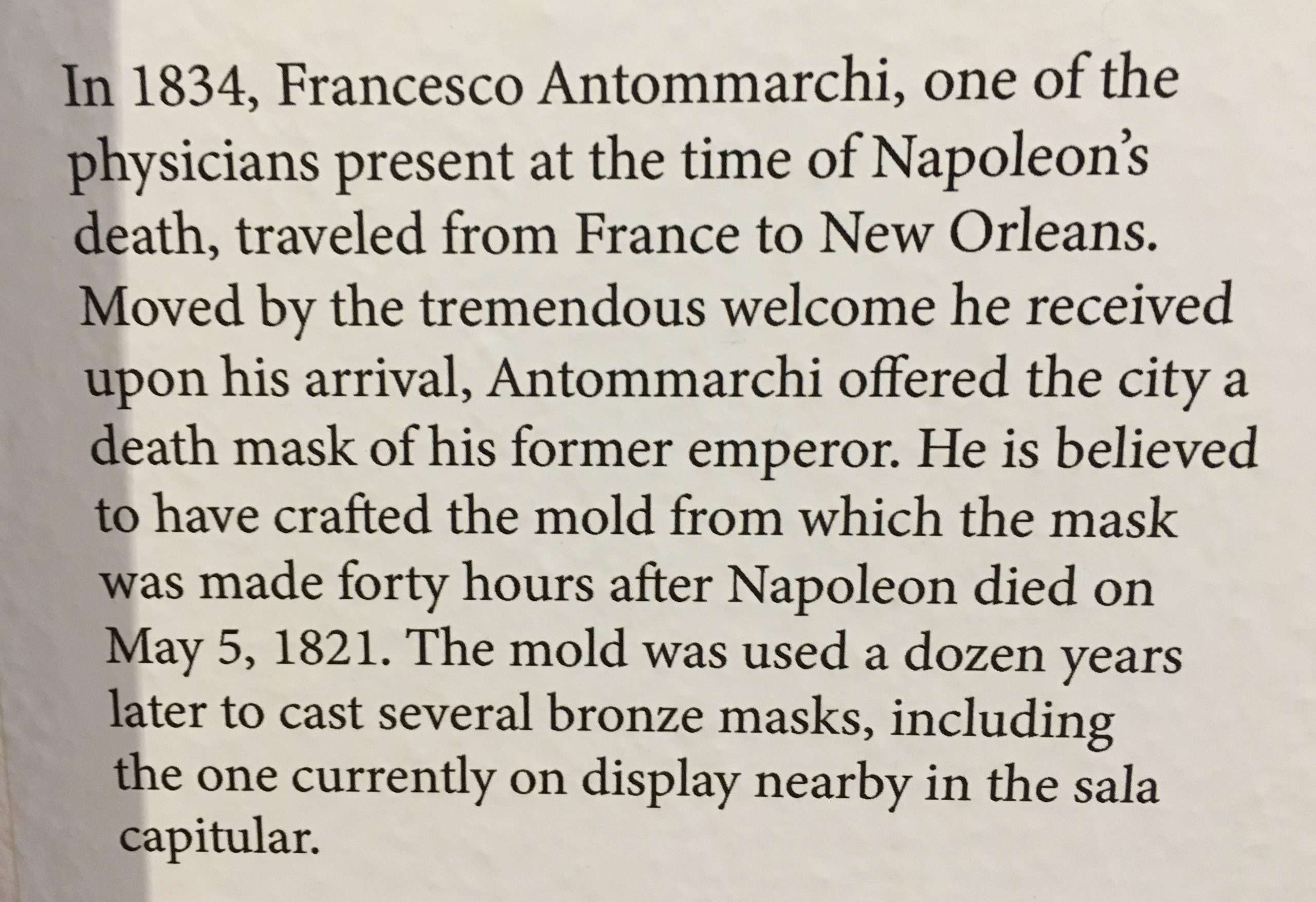
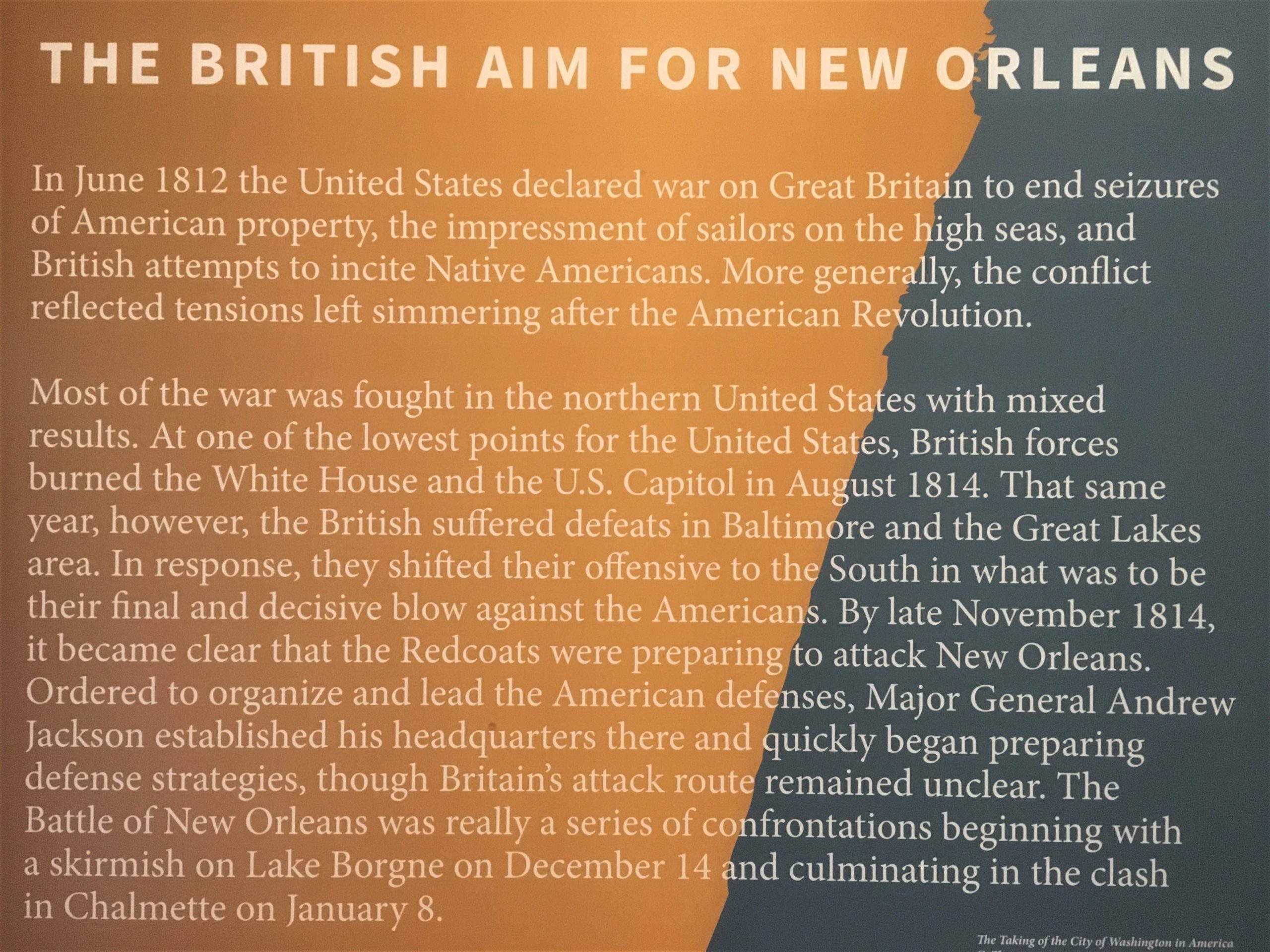
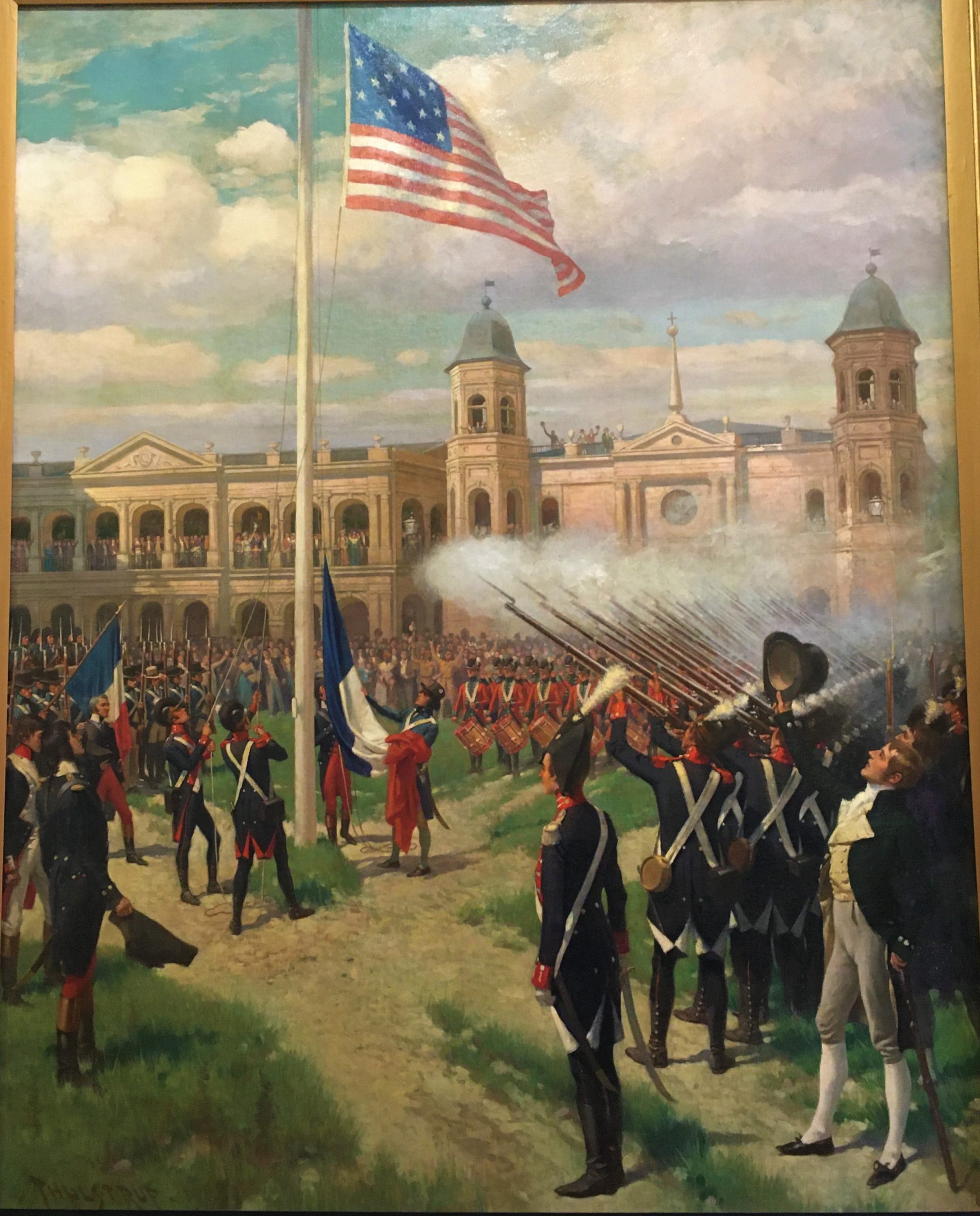
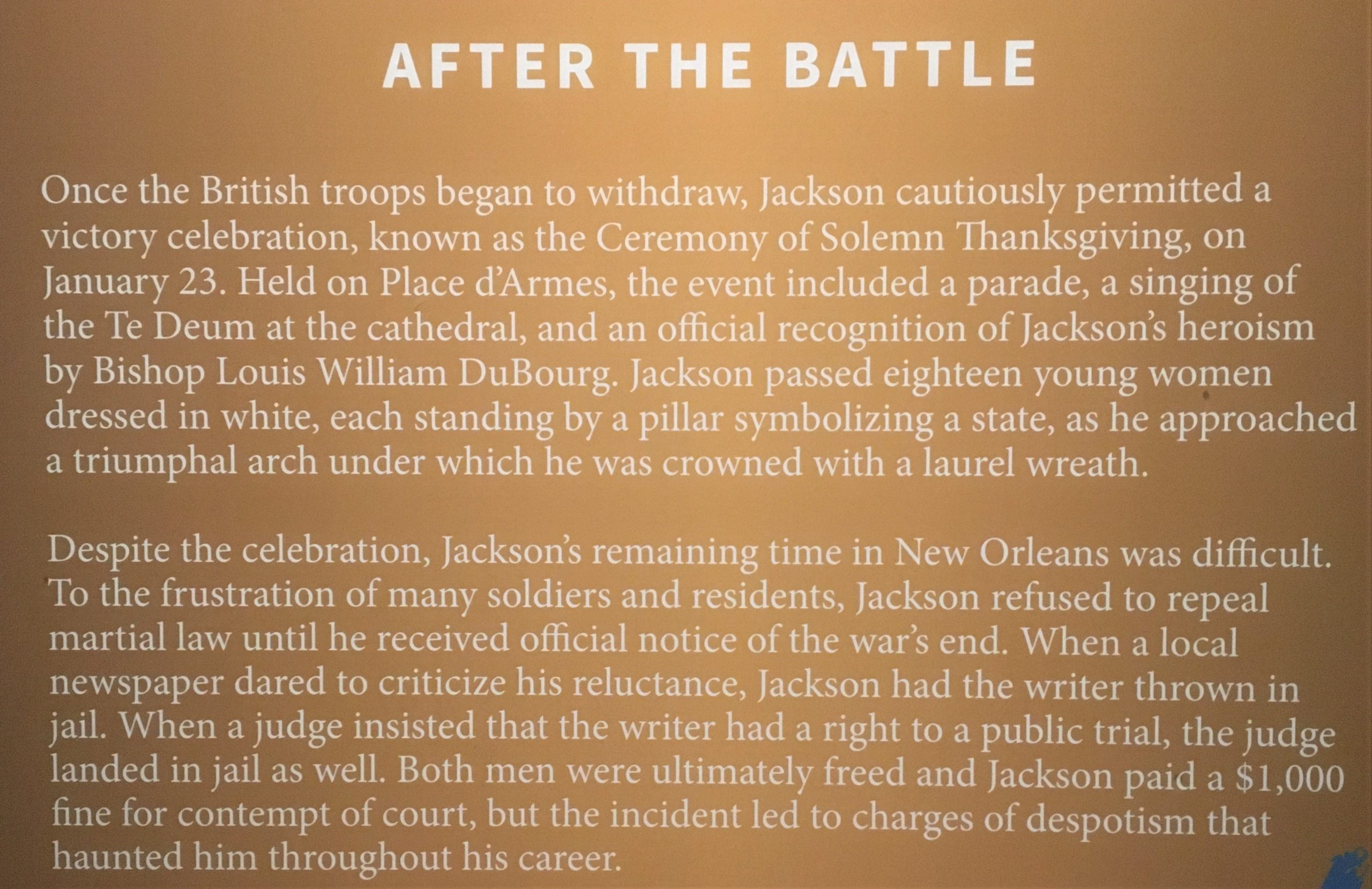
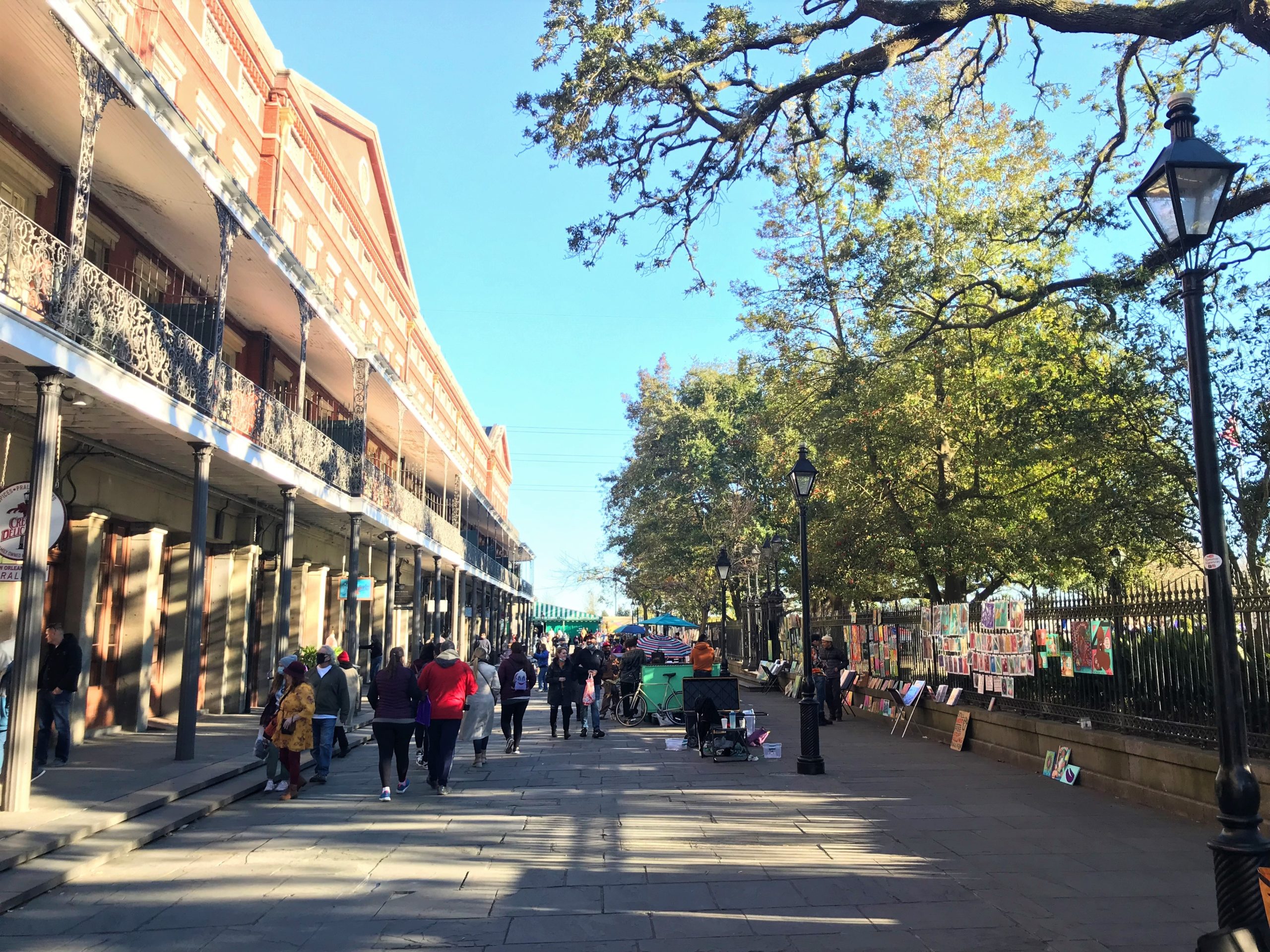
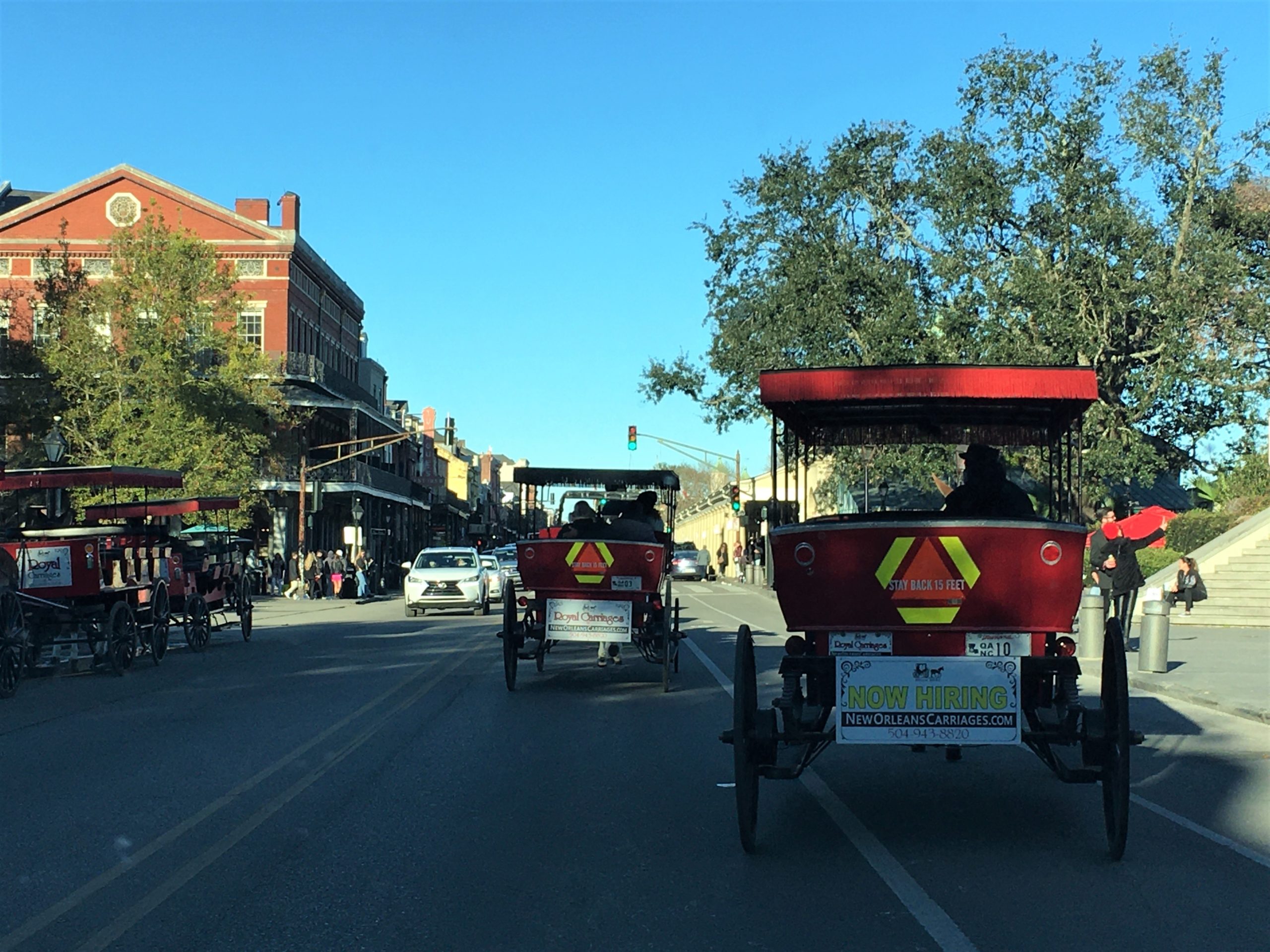
Horses kinda slow things down a bit. : )
All this museum walking brought with it pain in our joints. Why????? There’s just something about all that slow-stepping . . . Thankfully, so far, we recover quickly.
